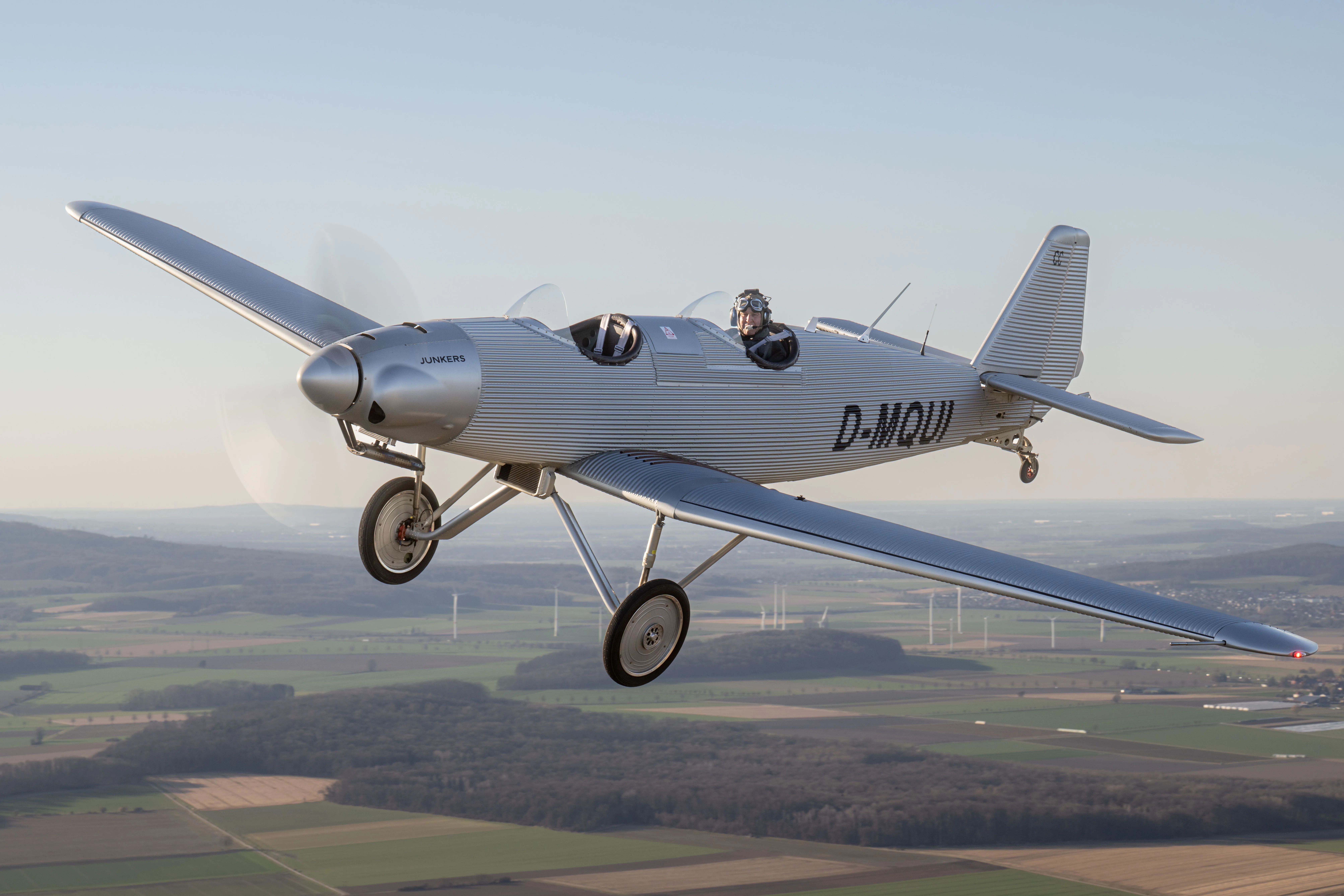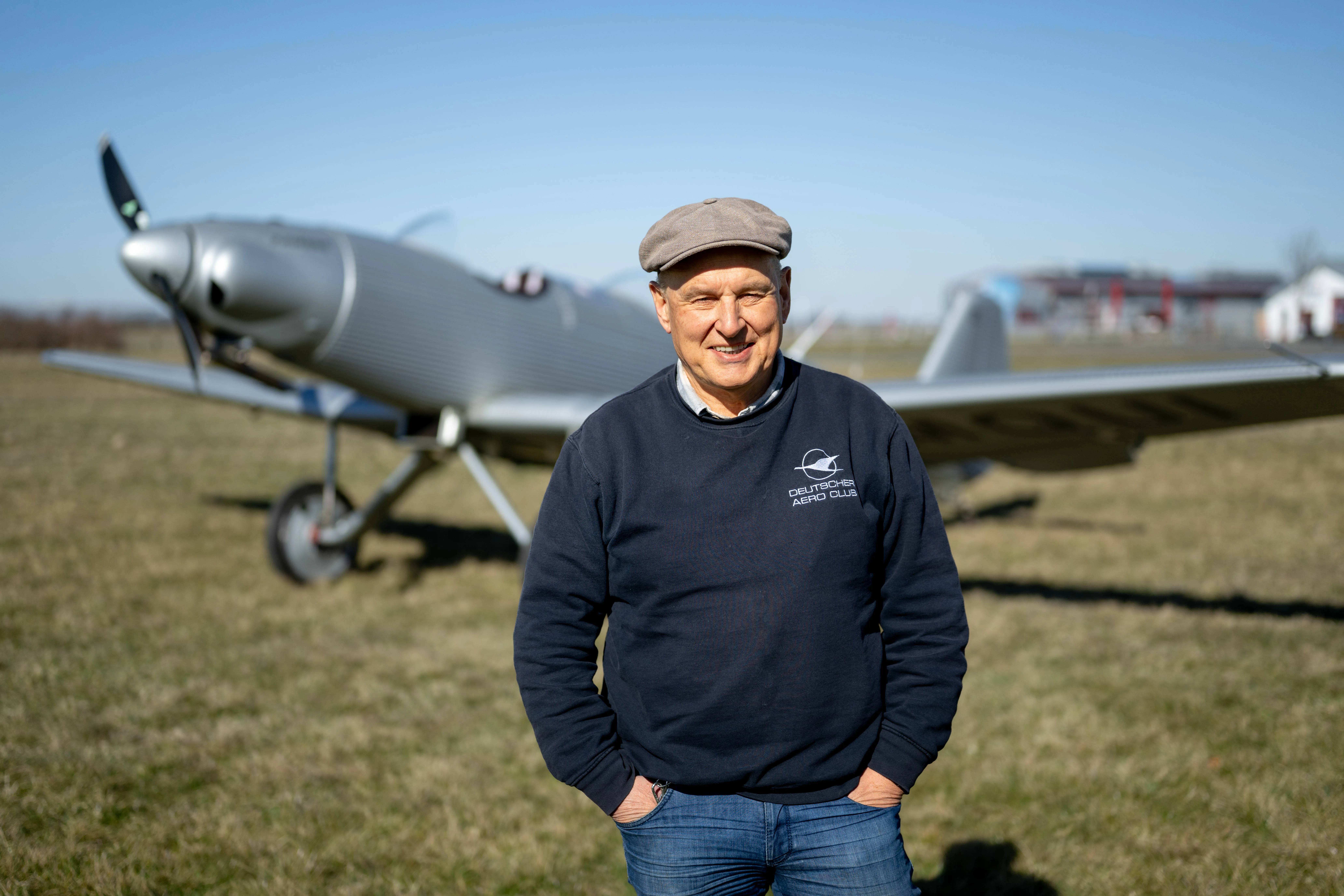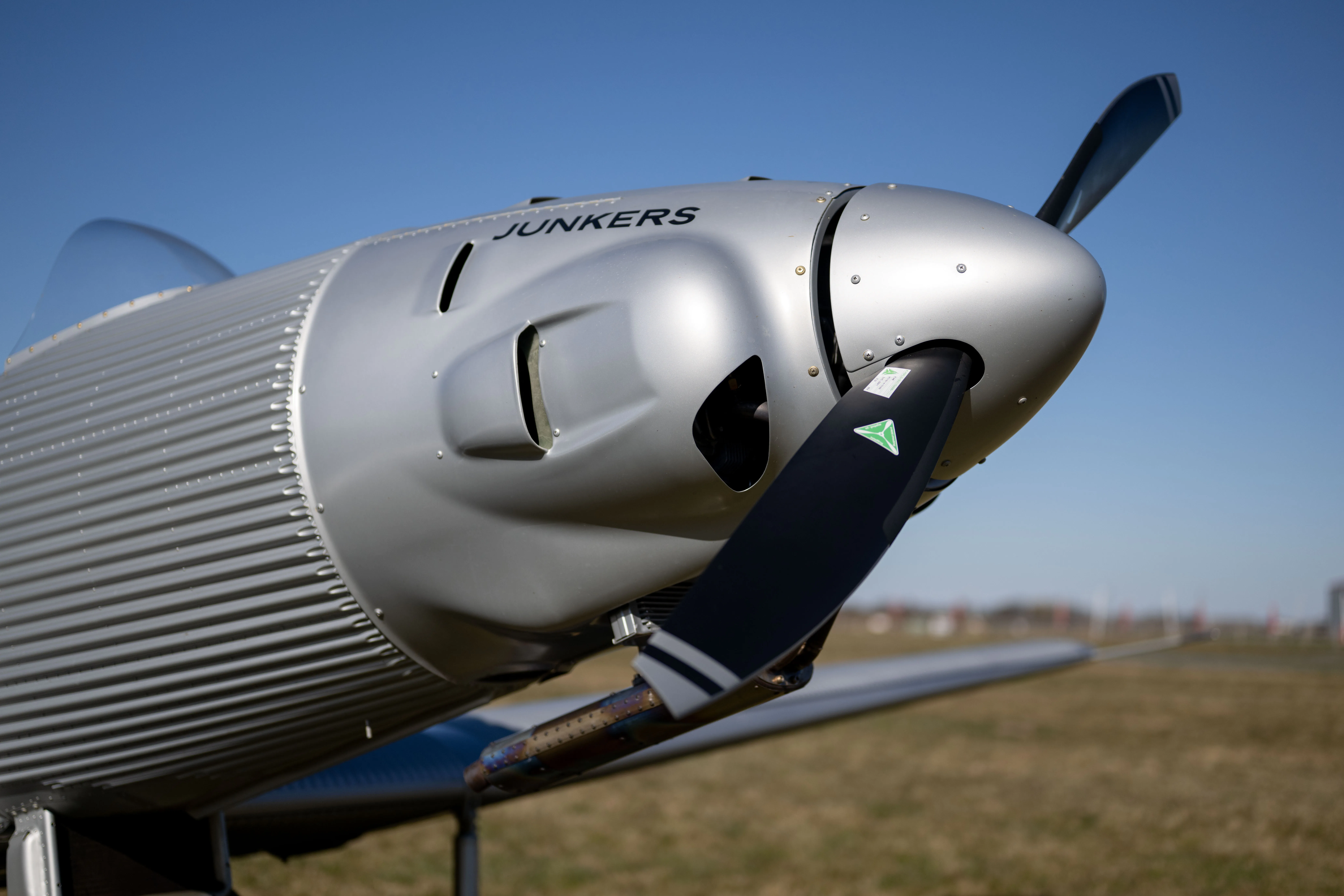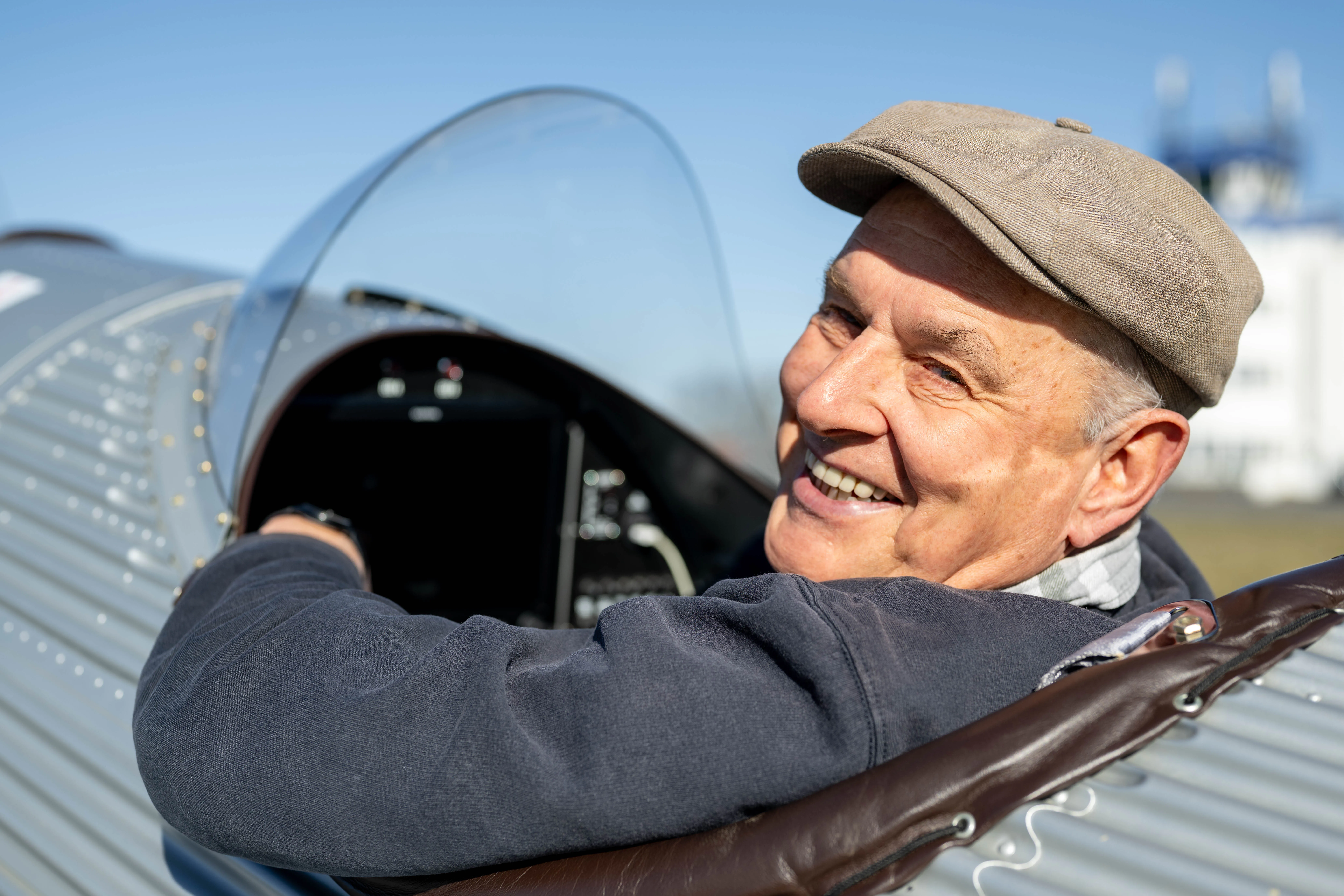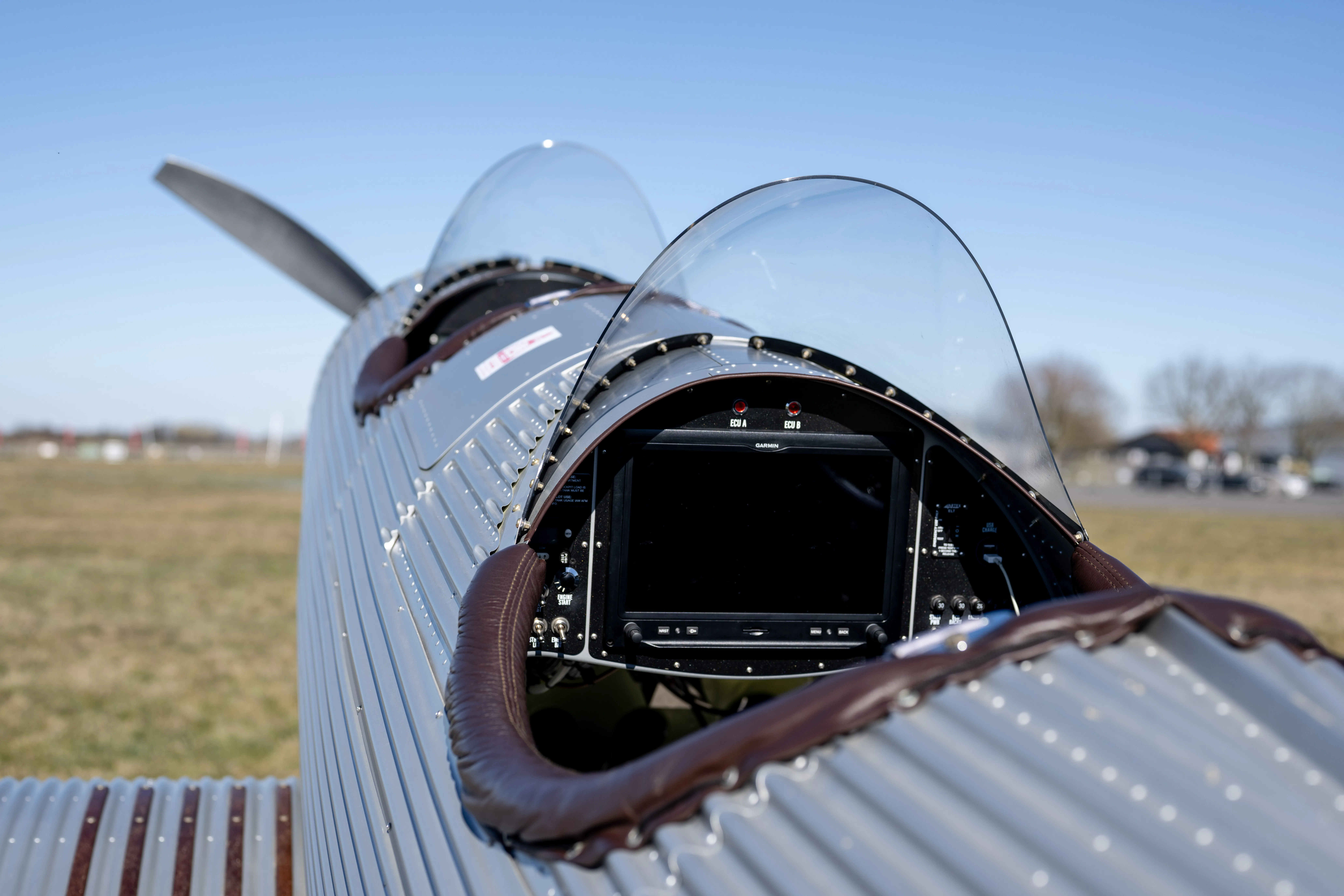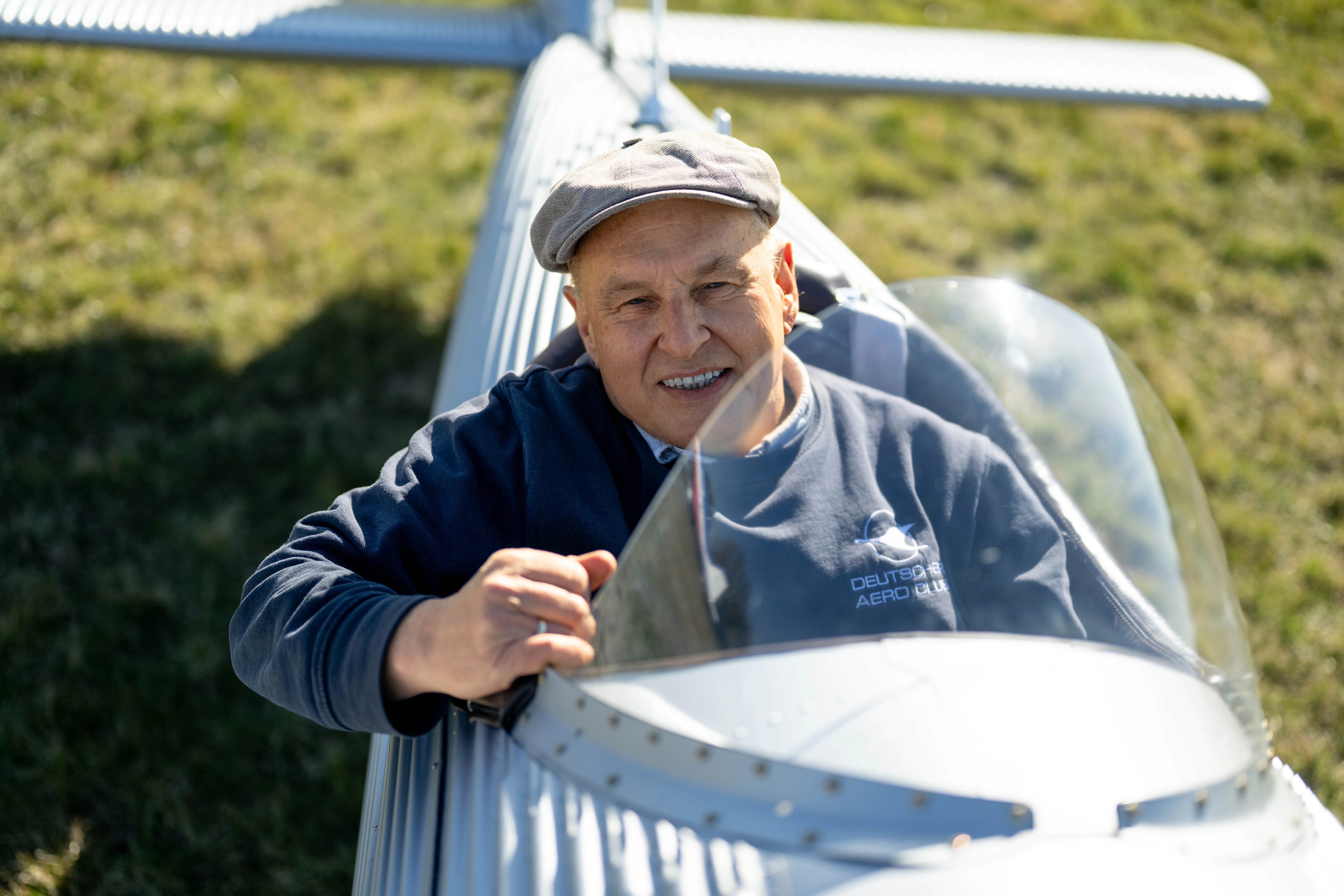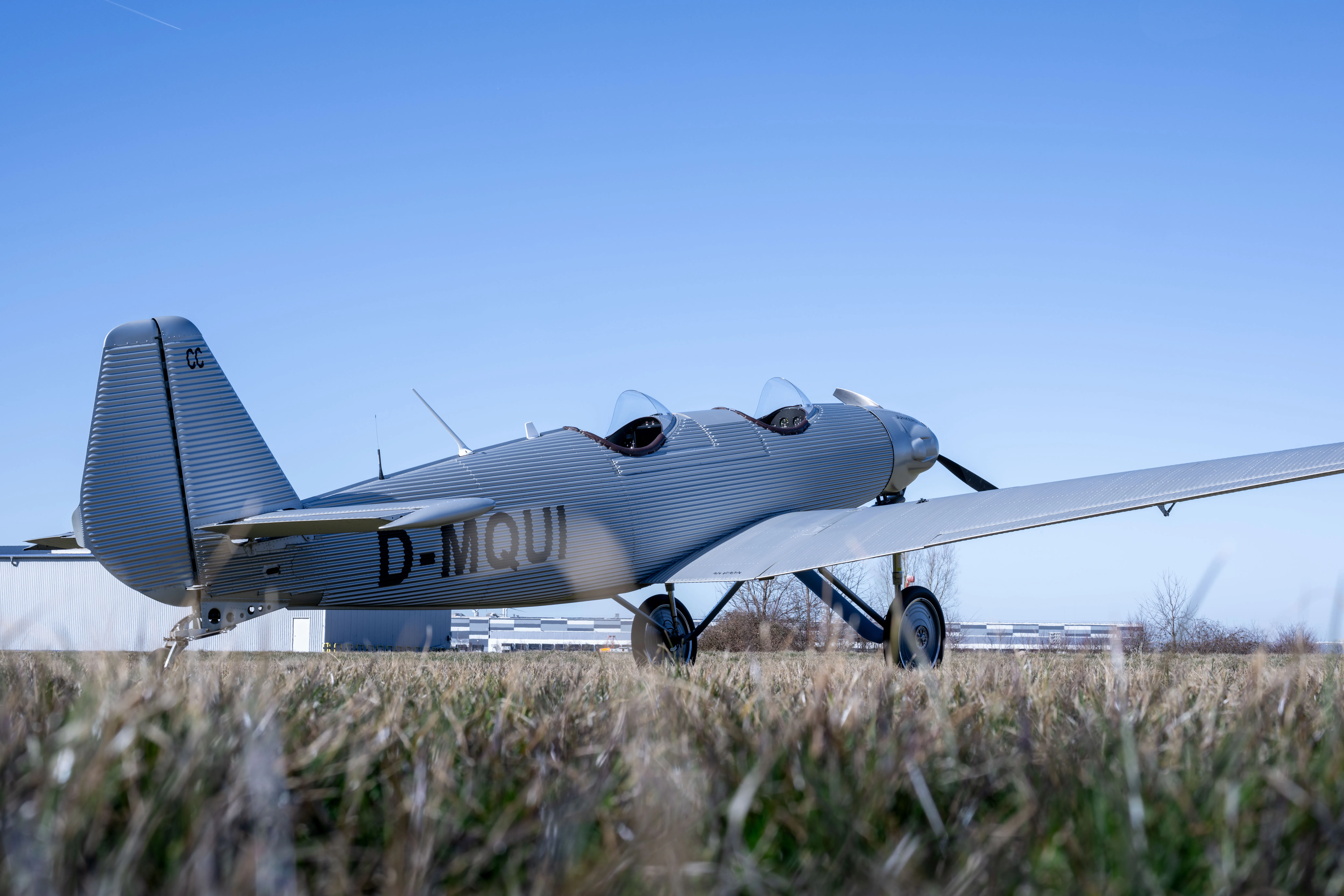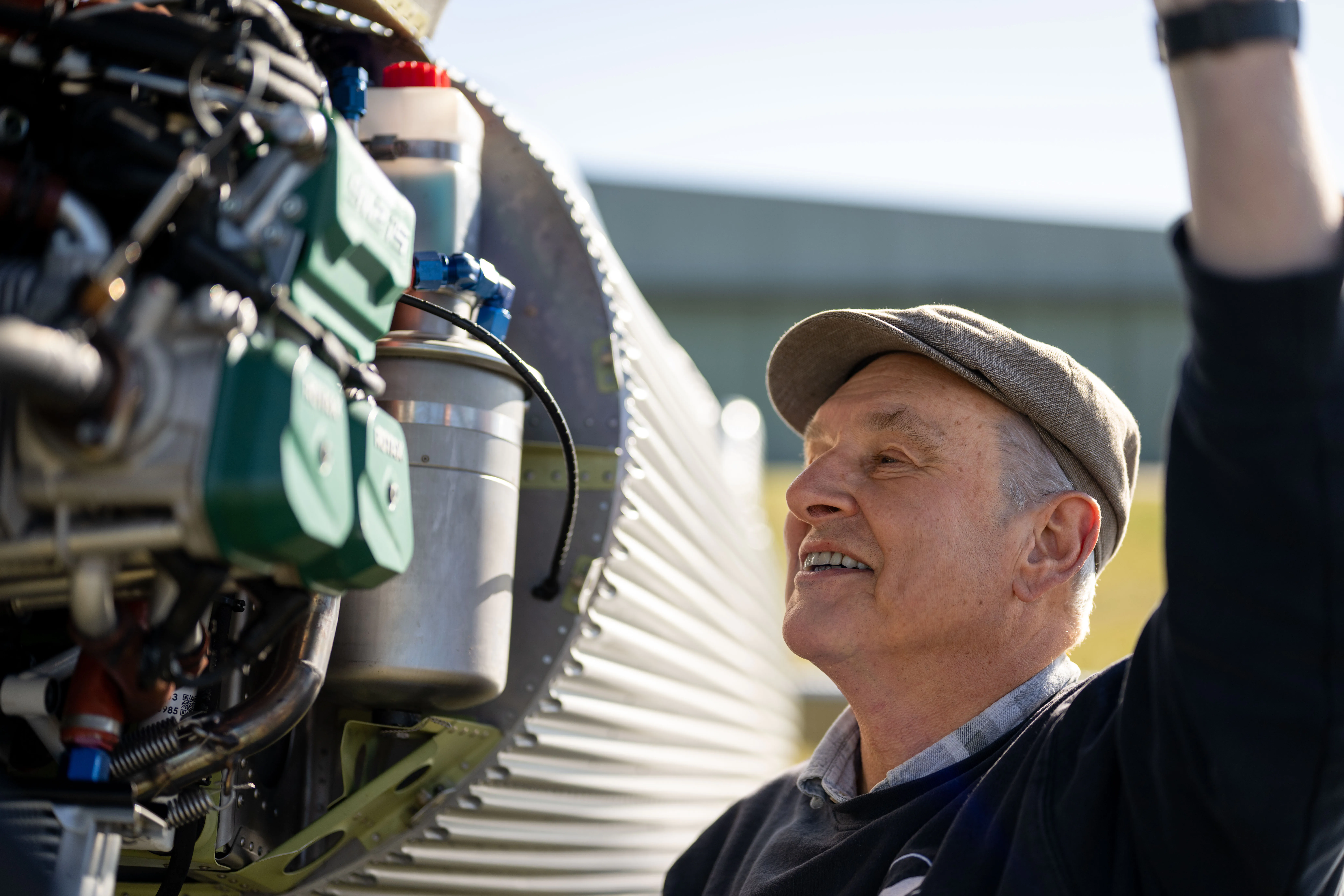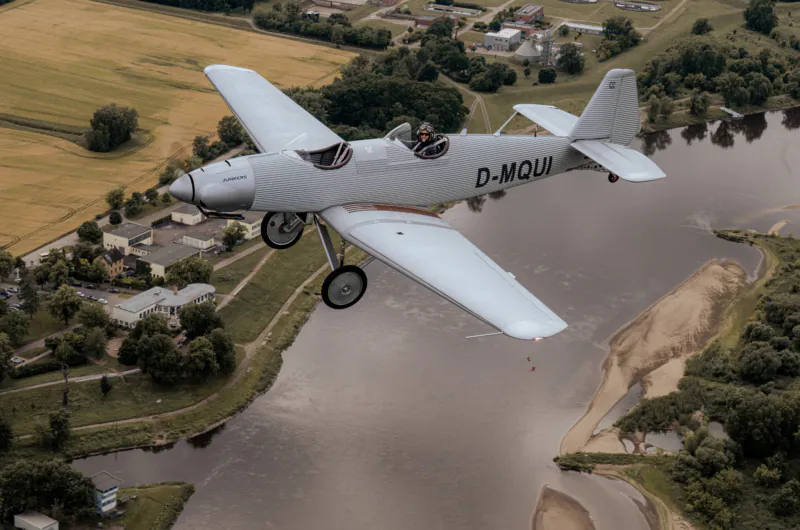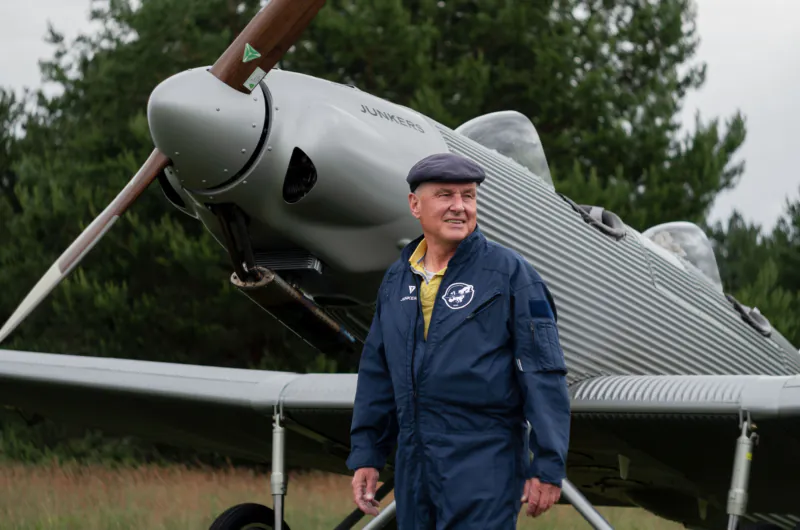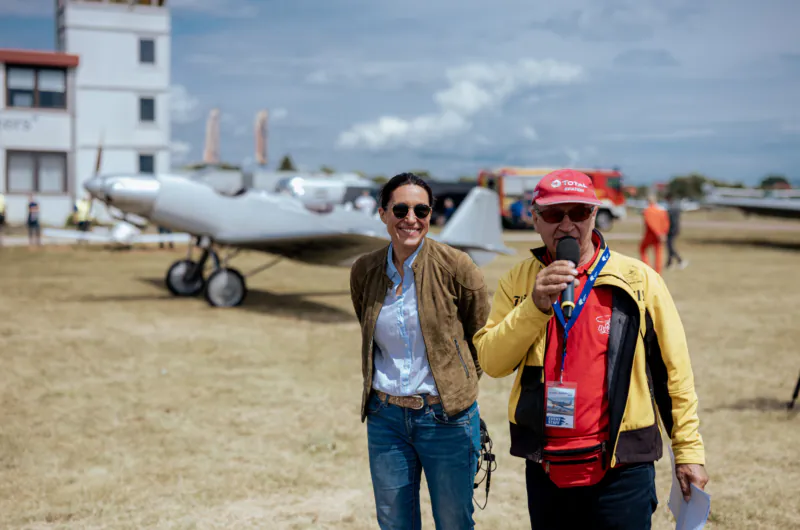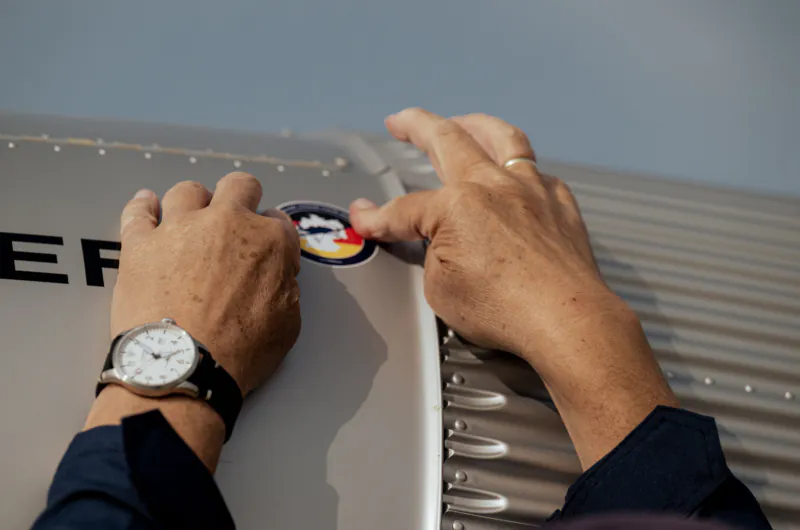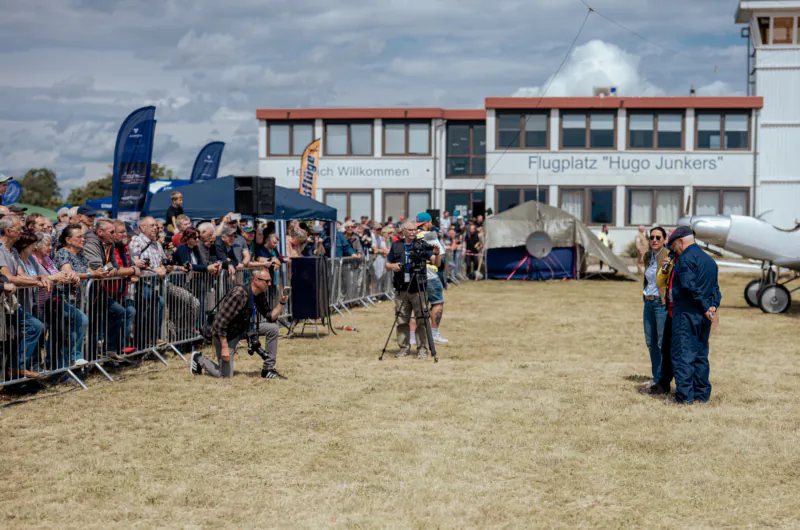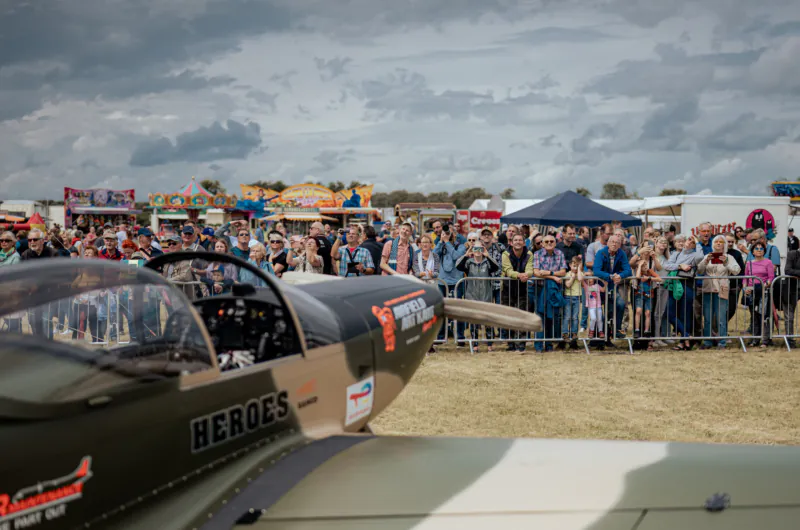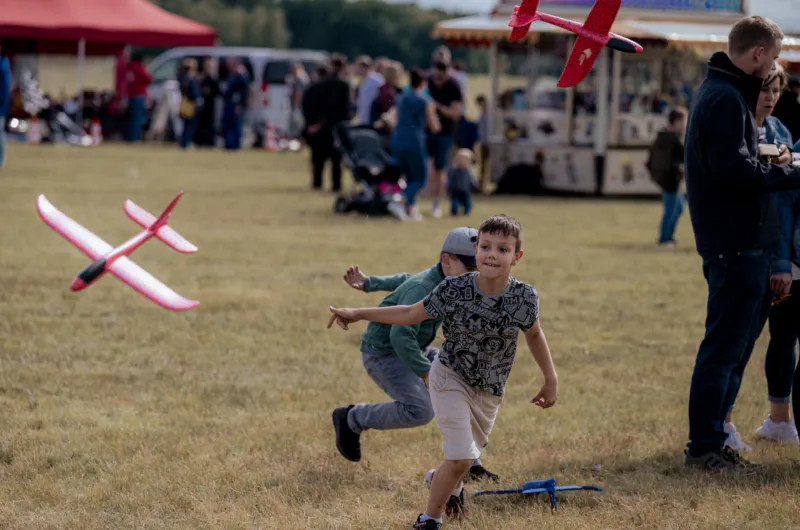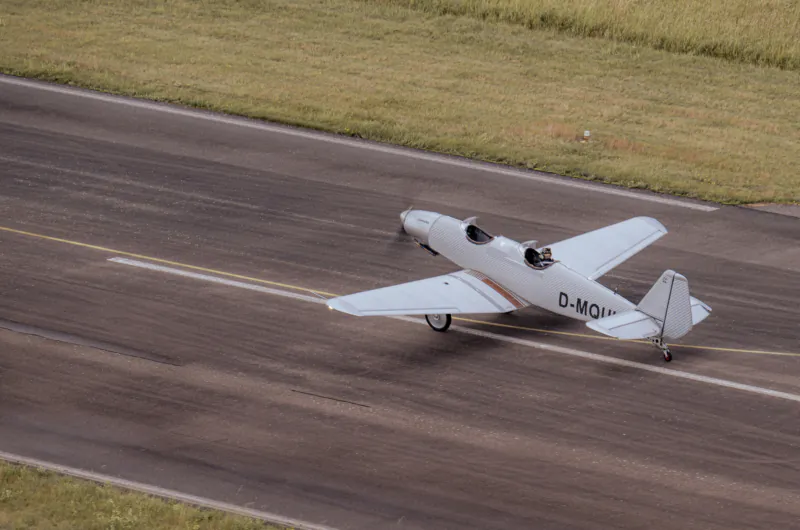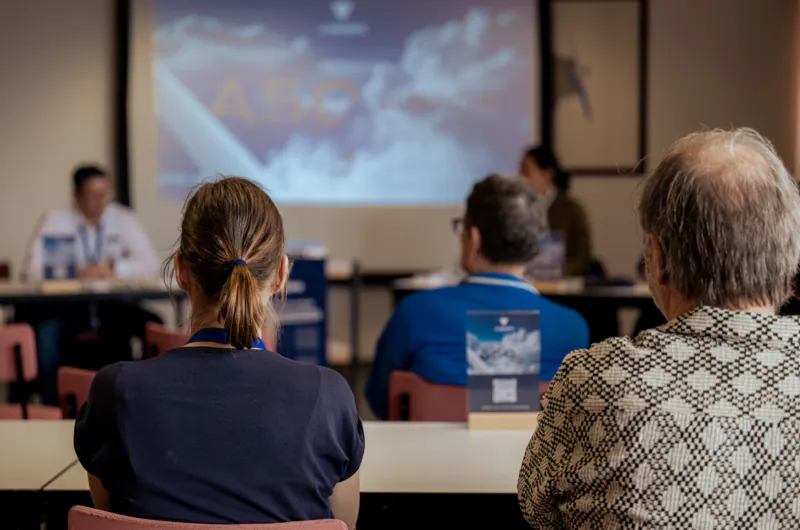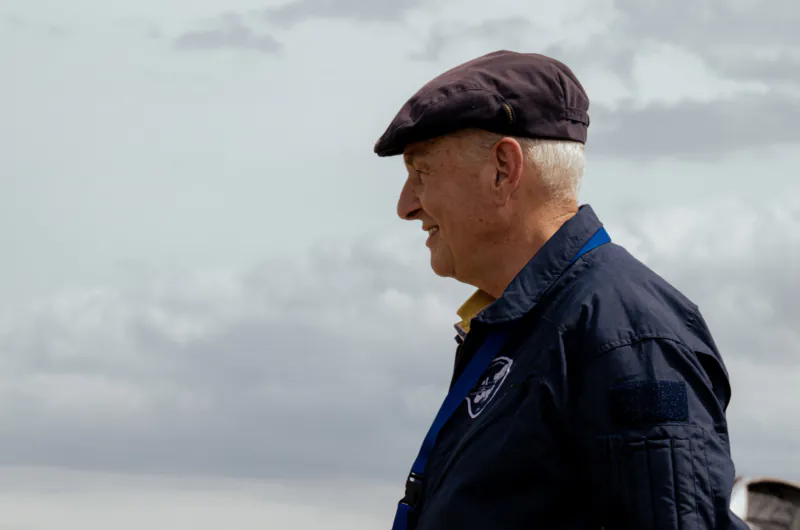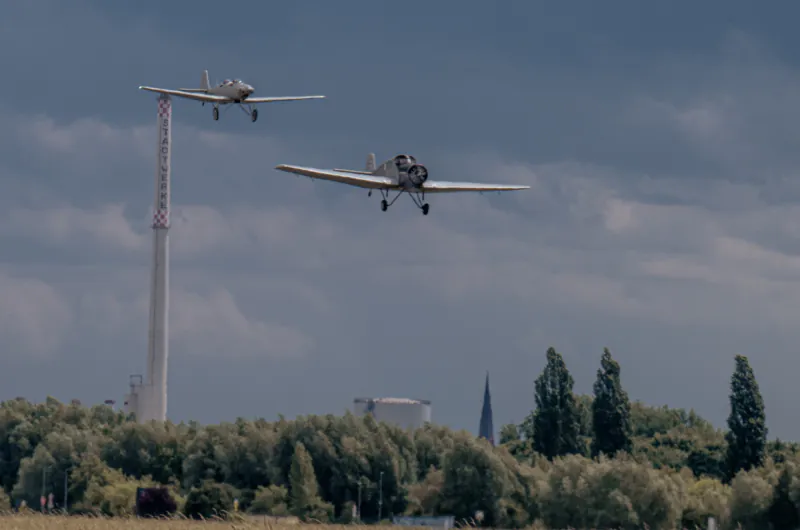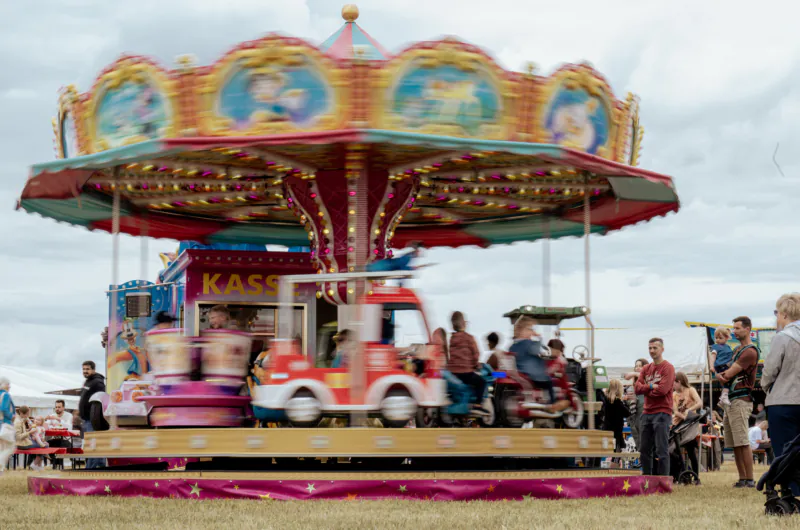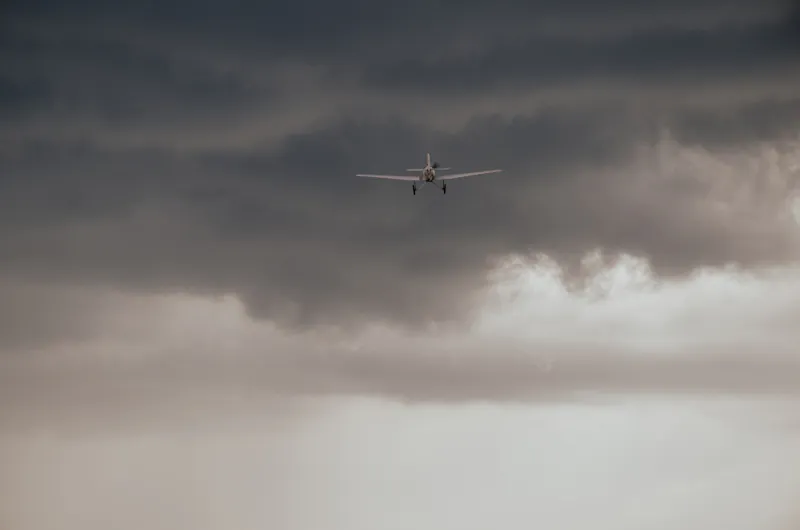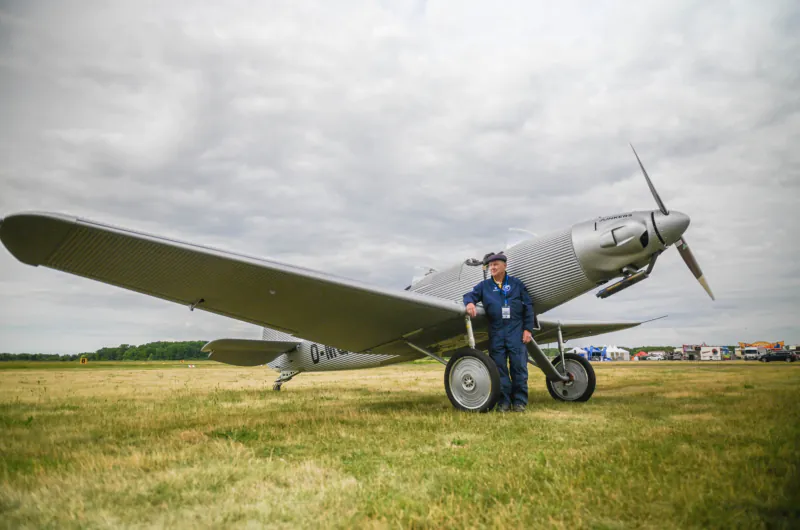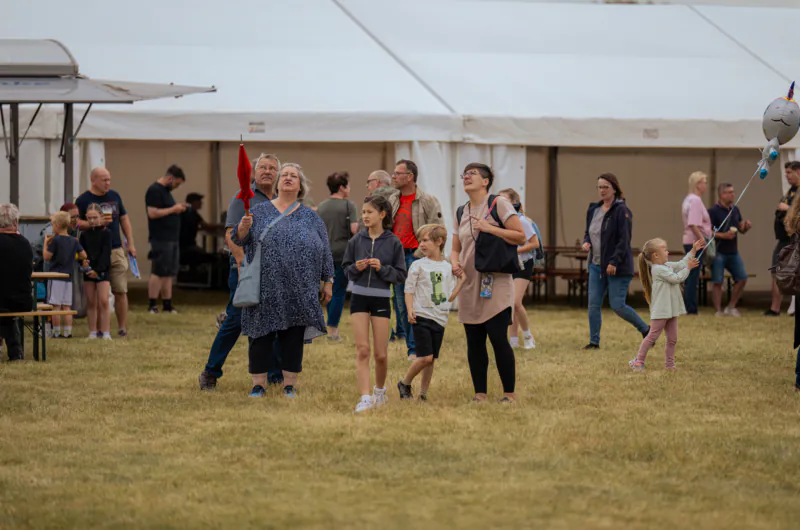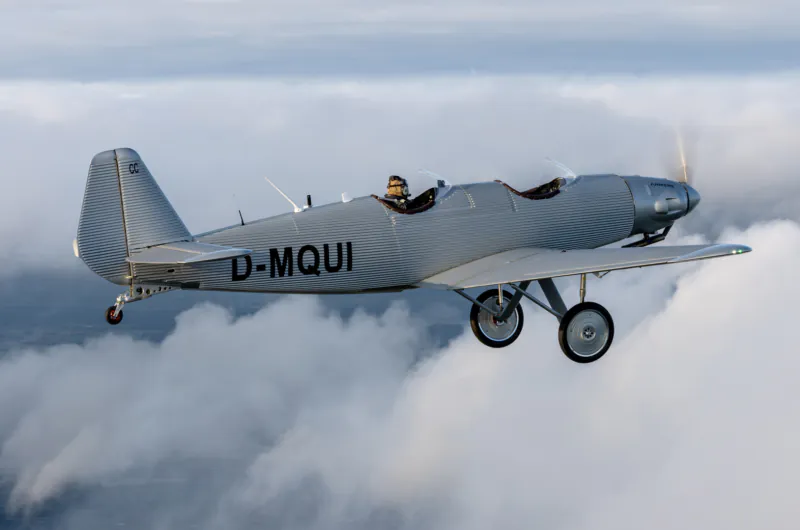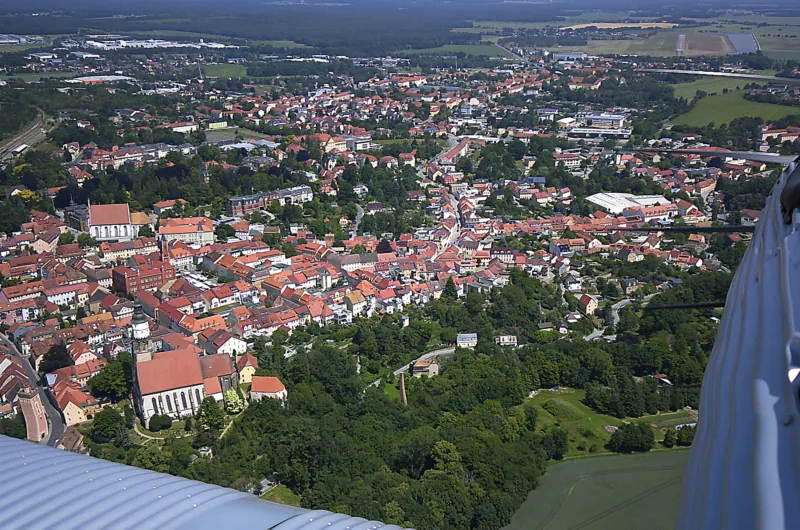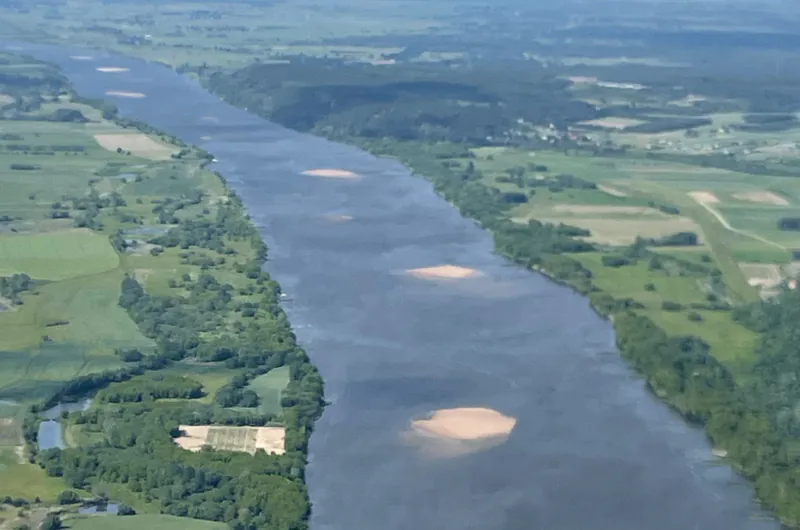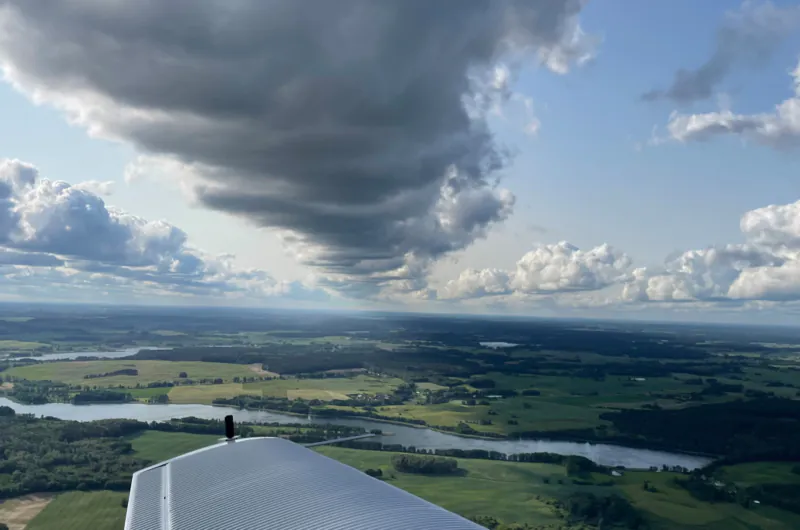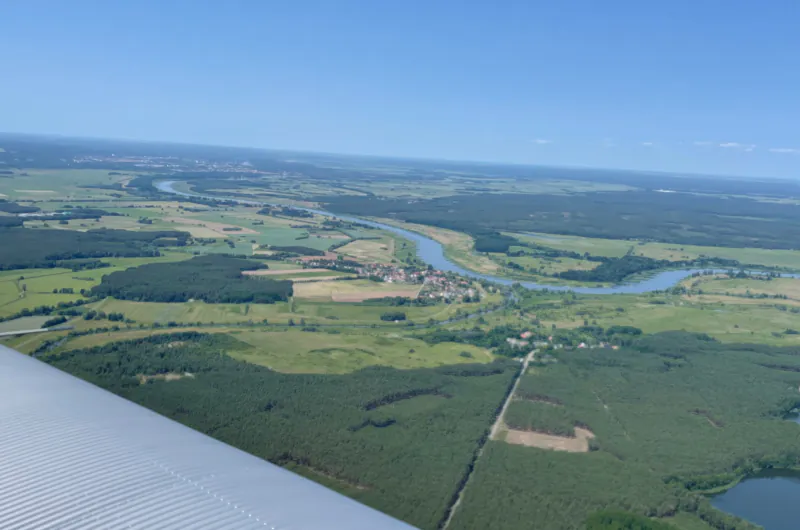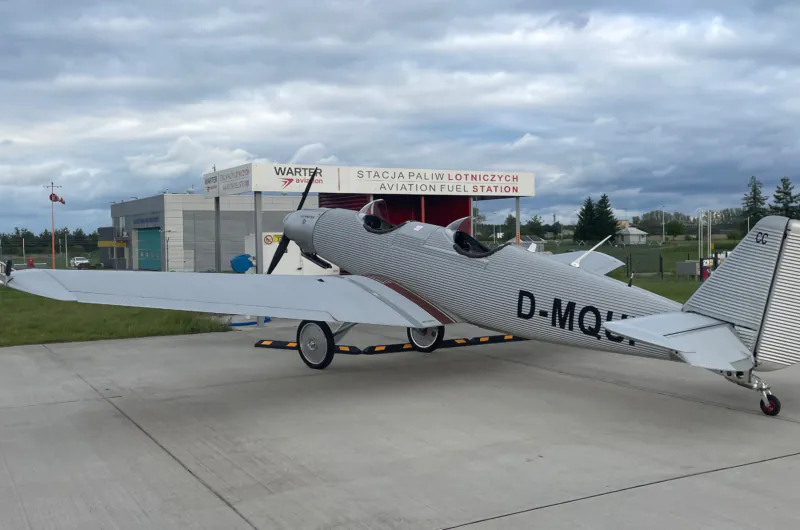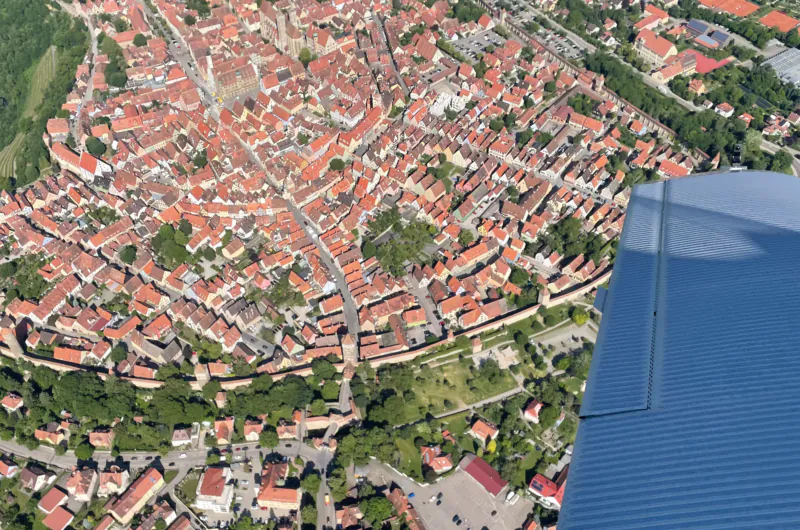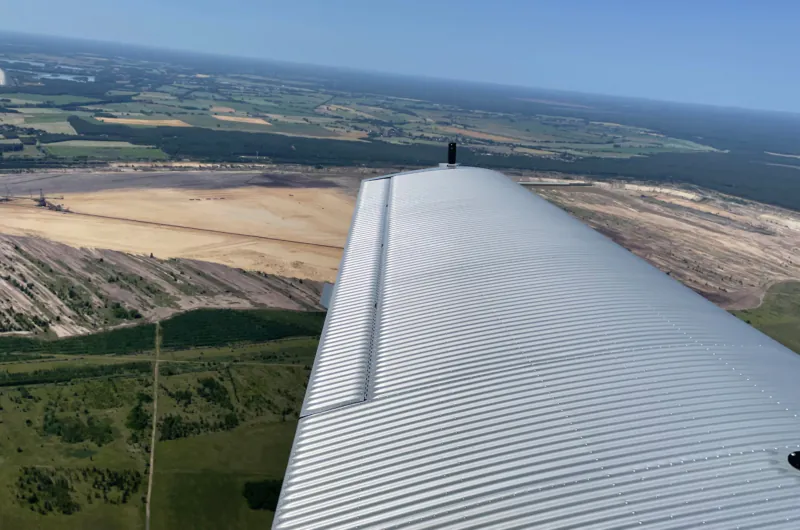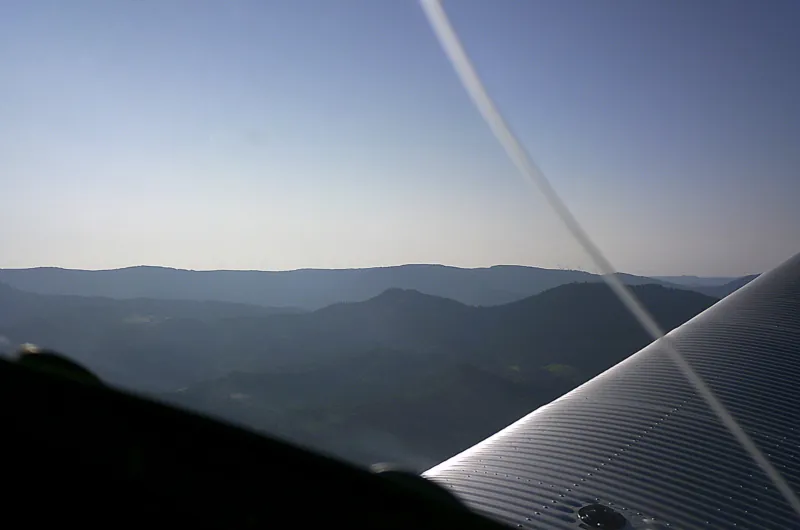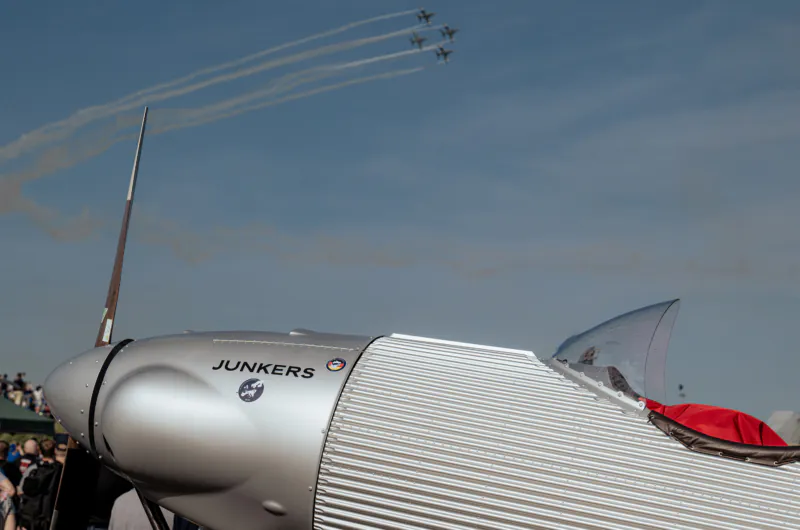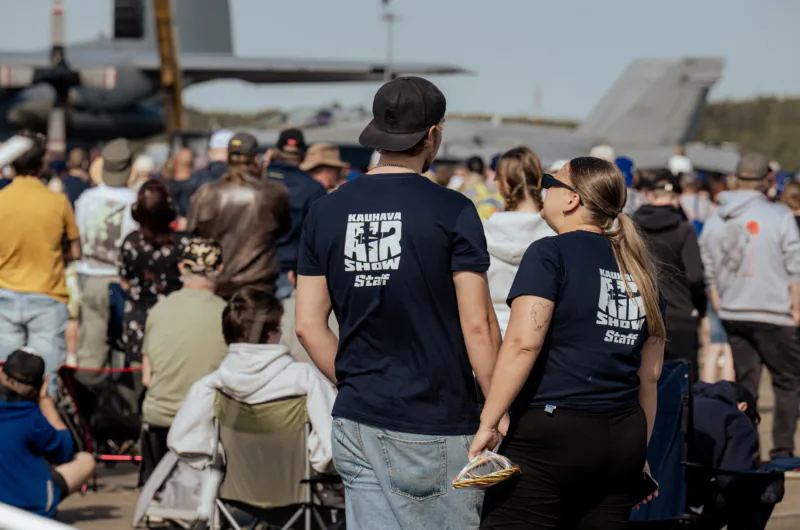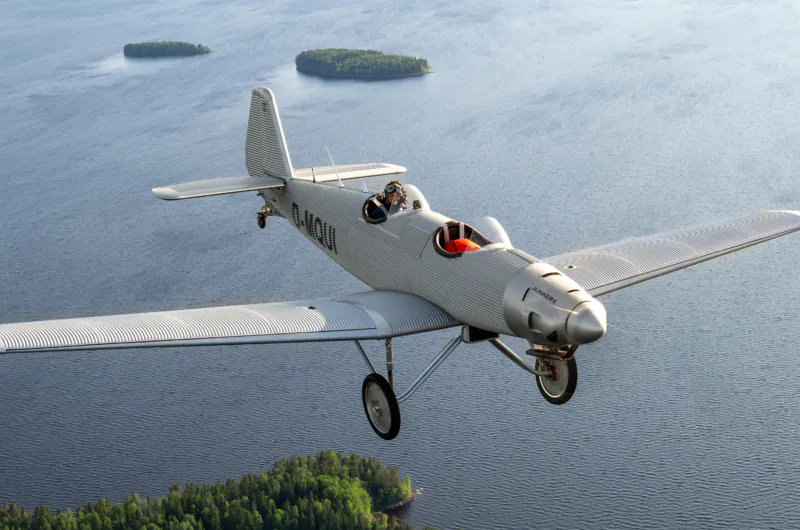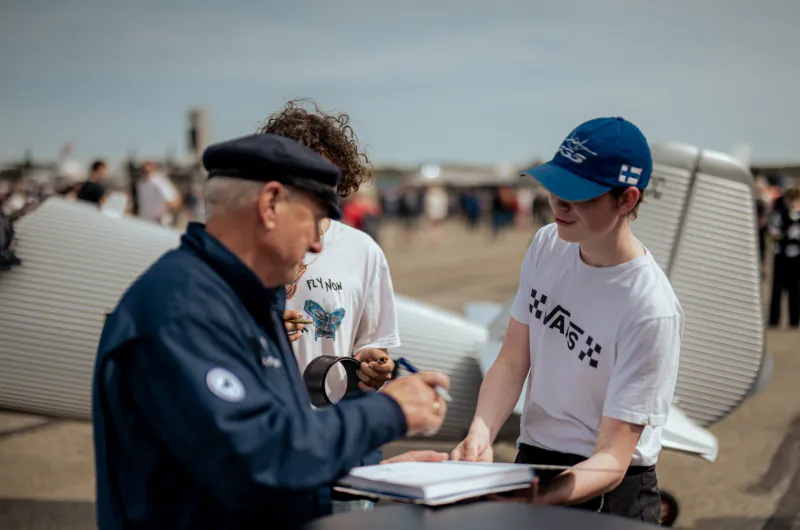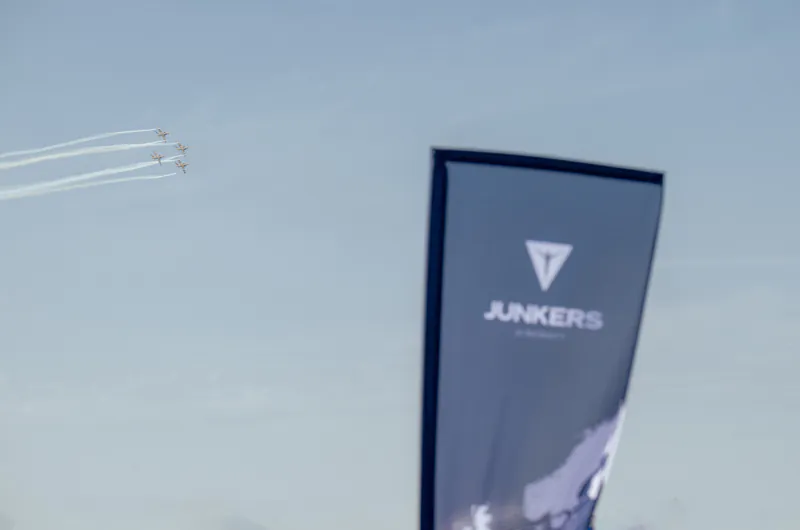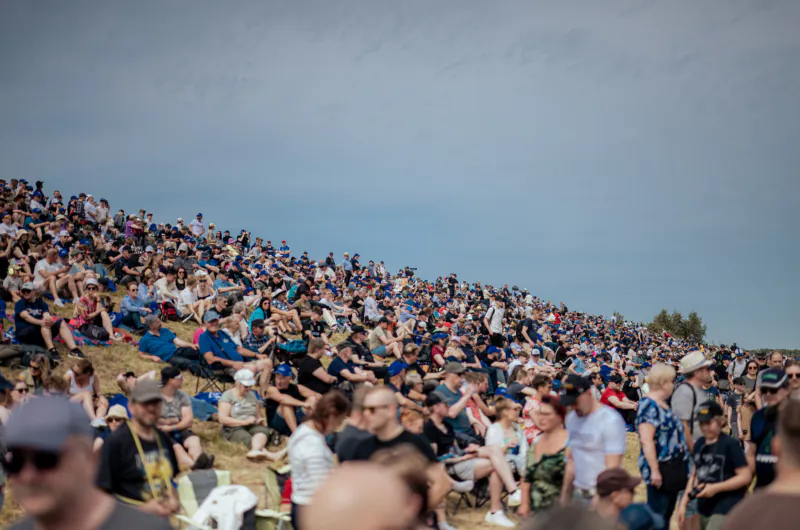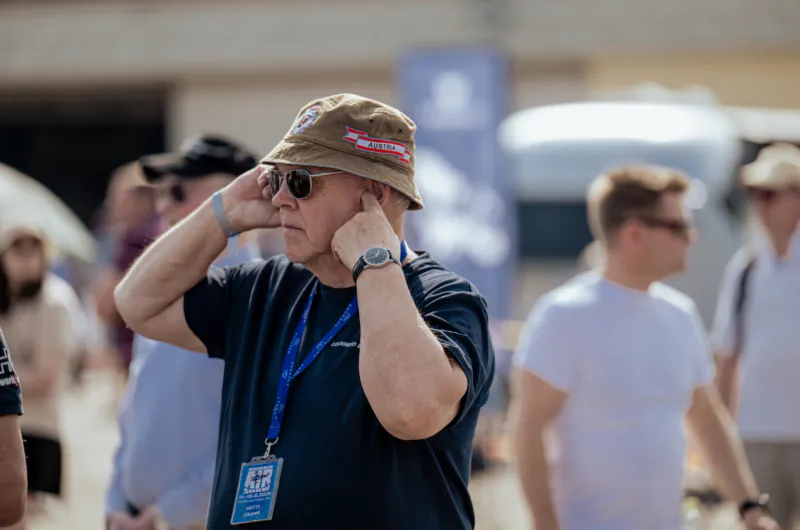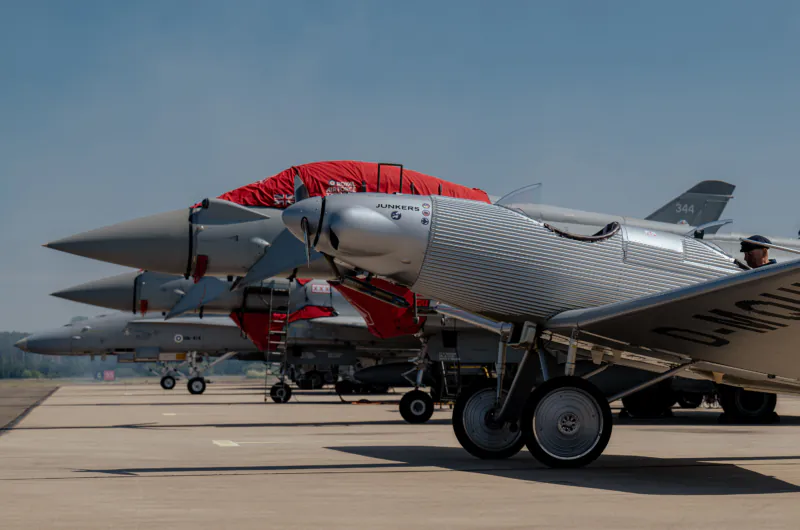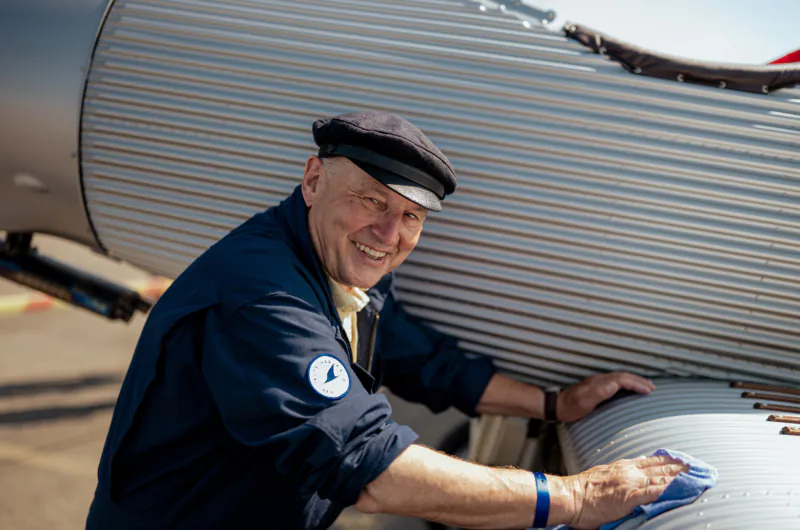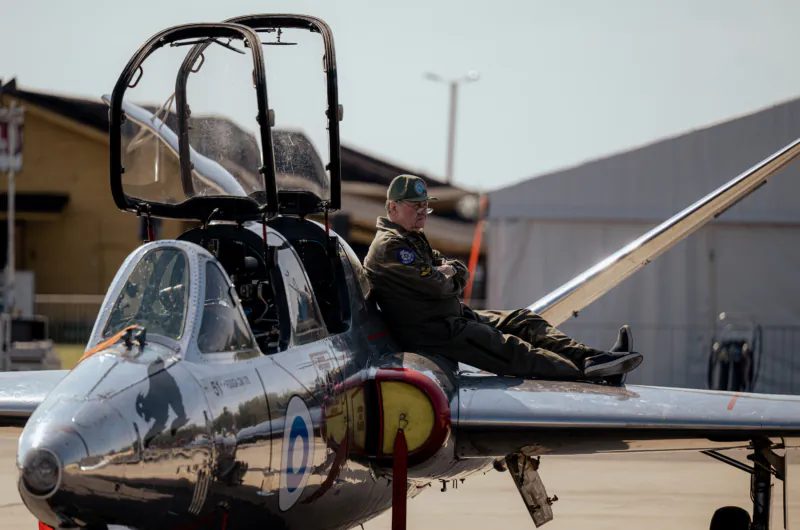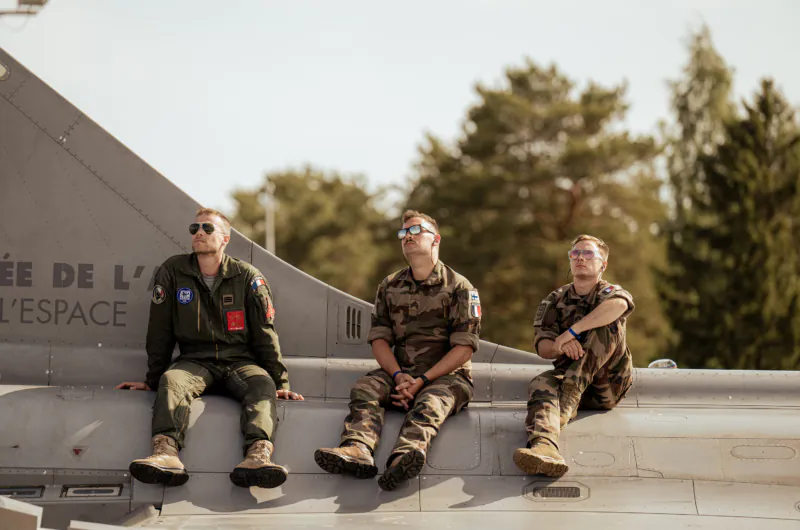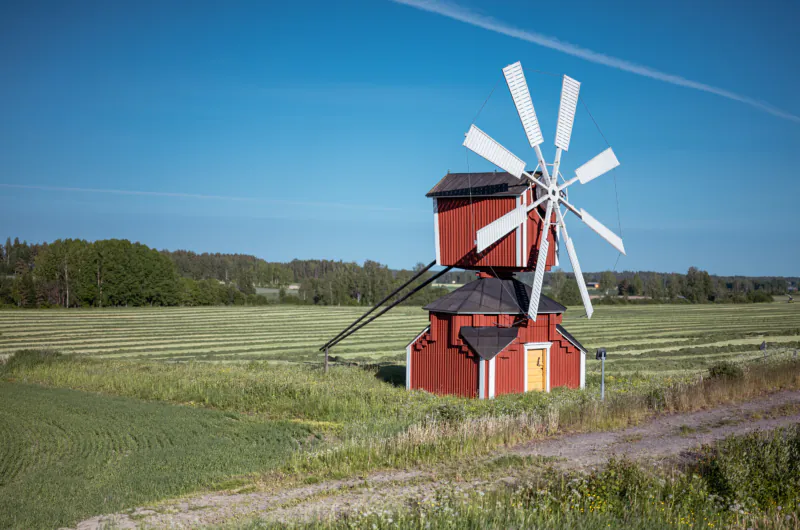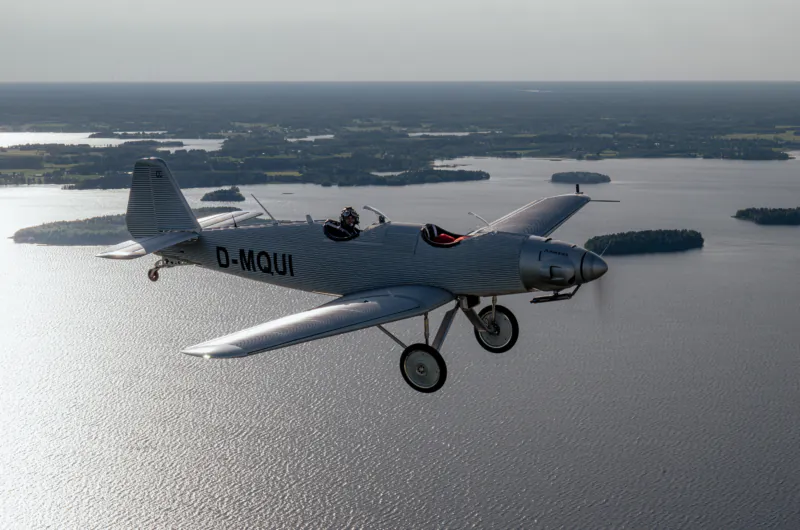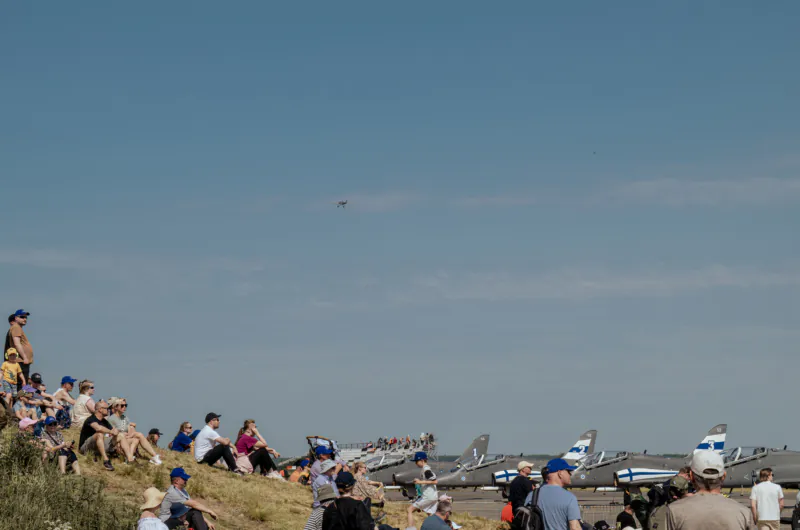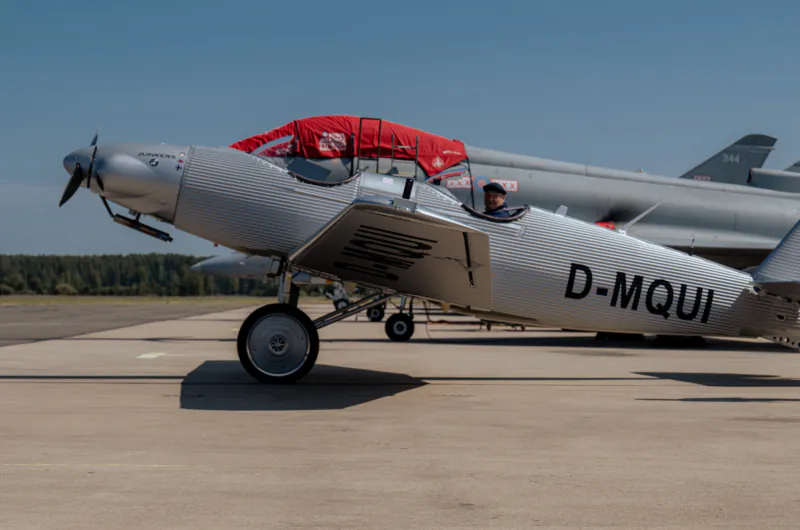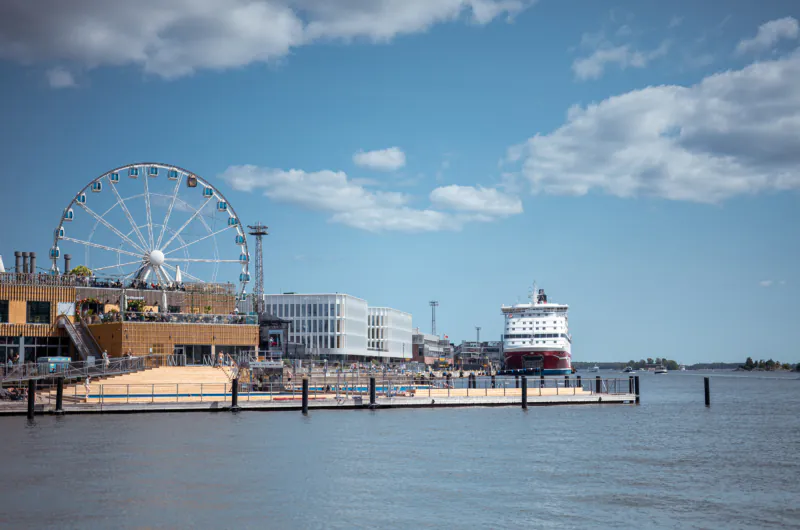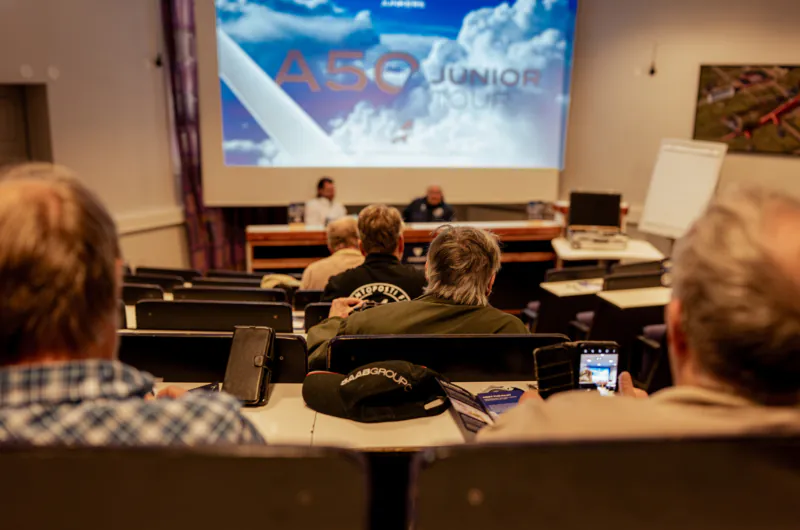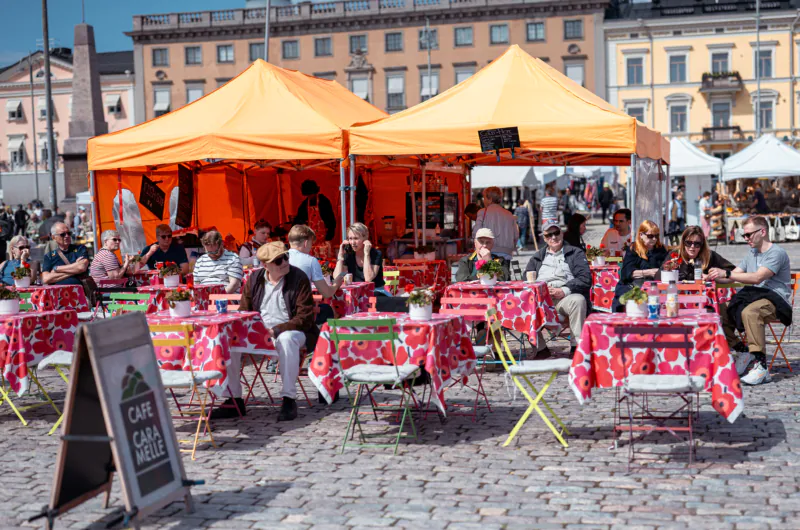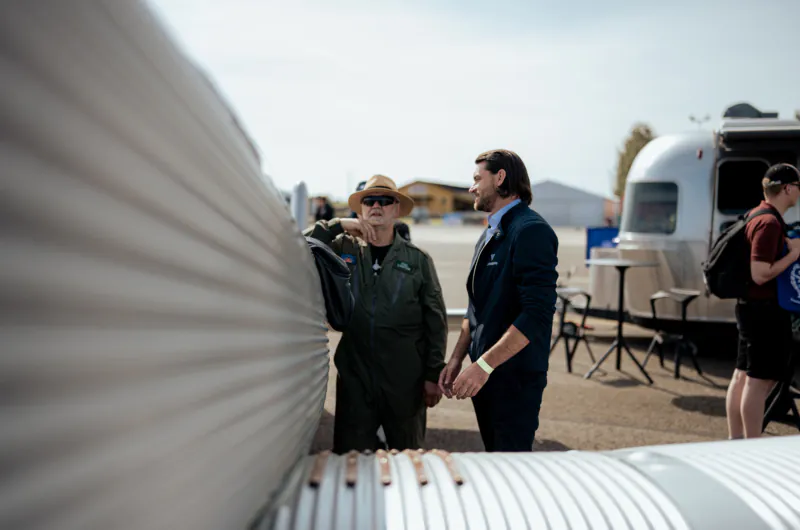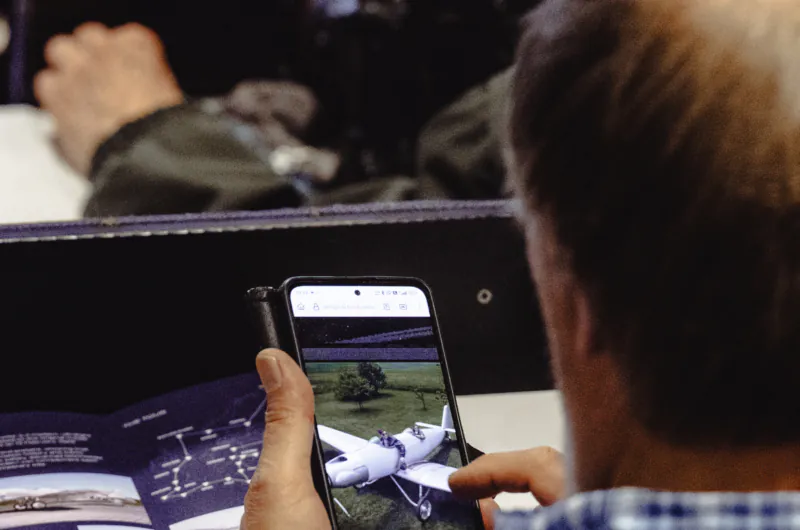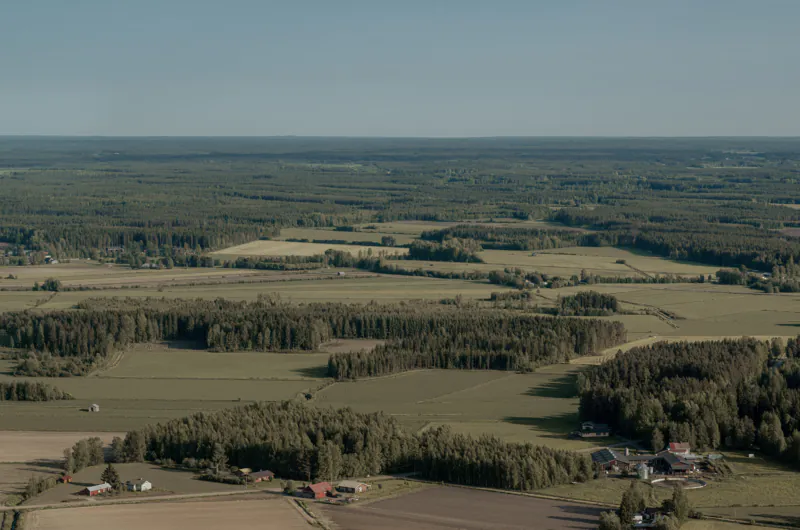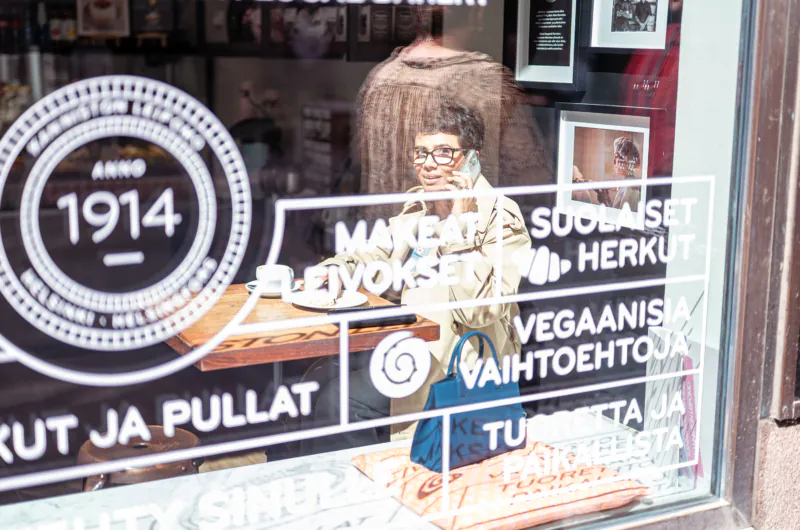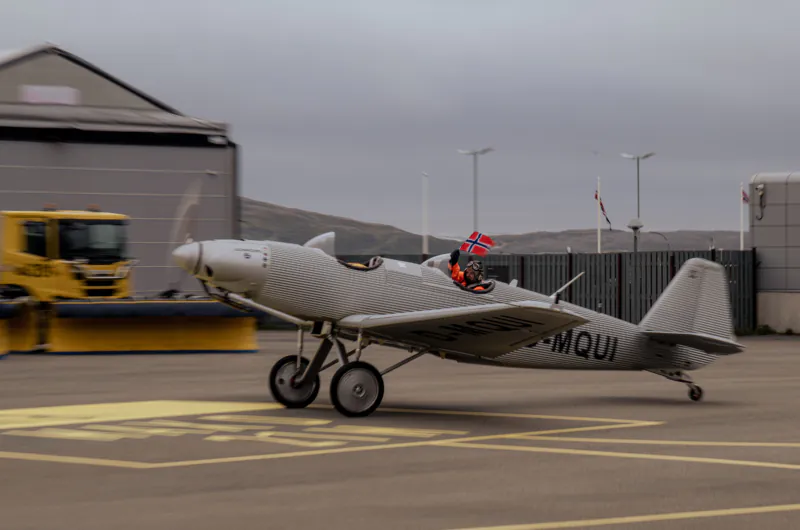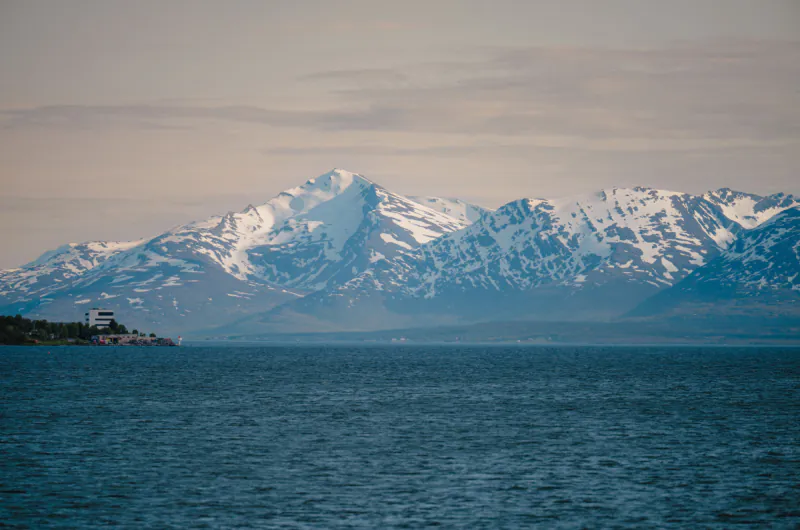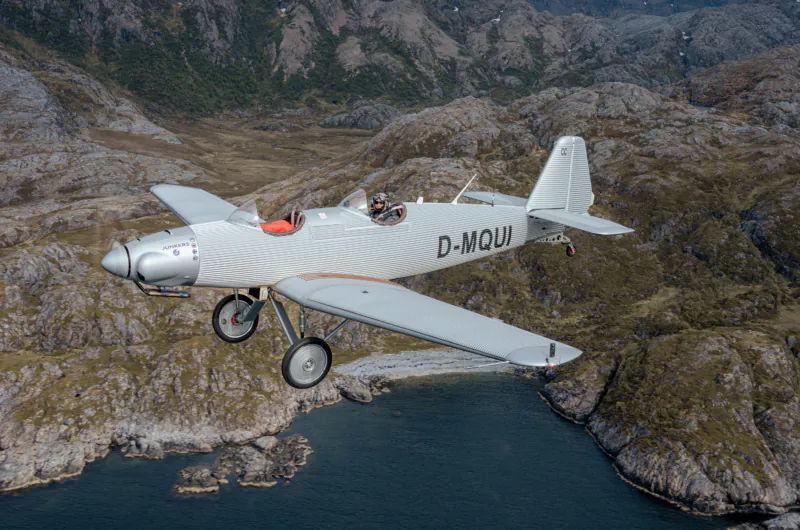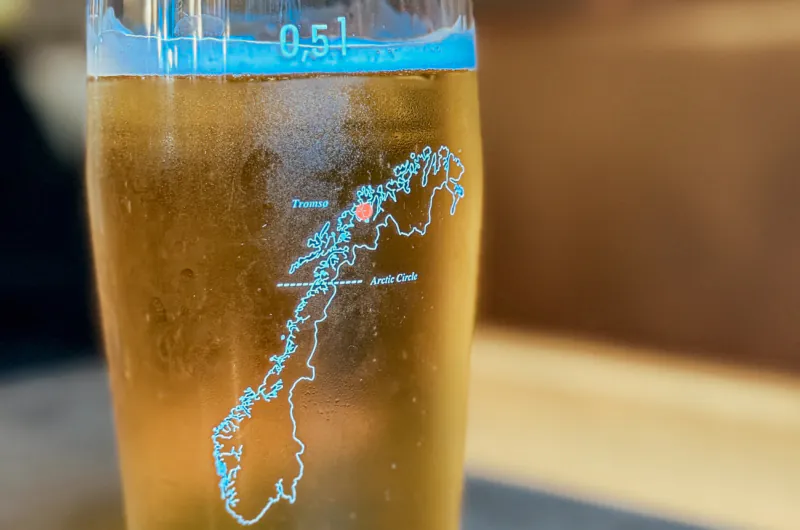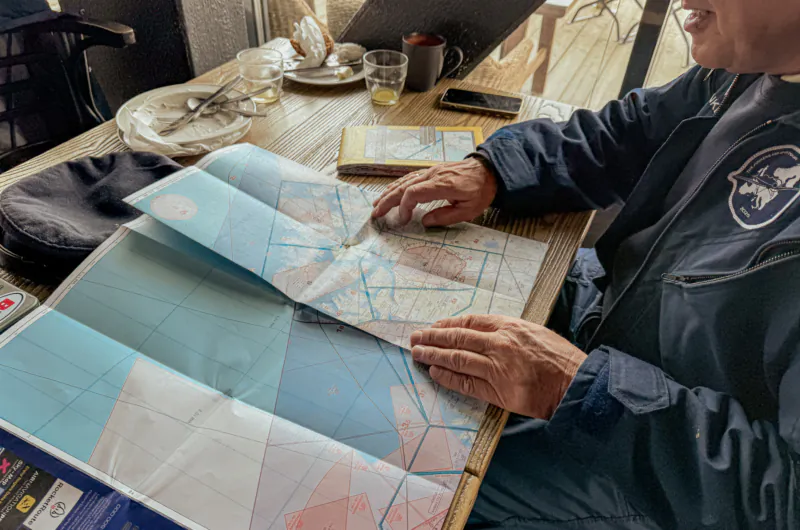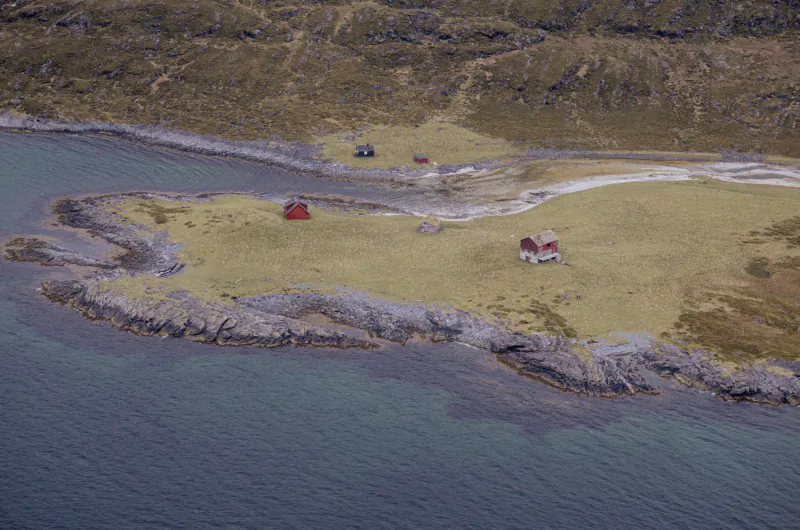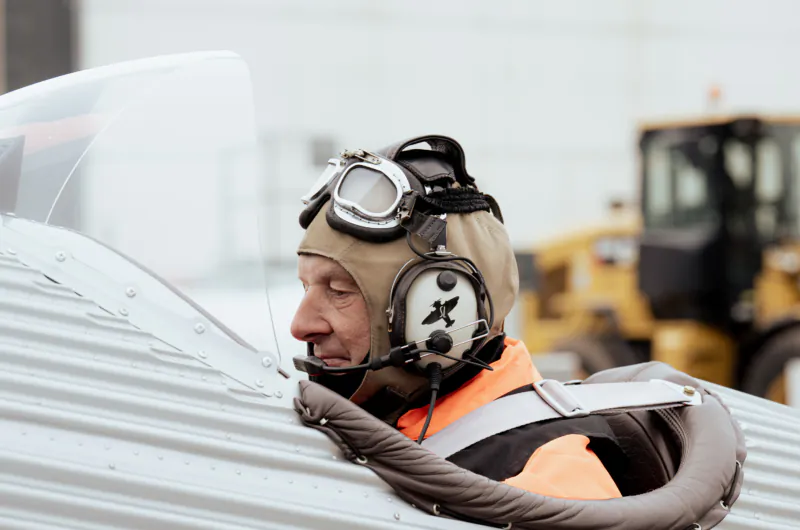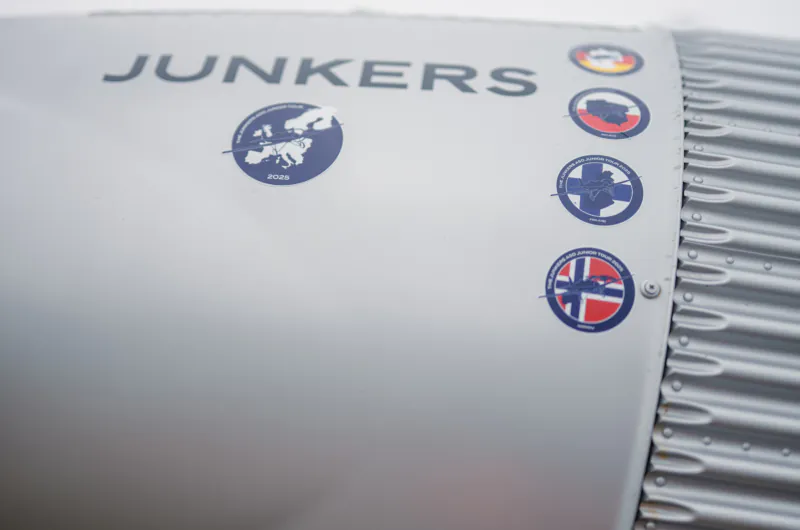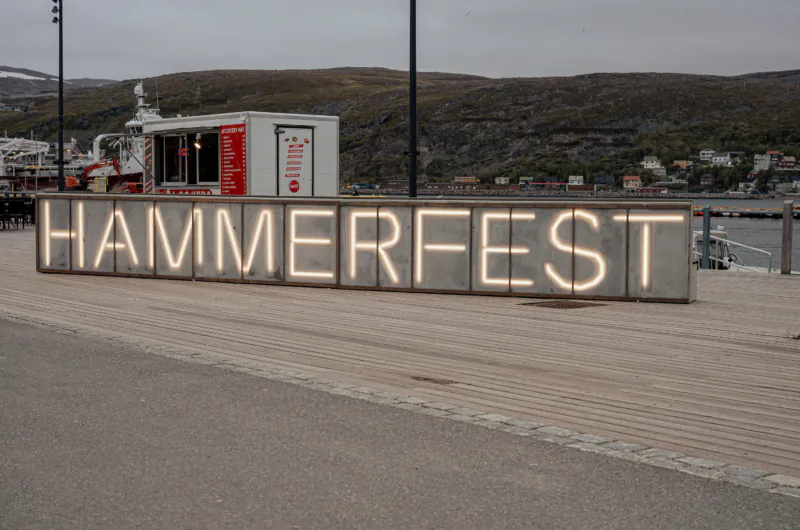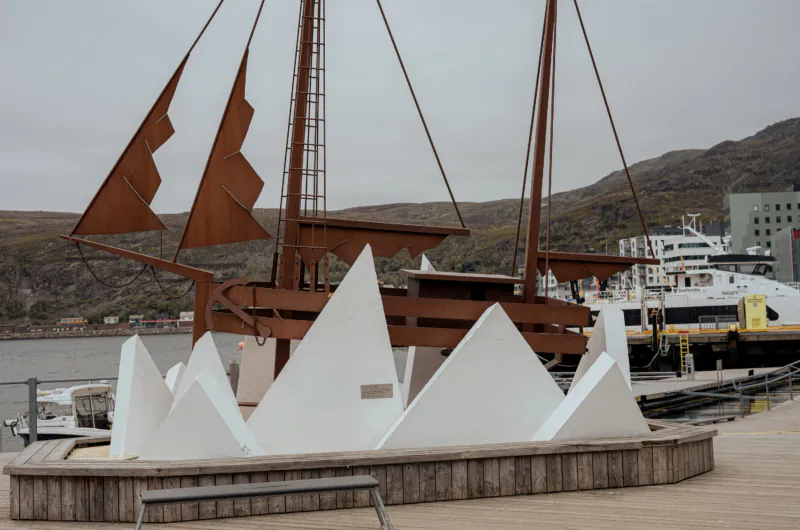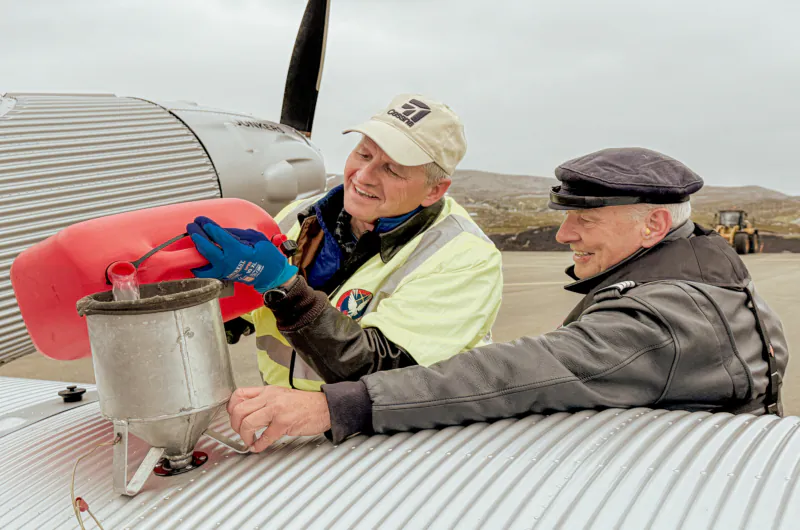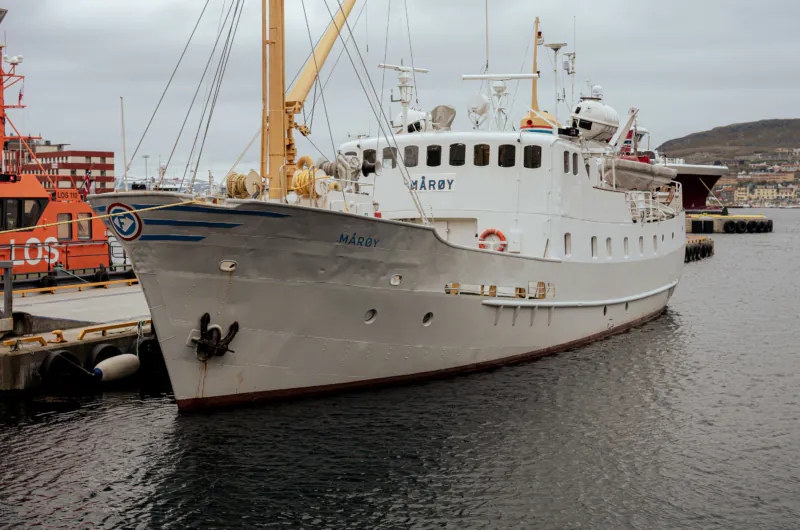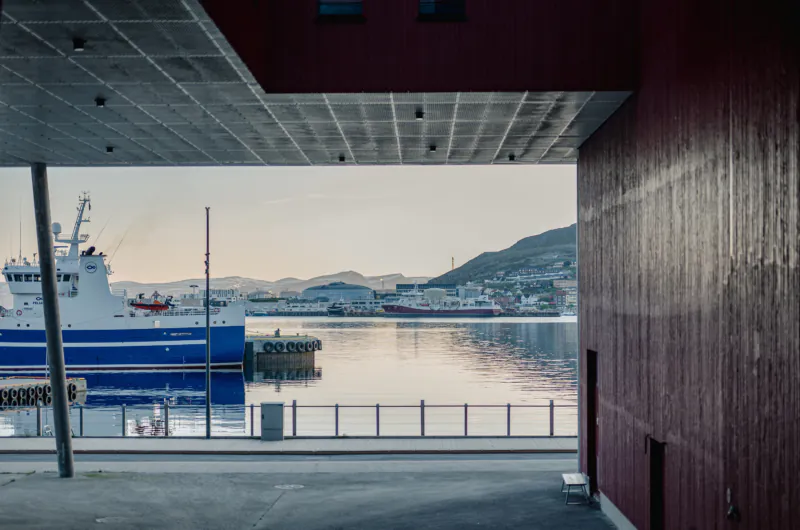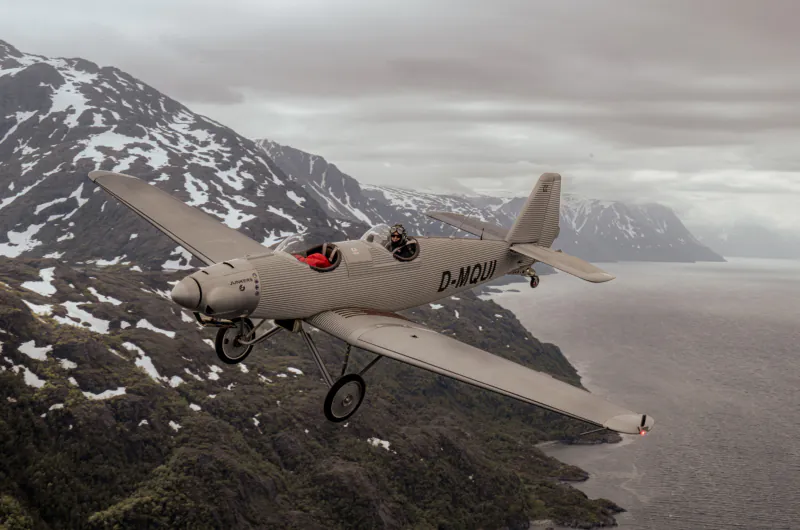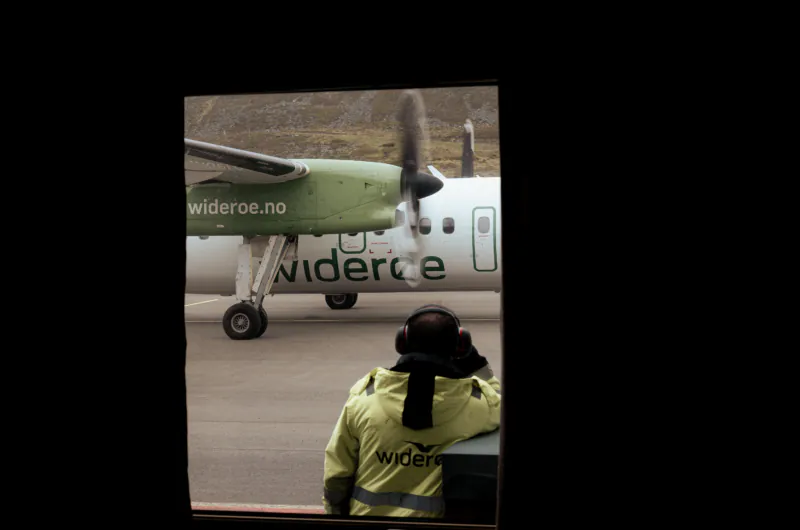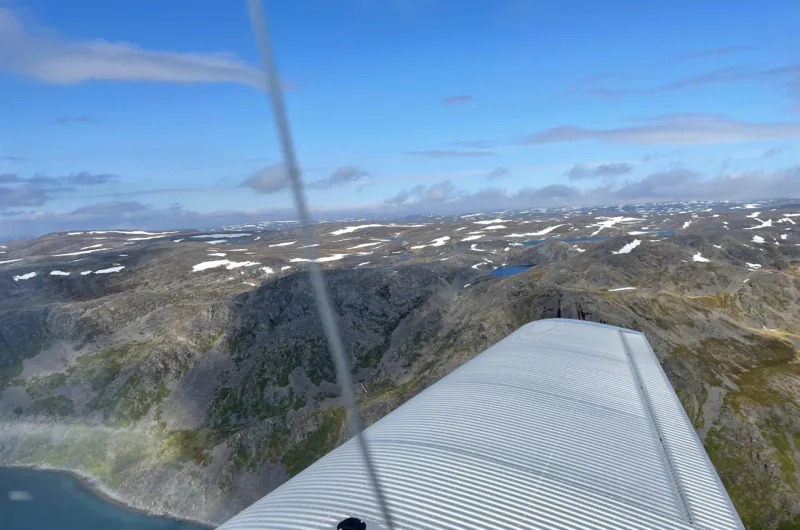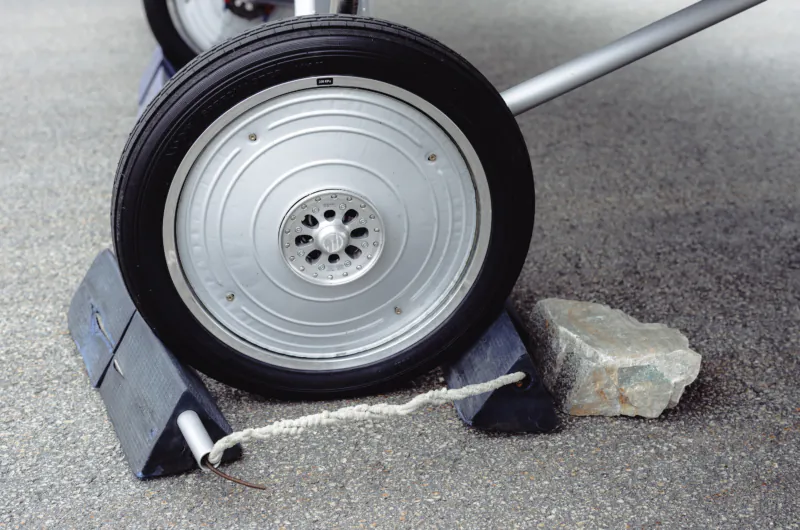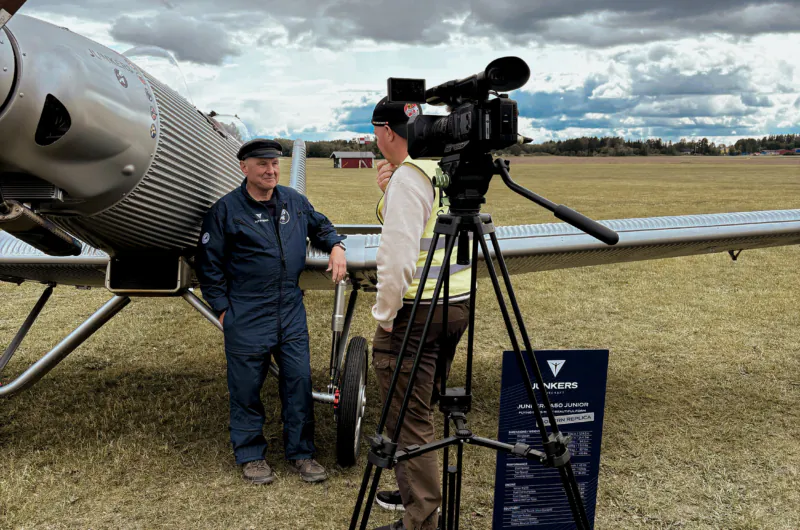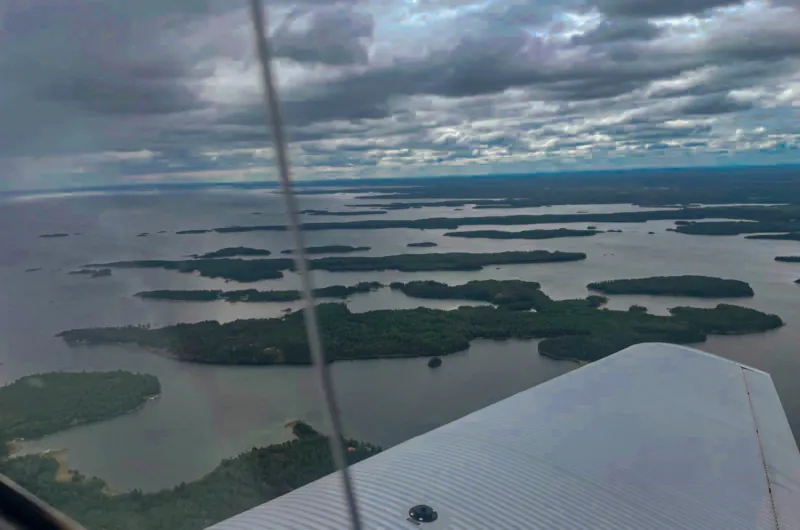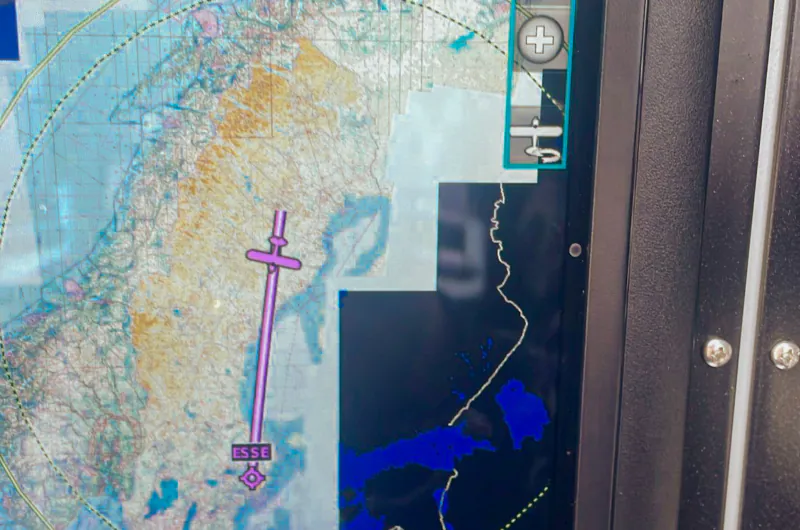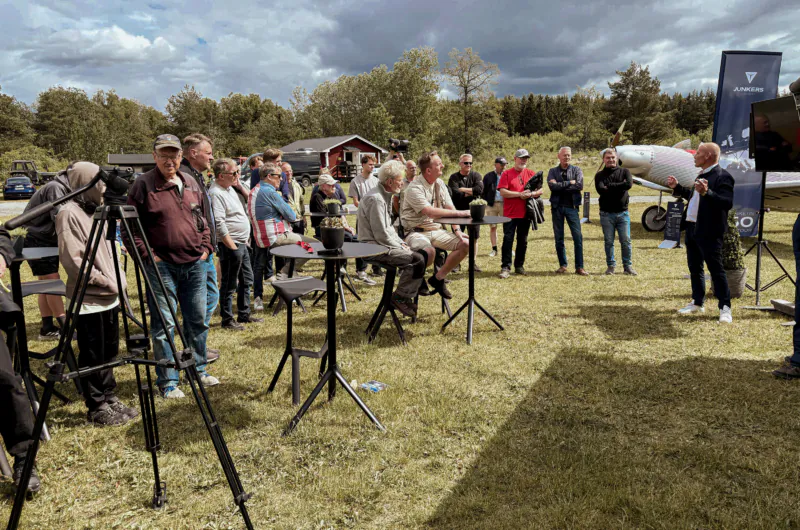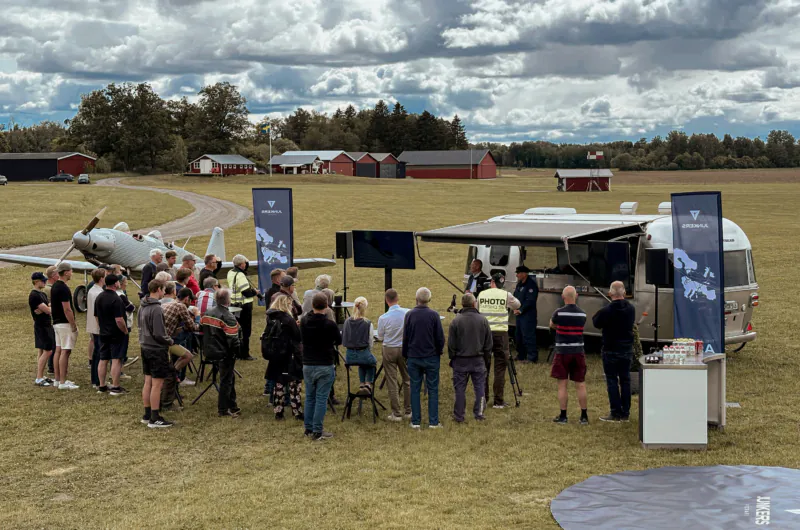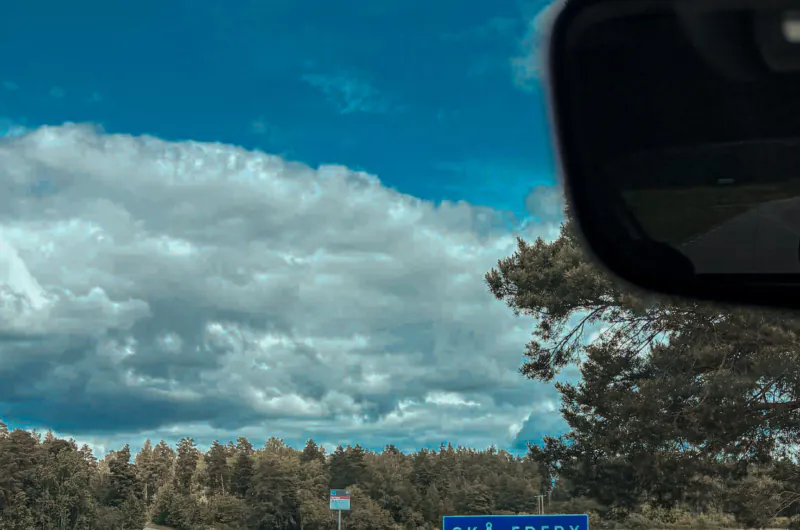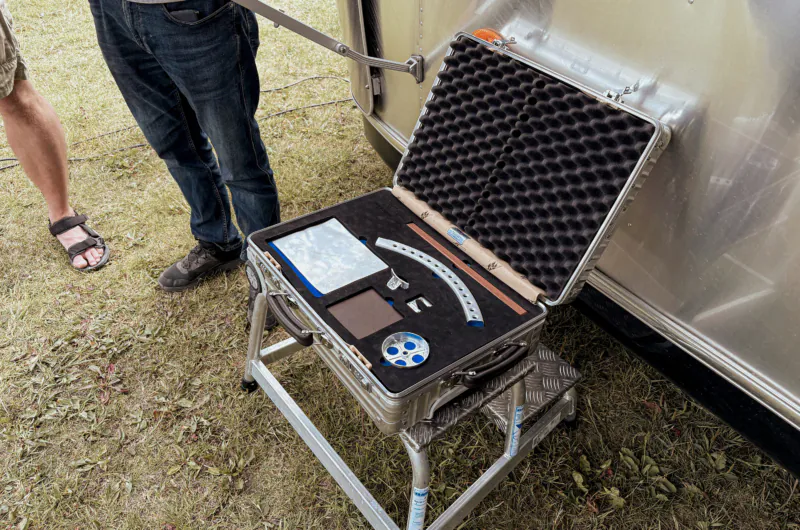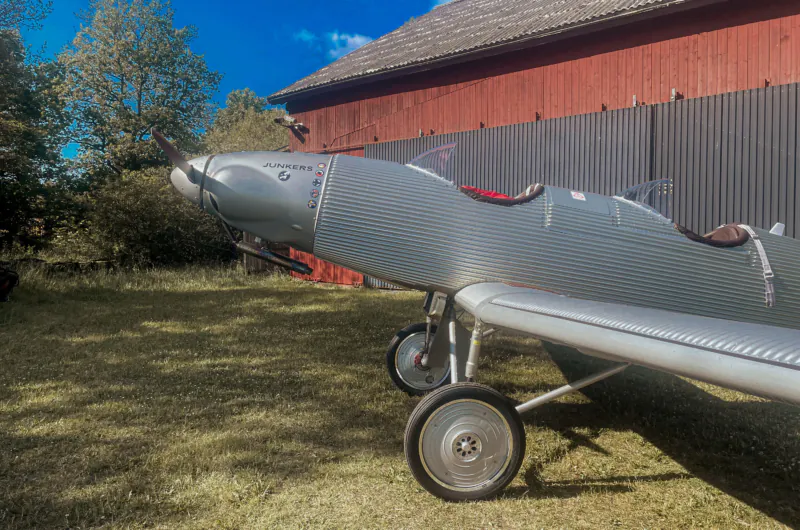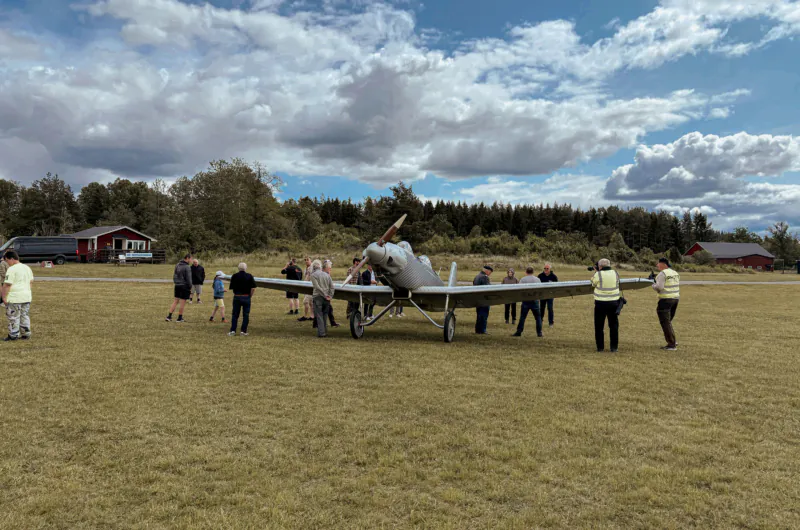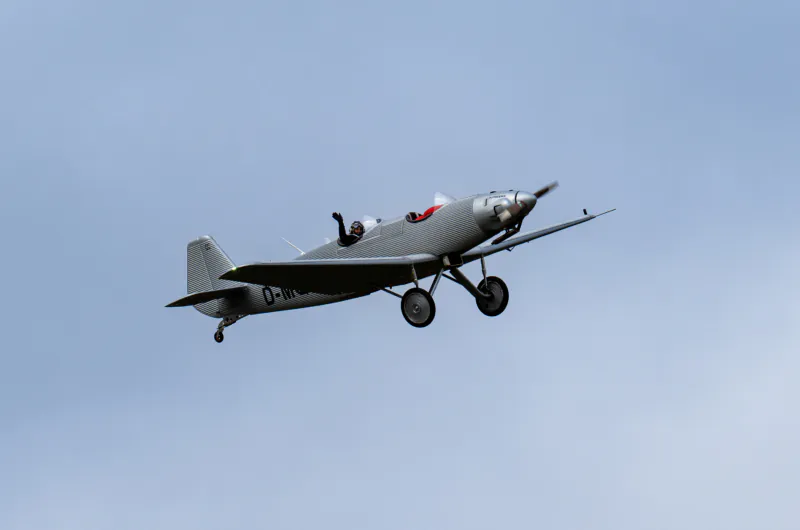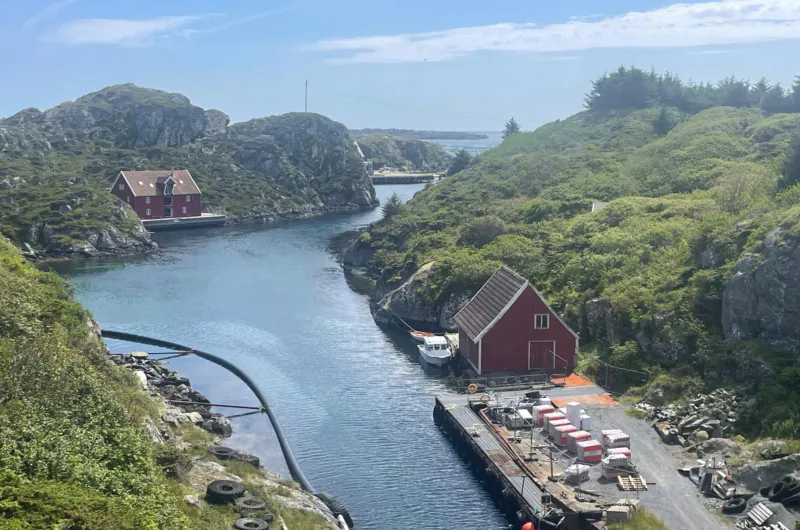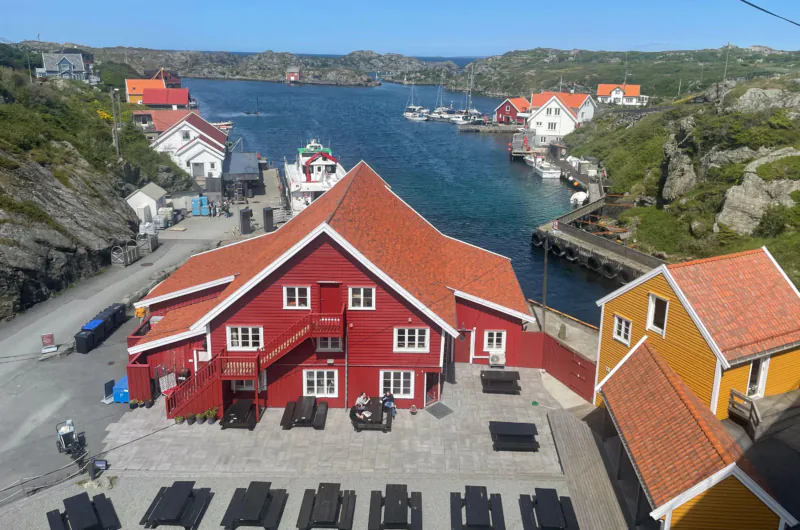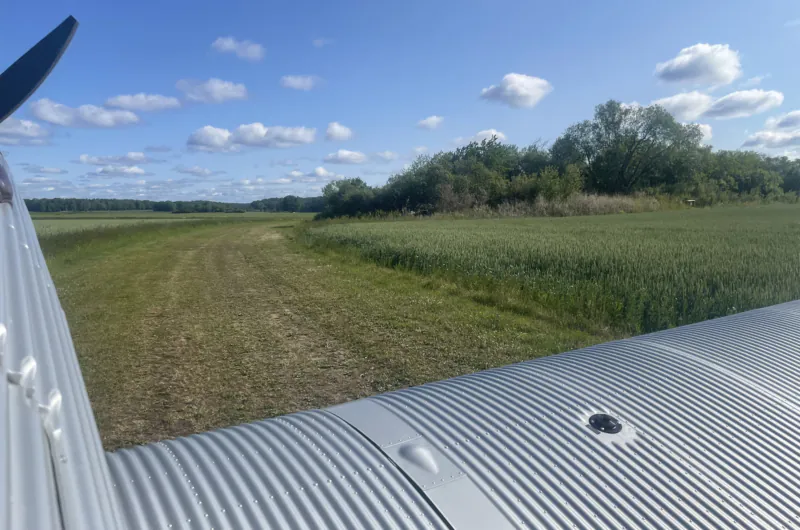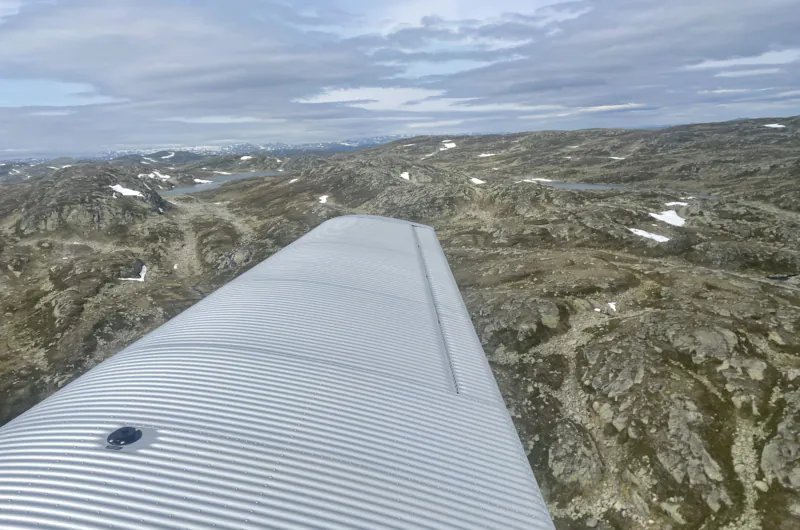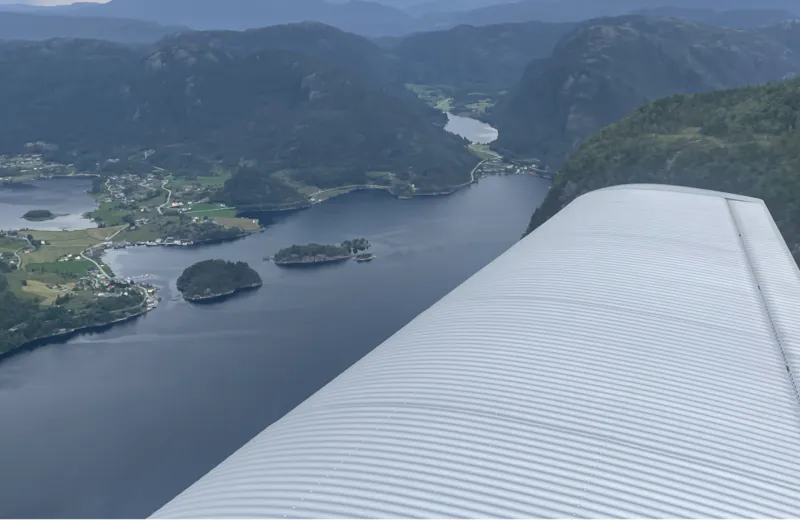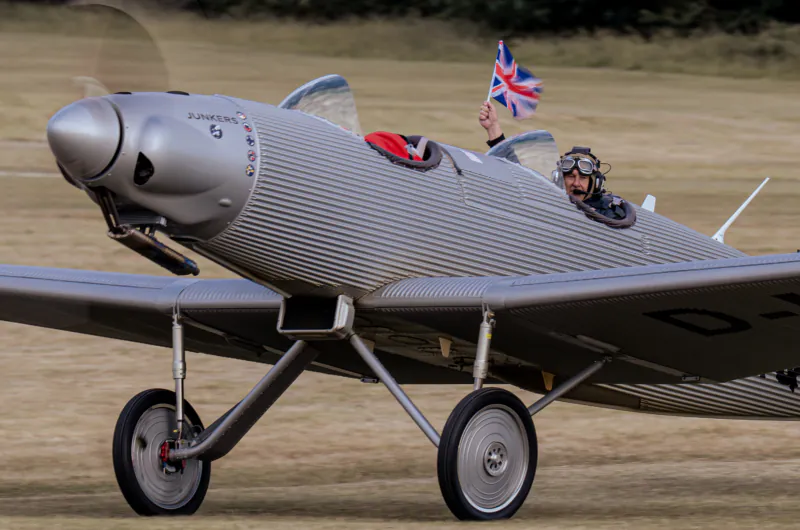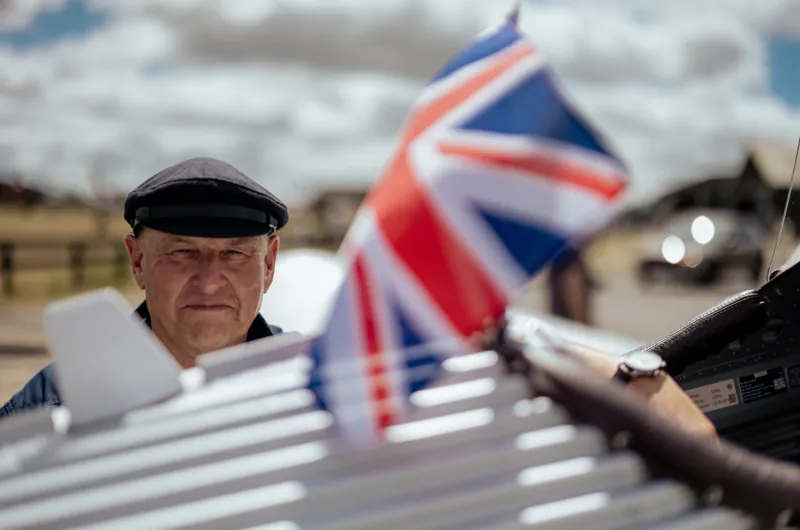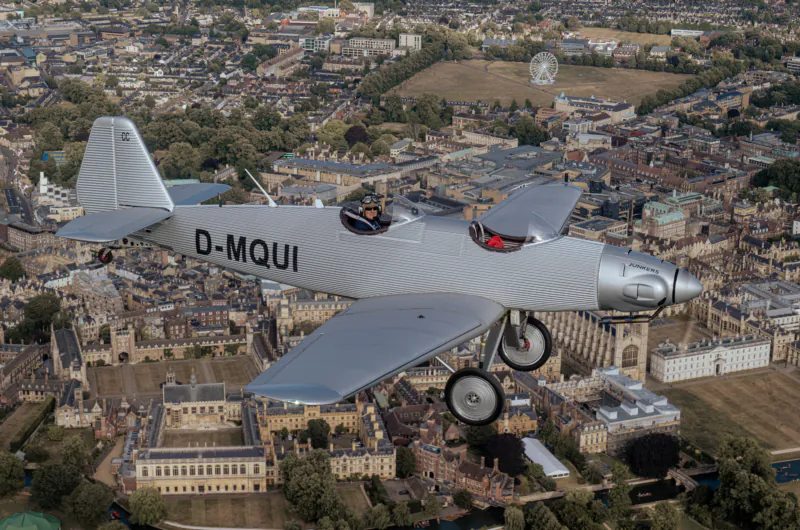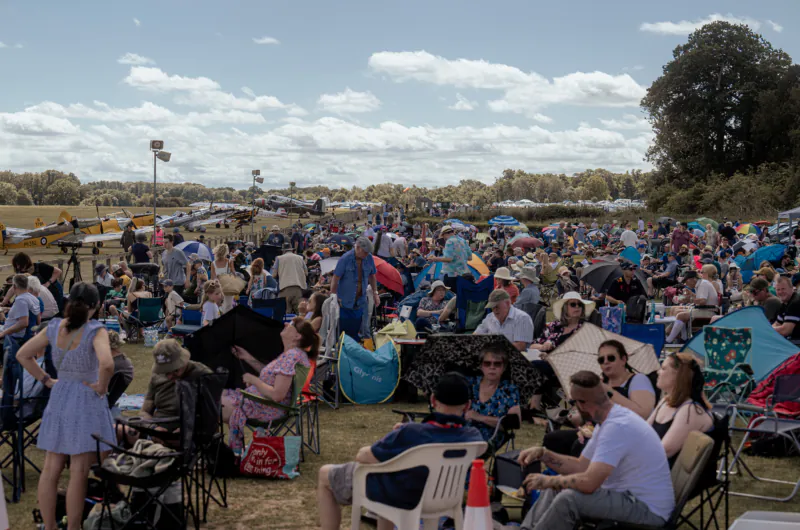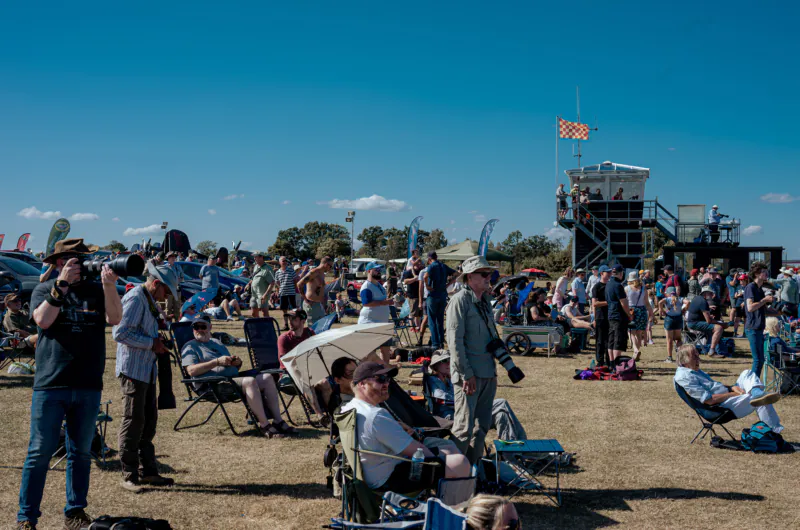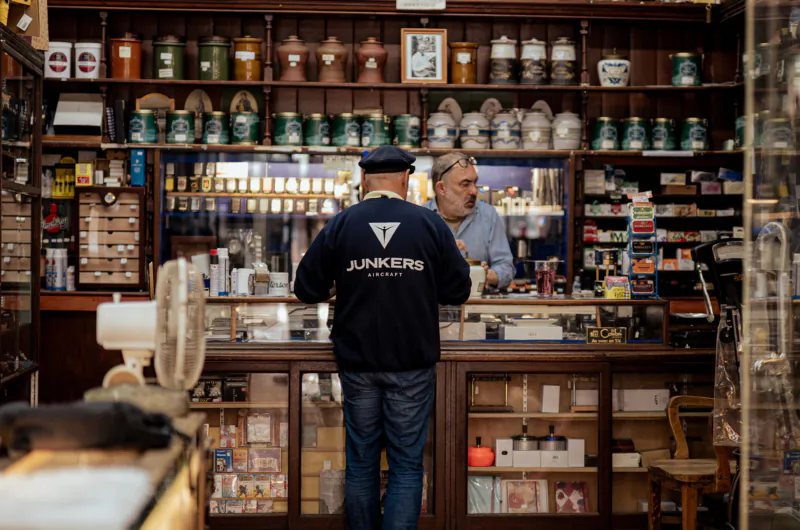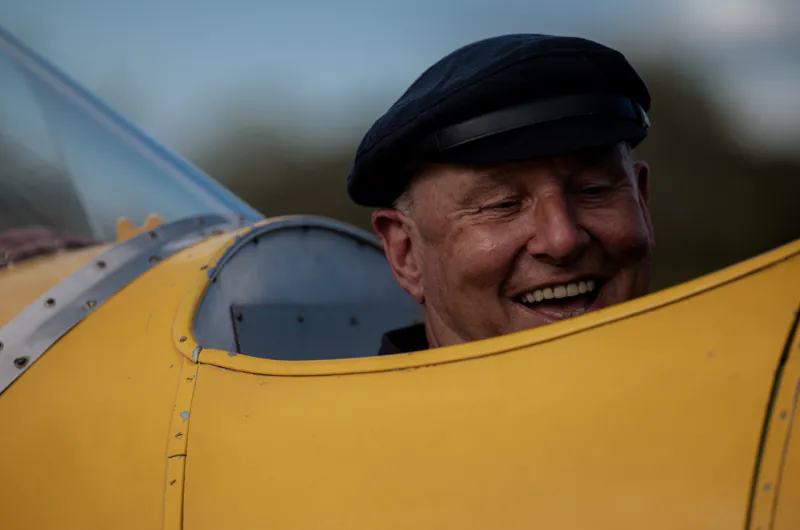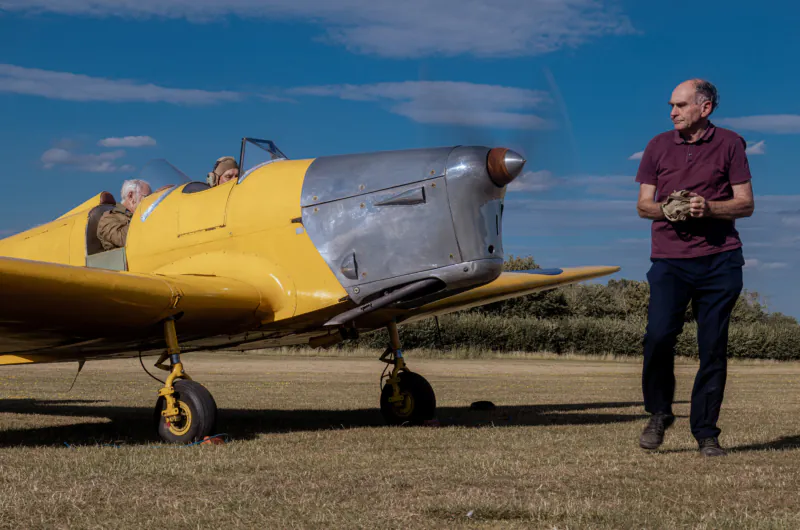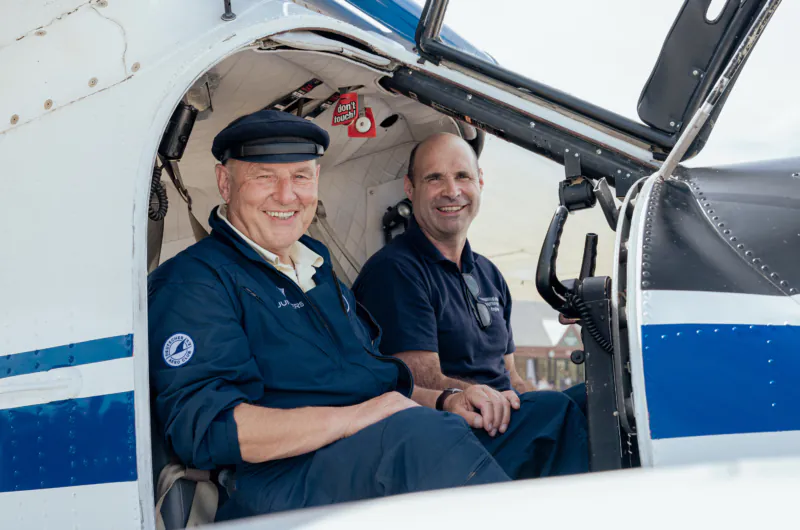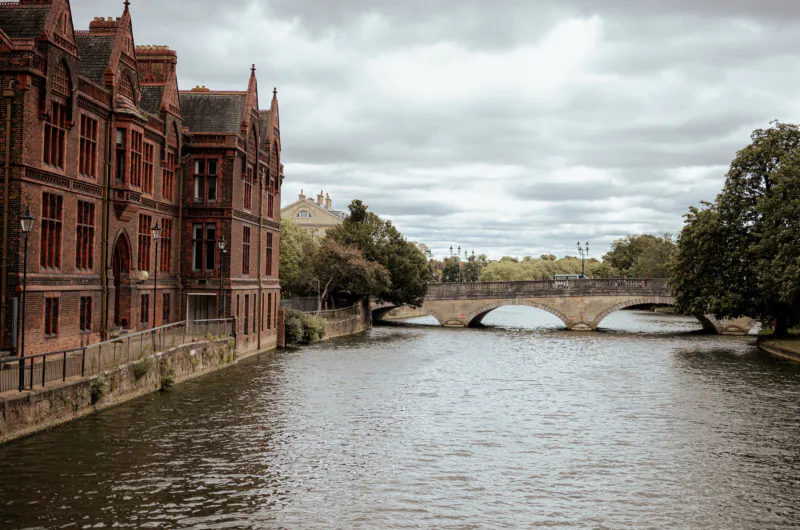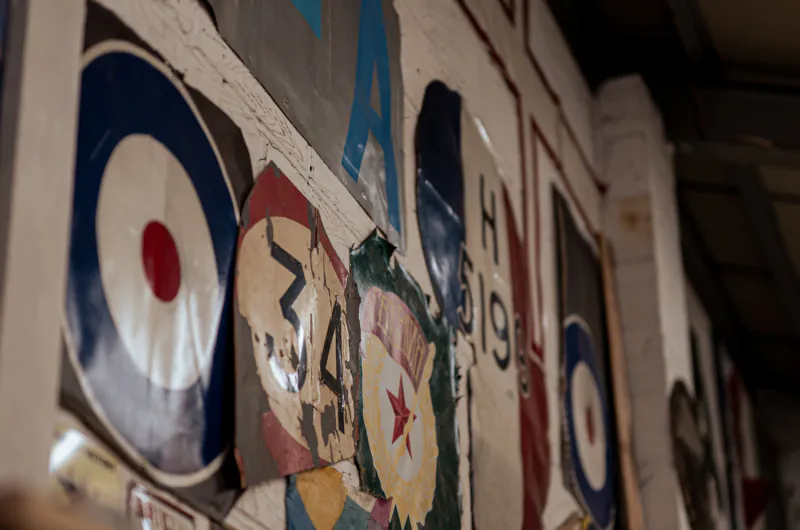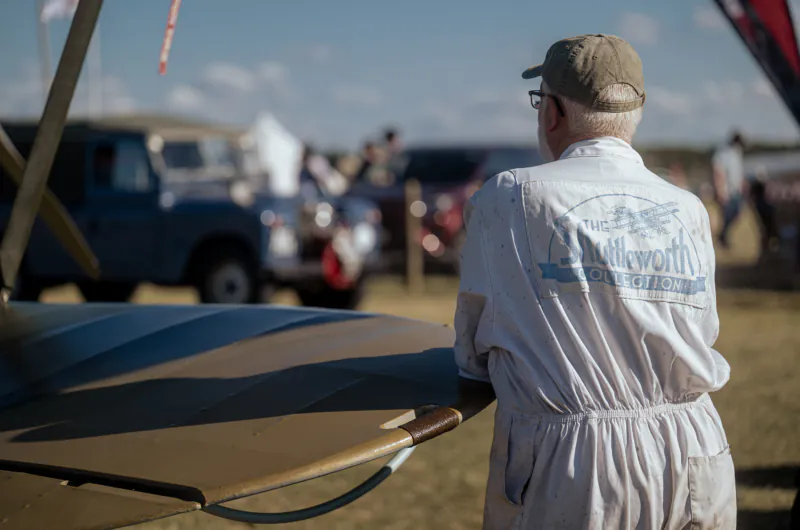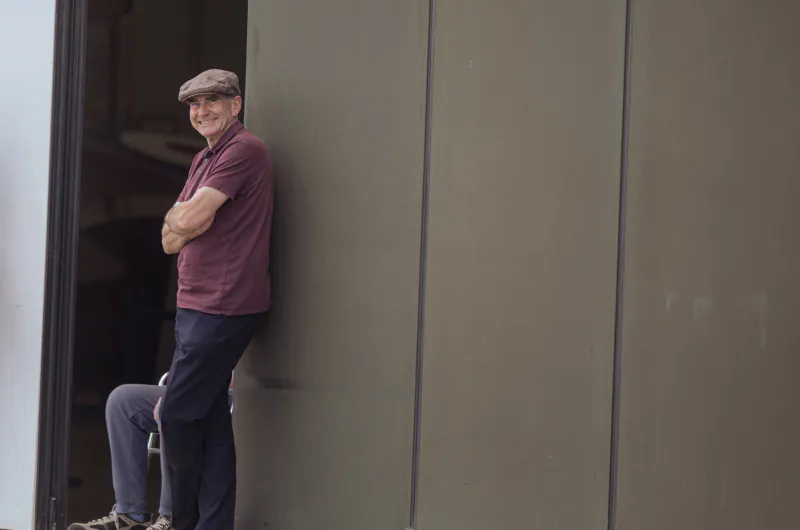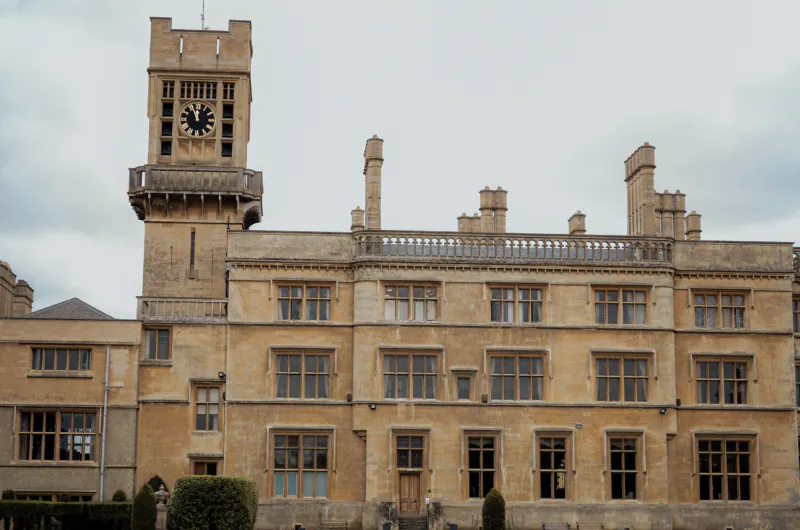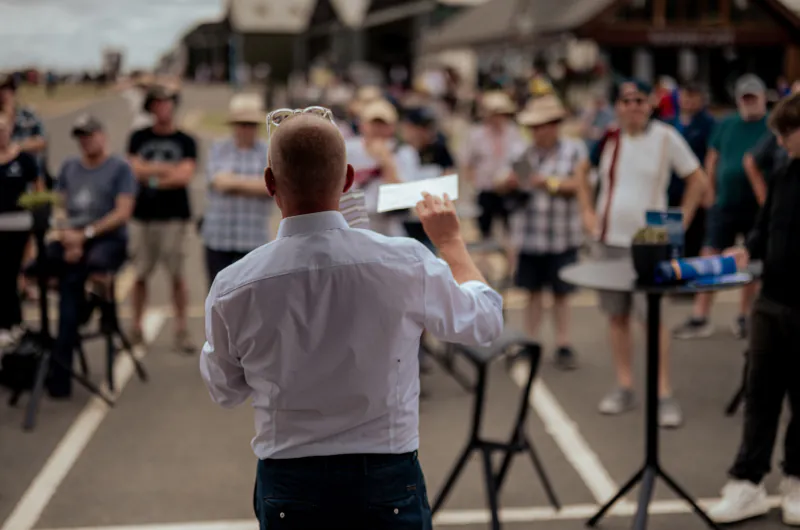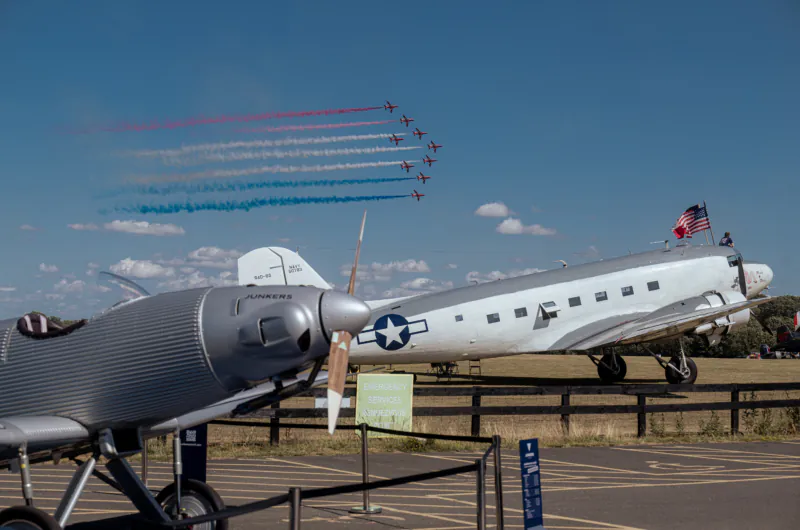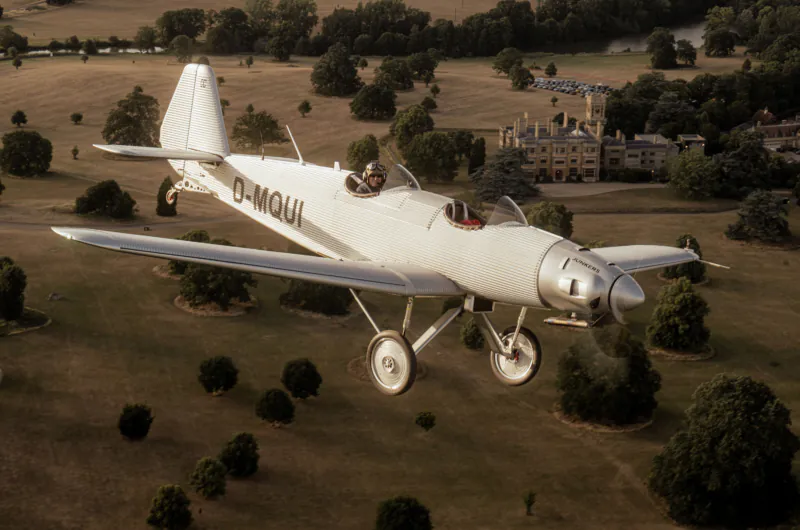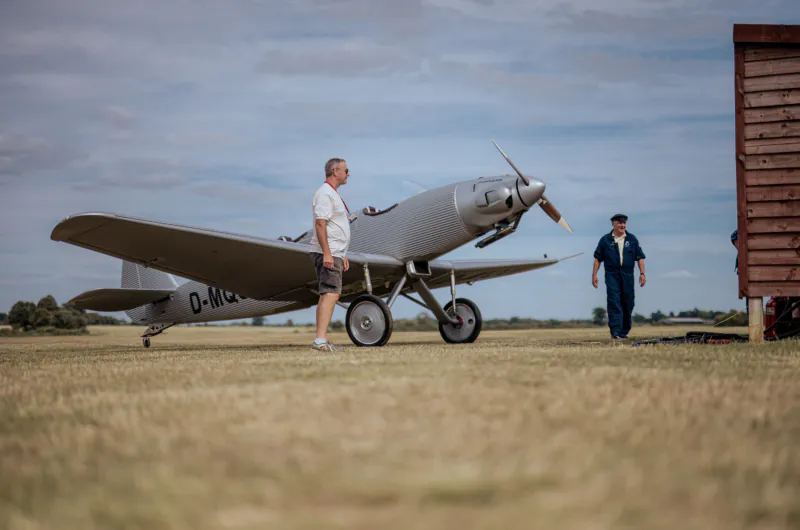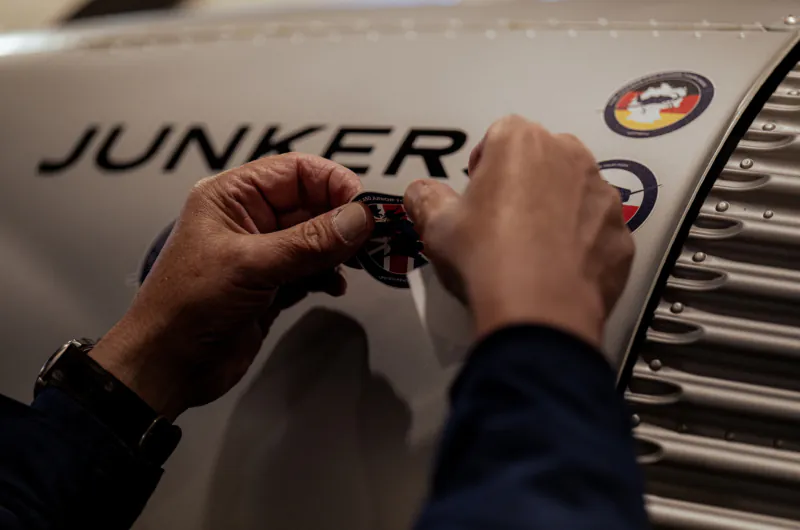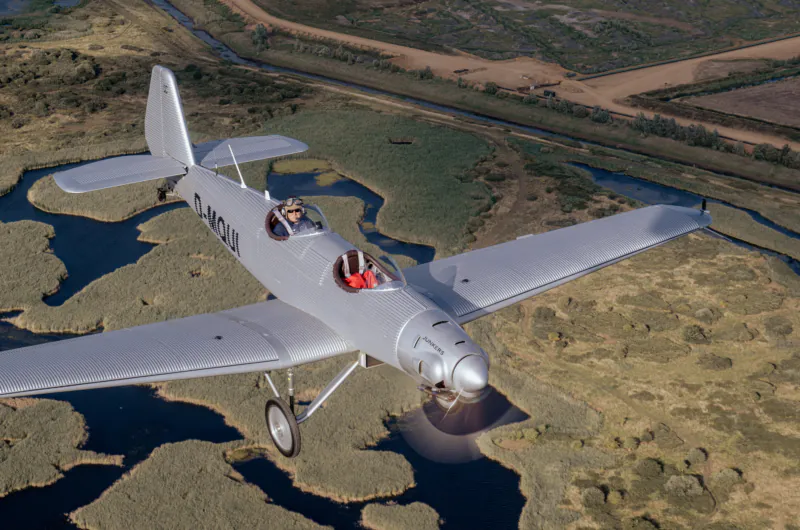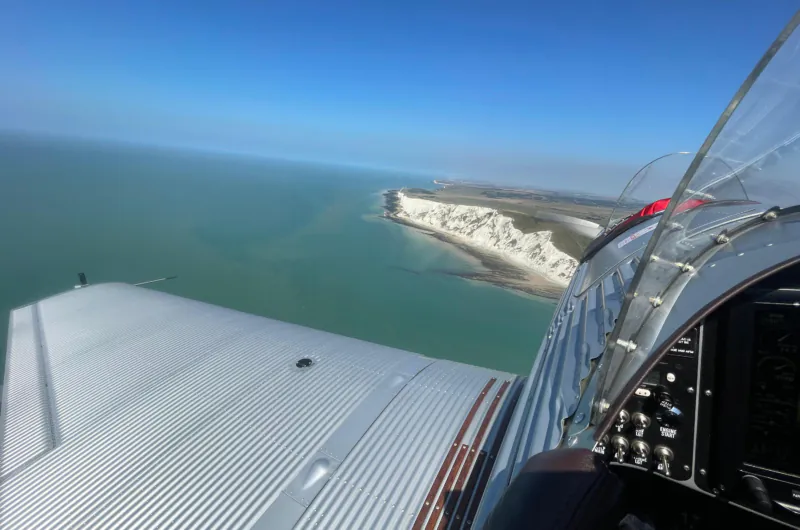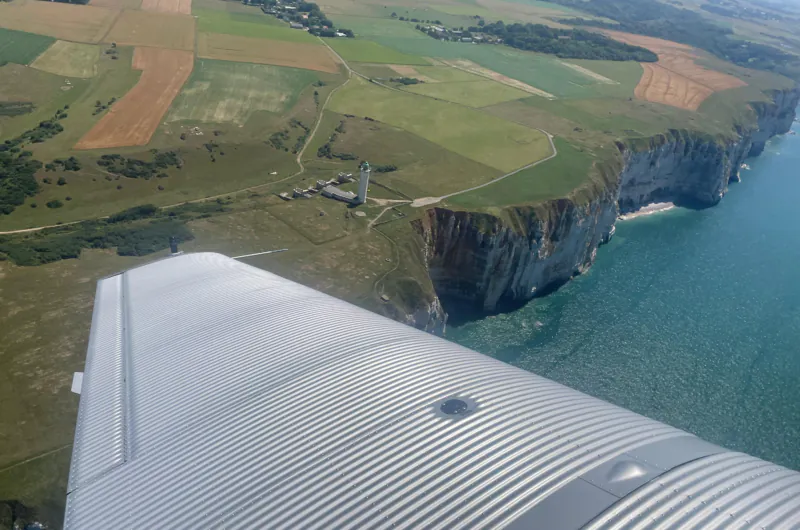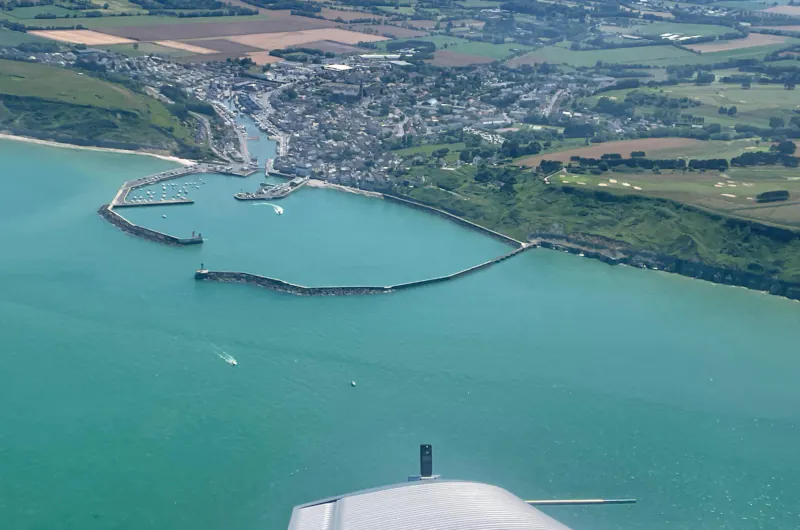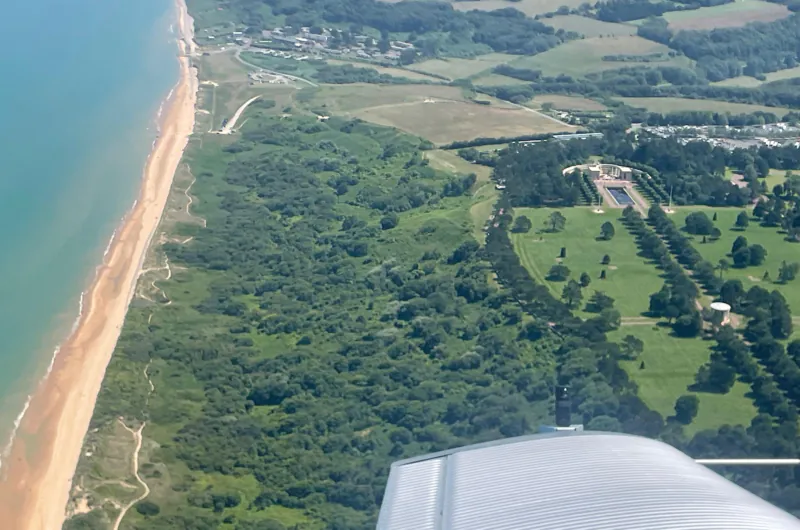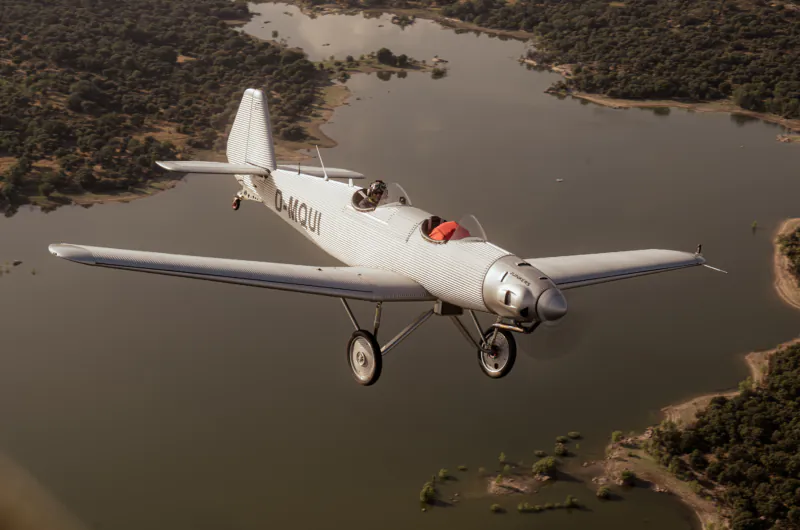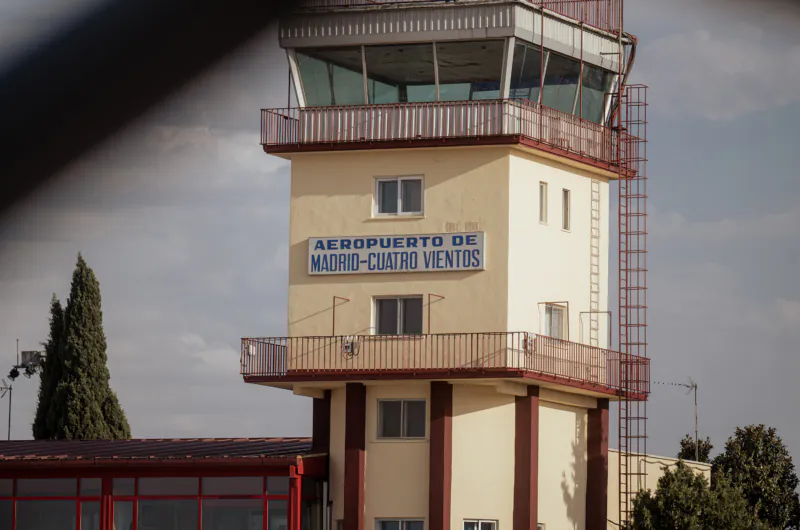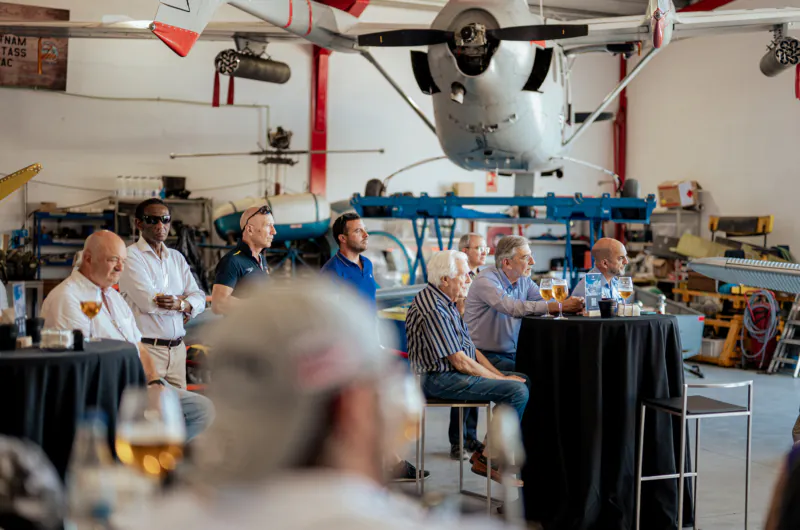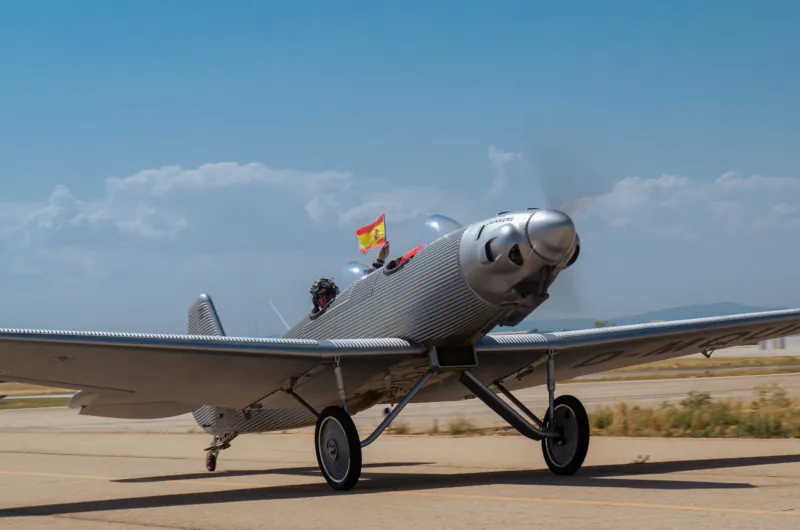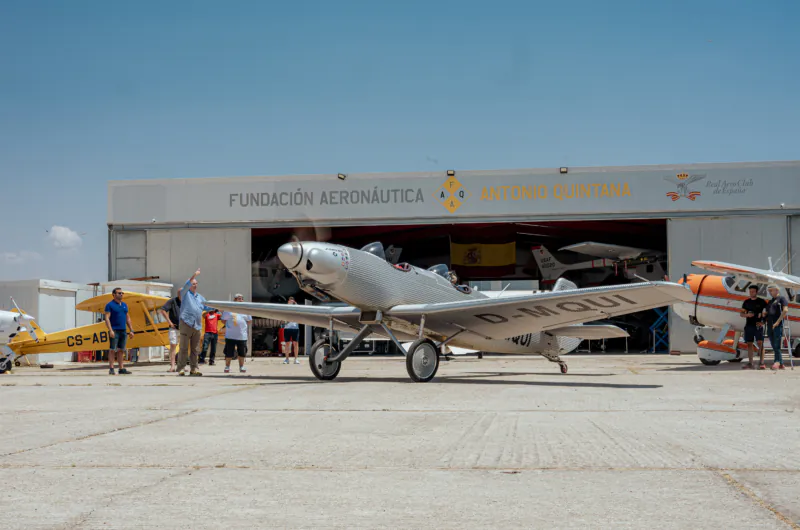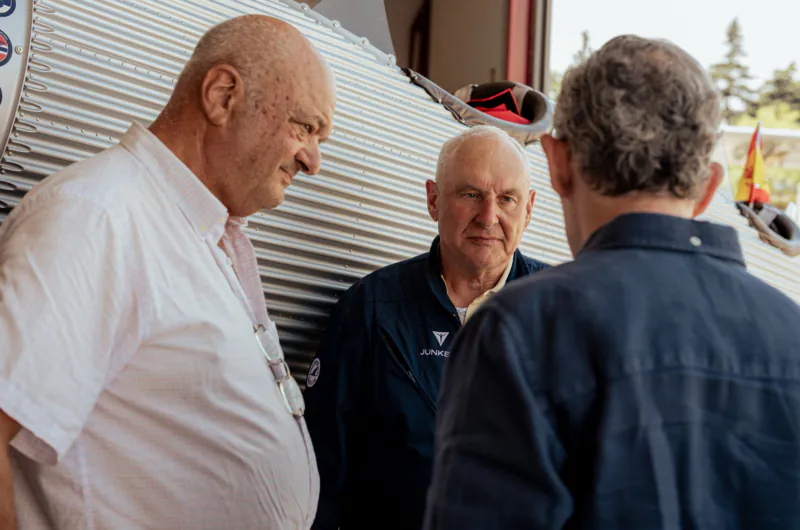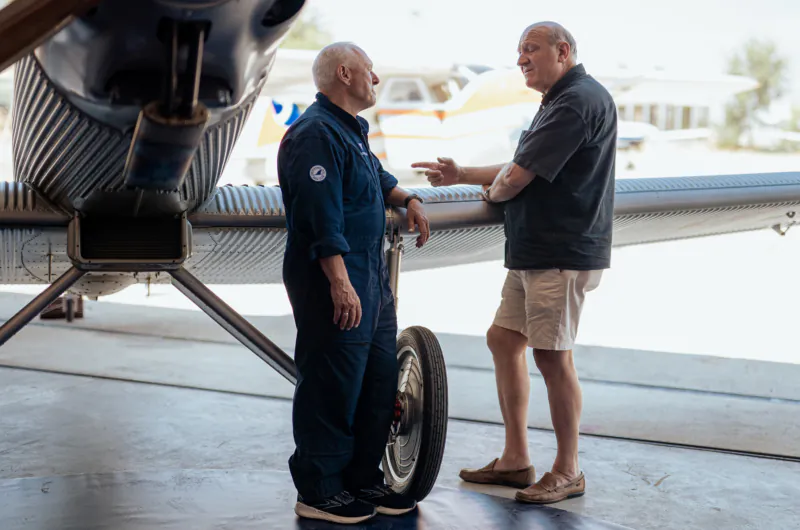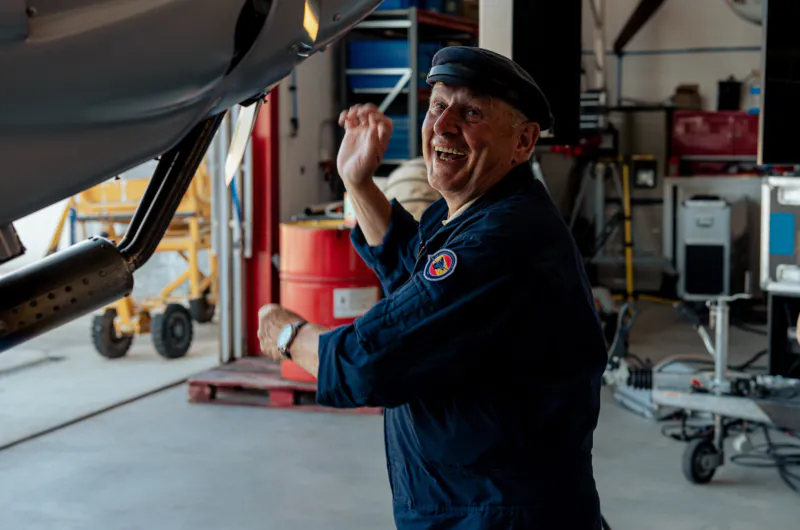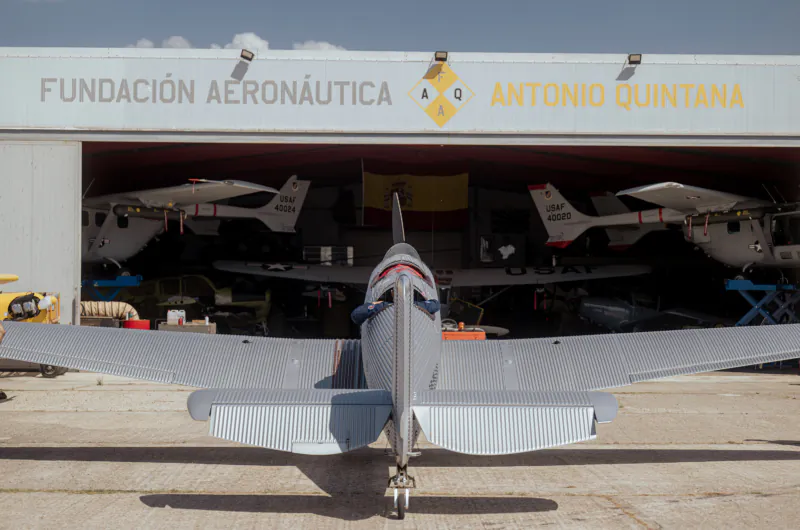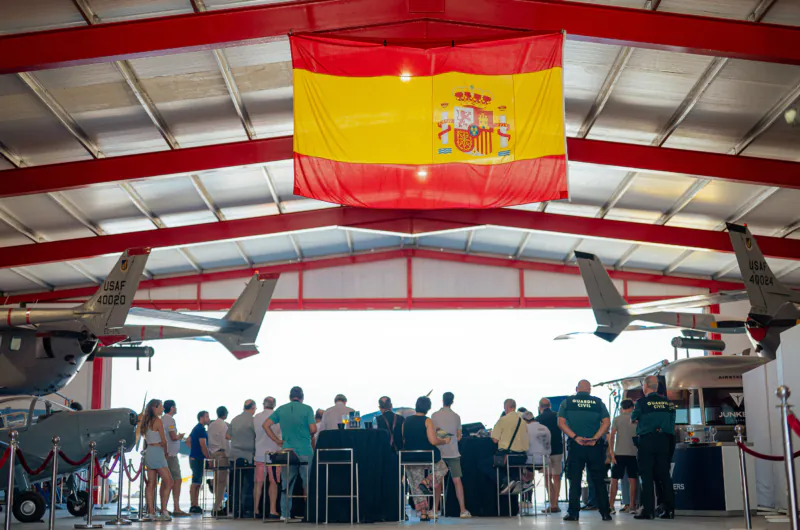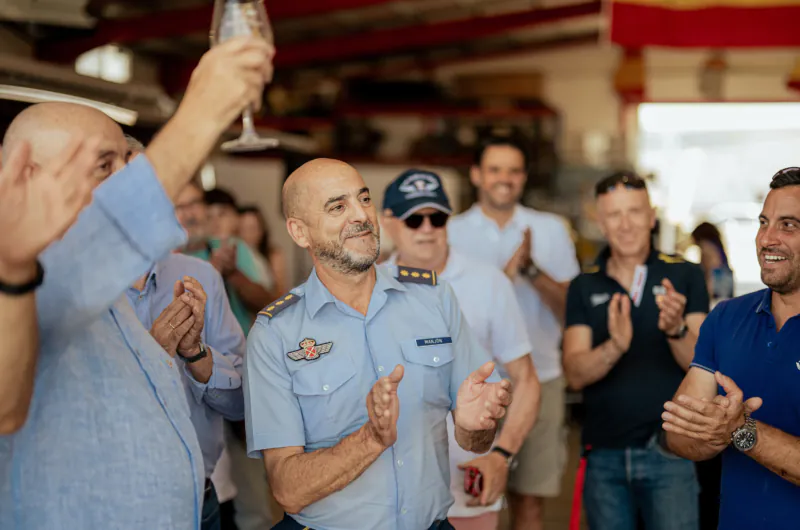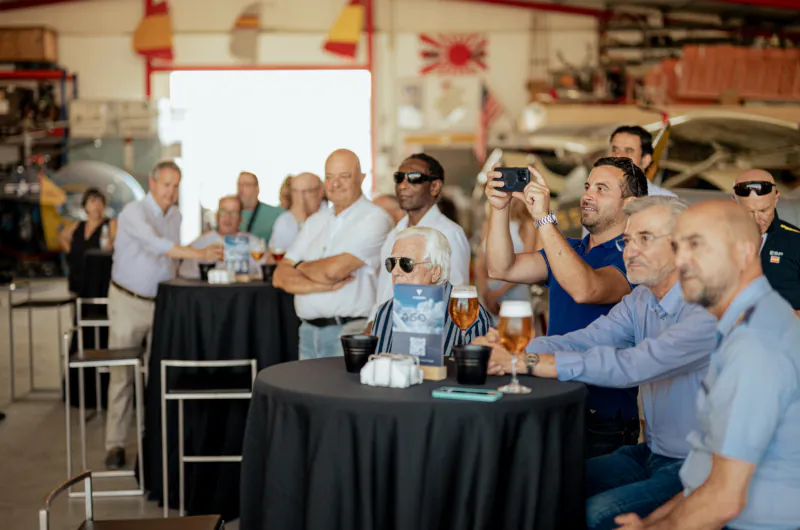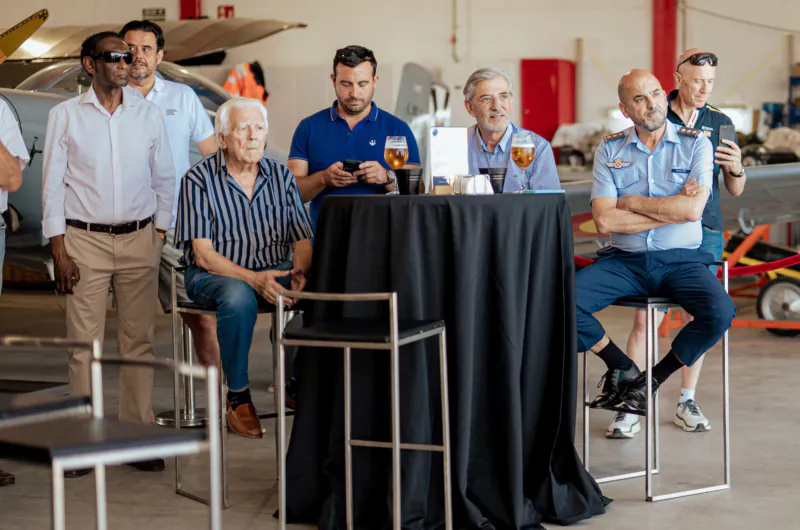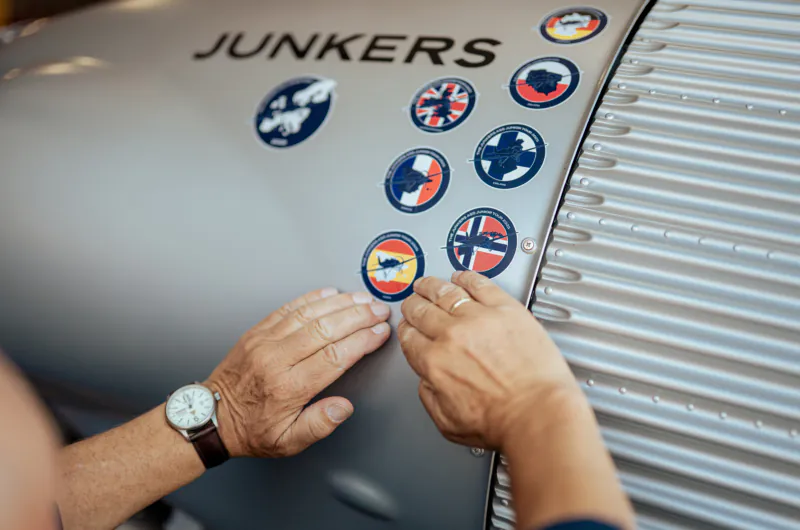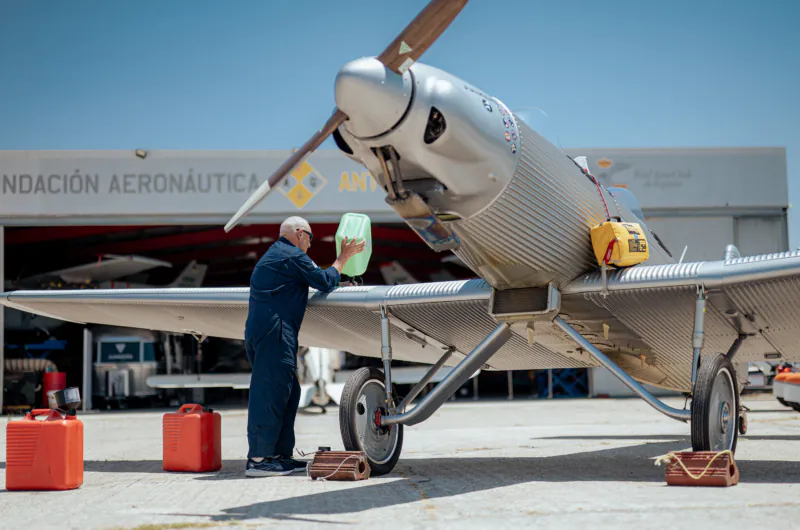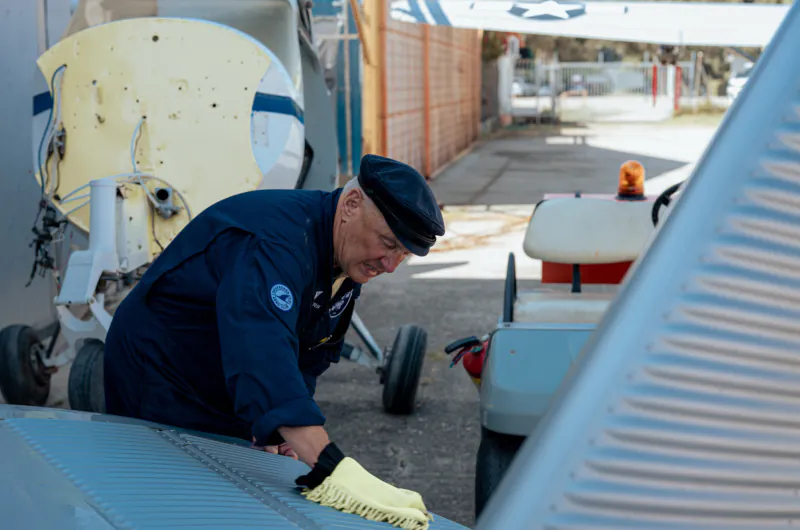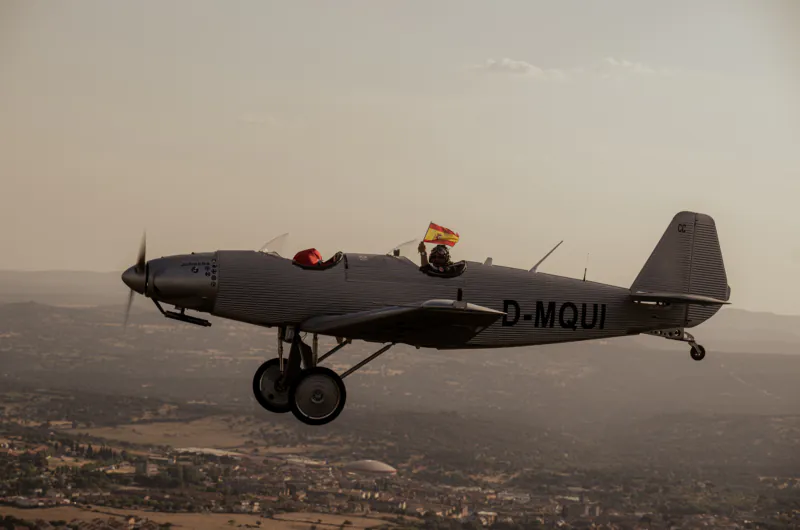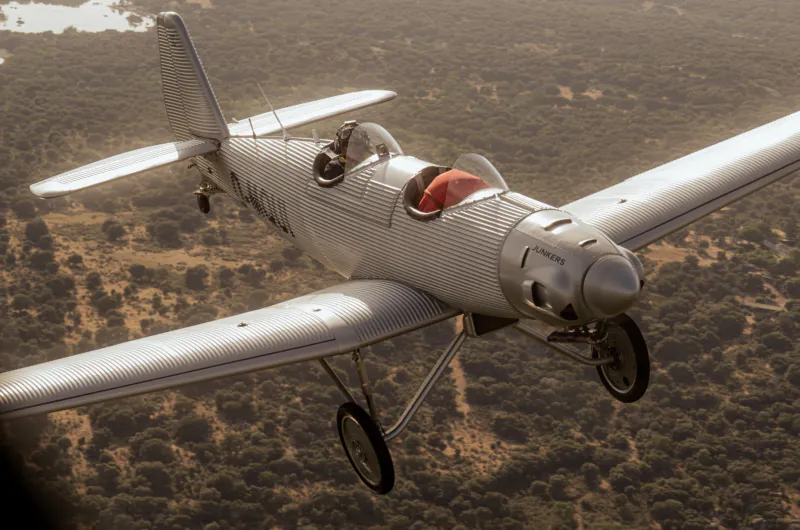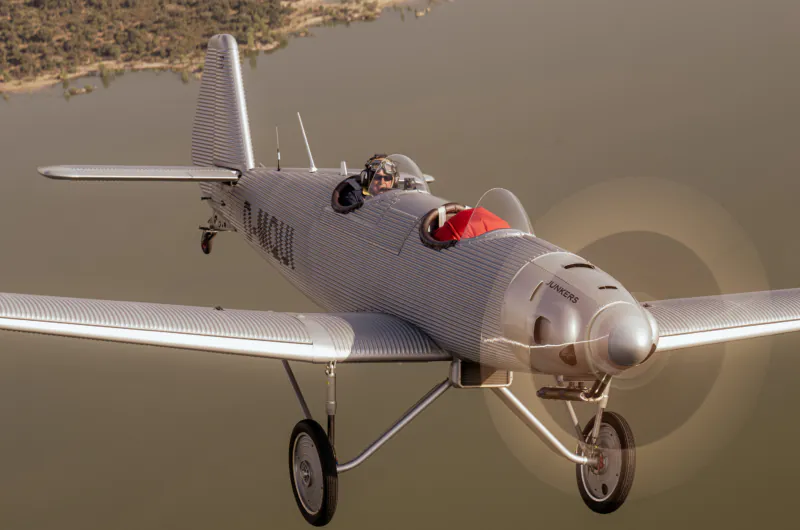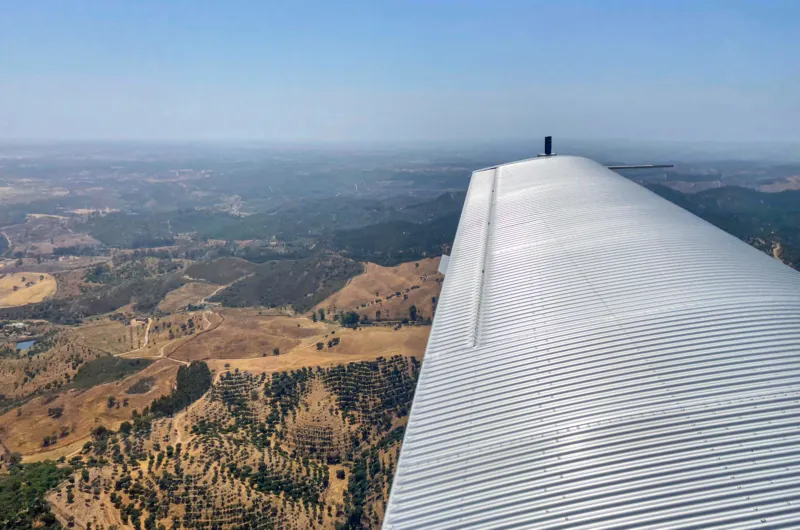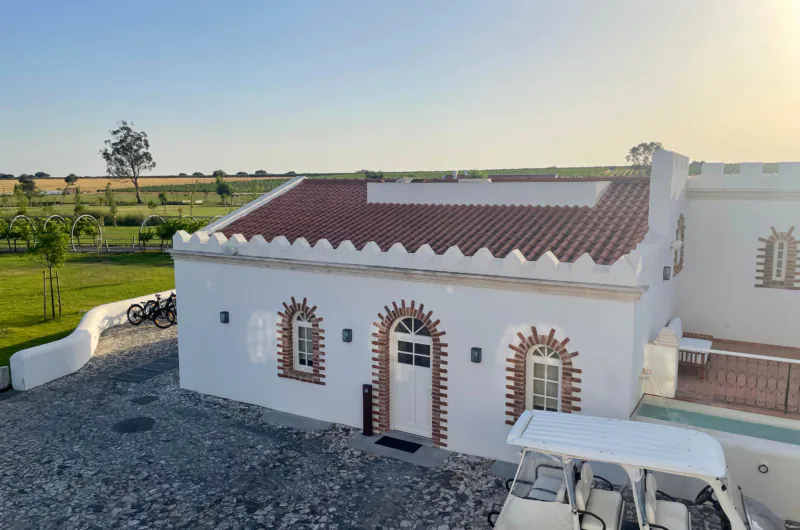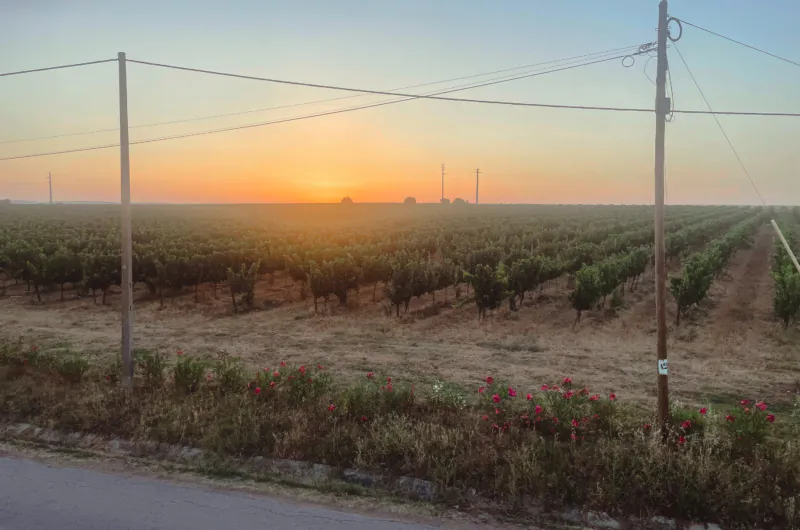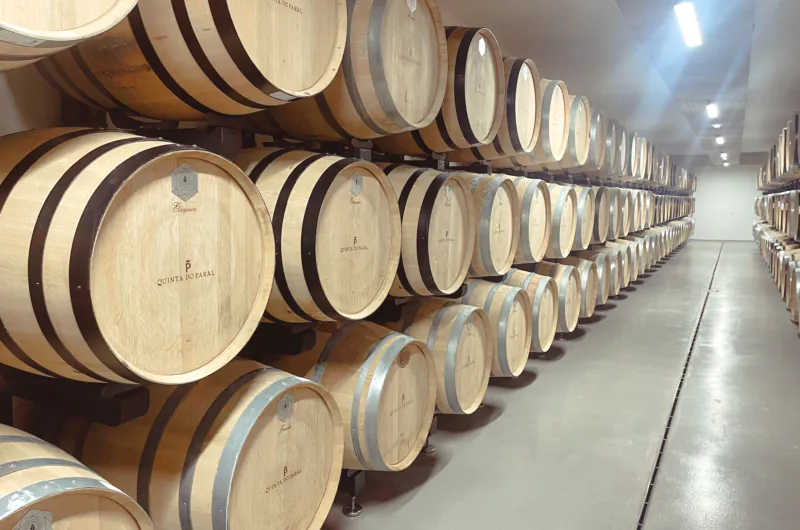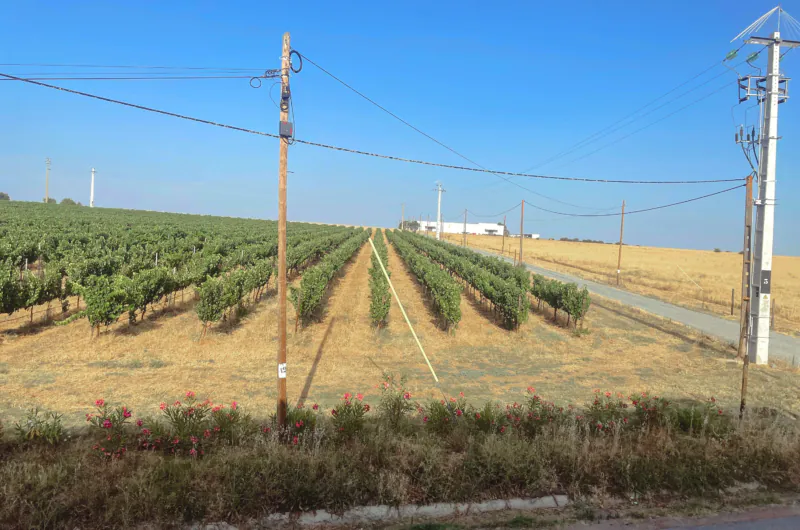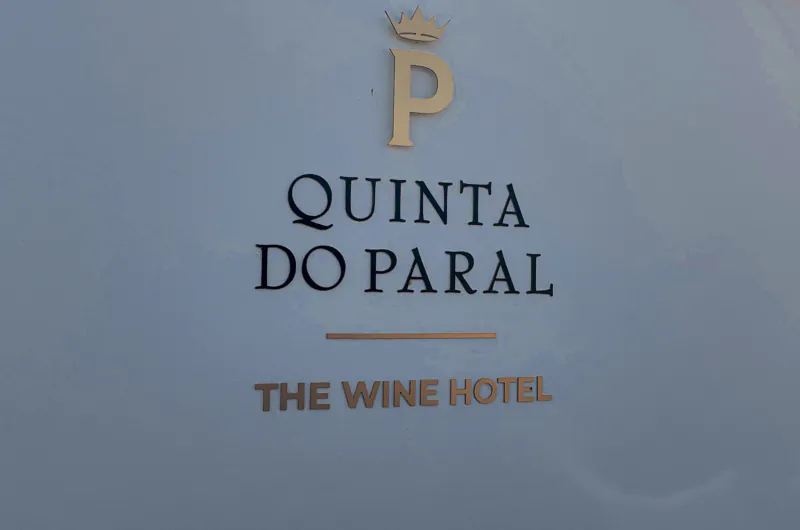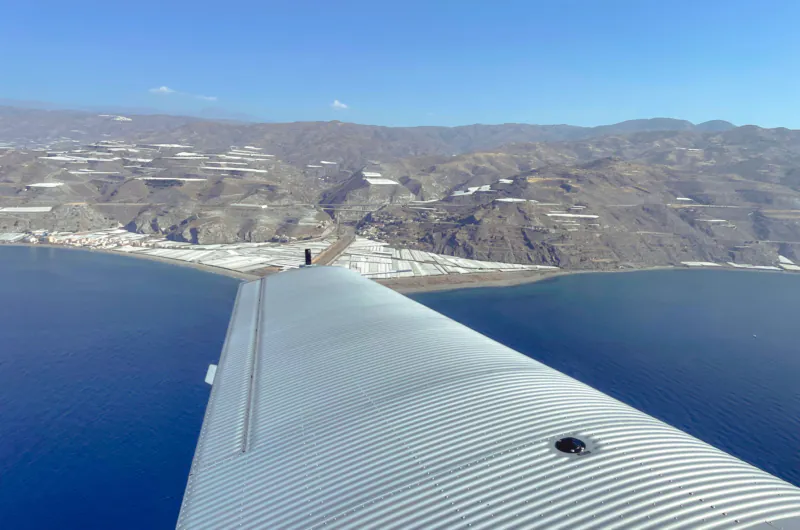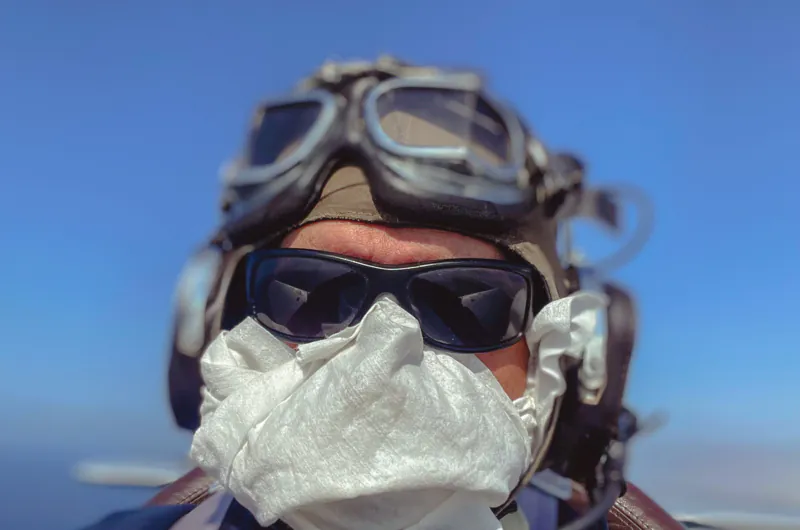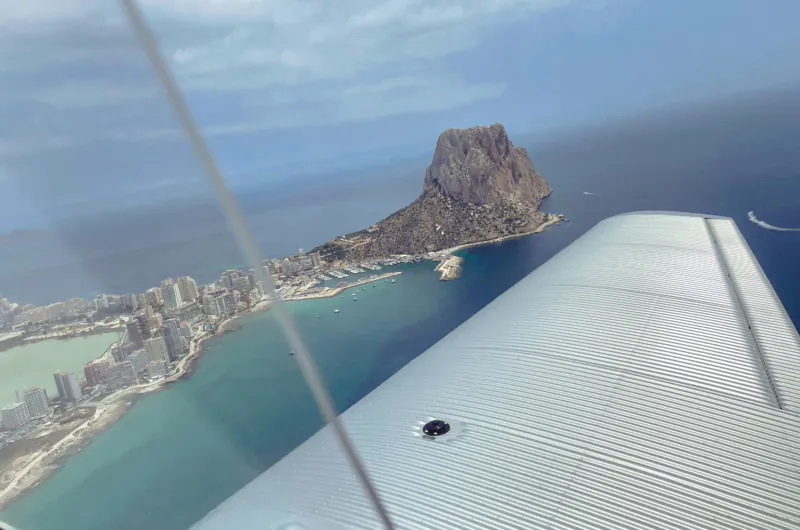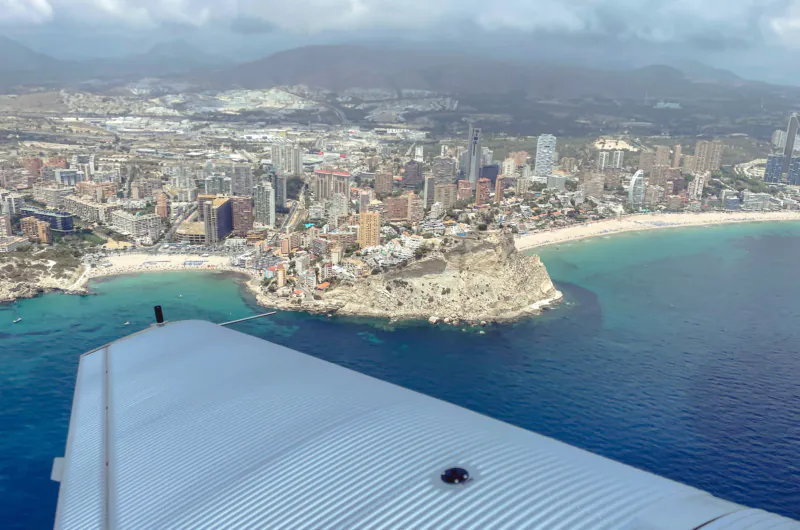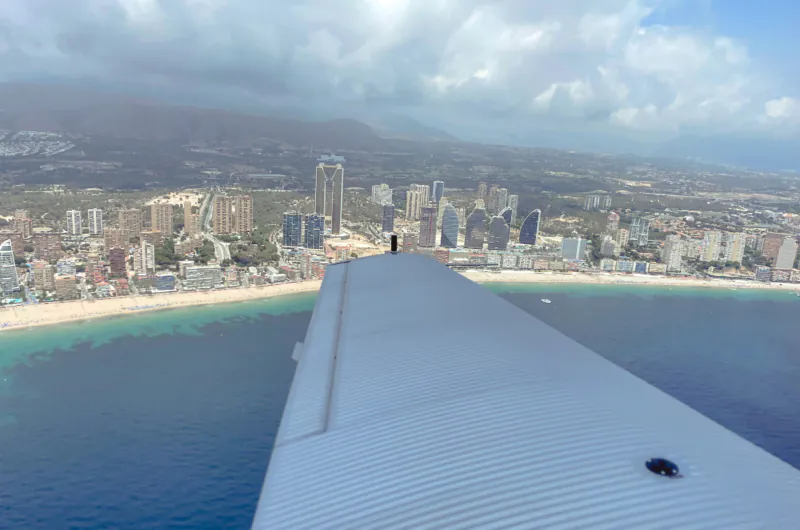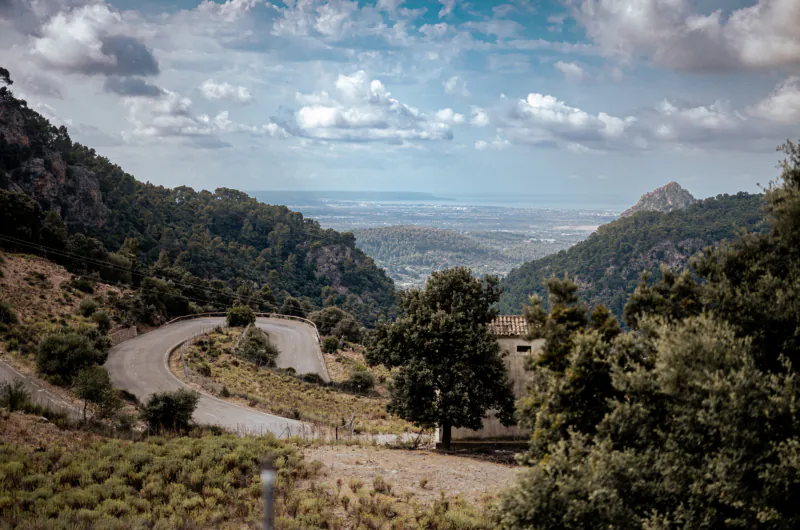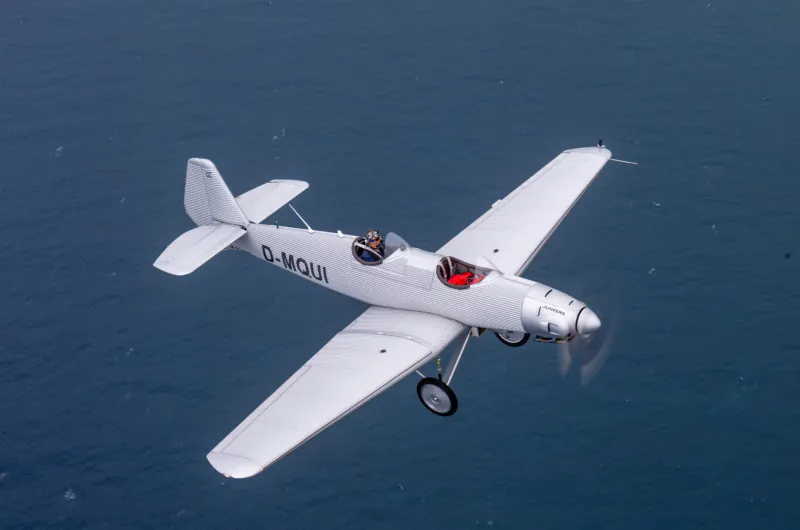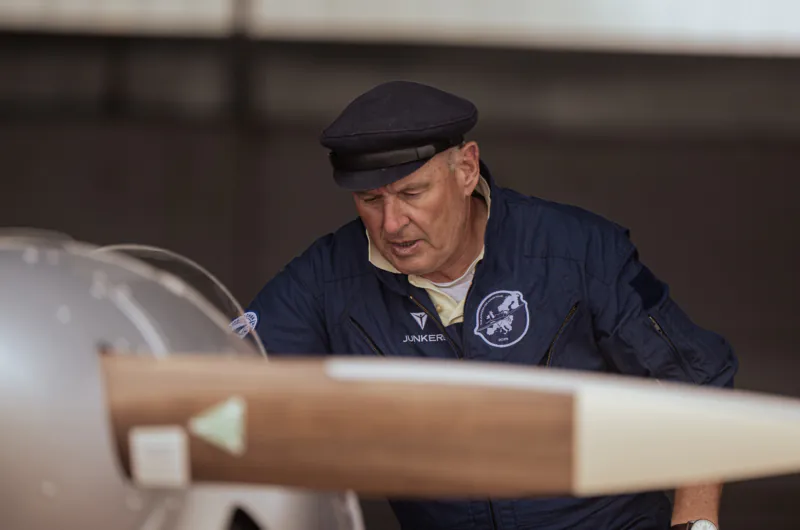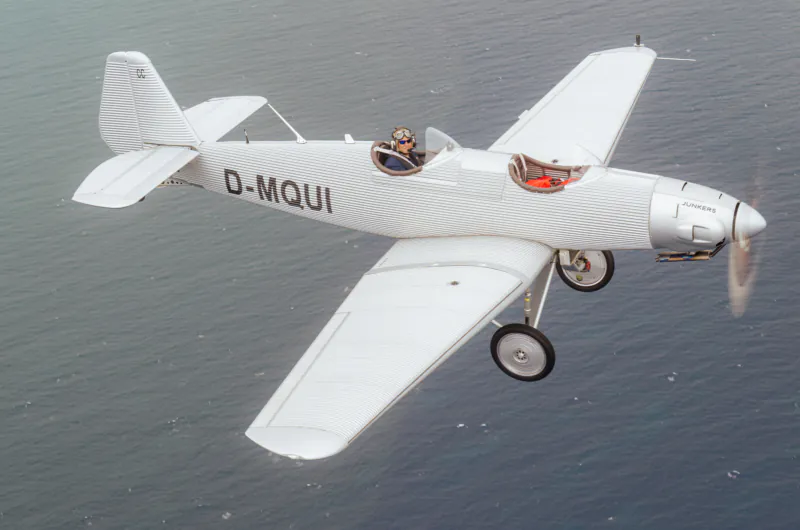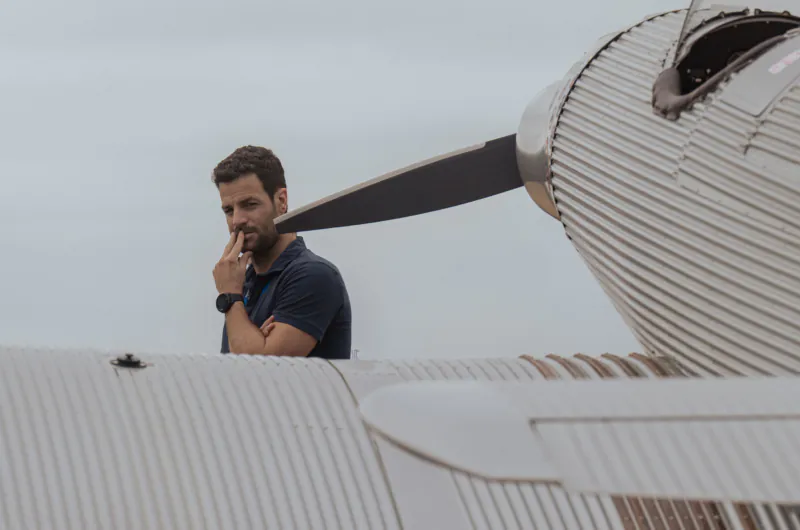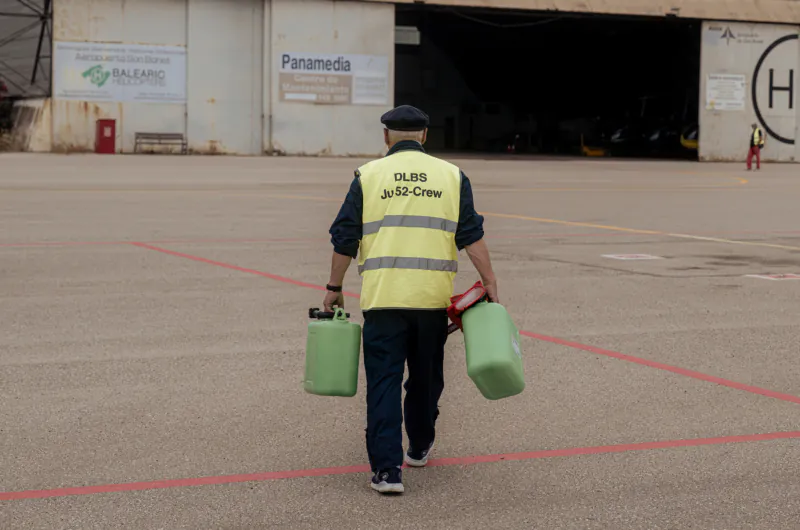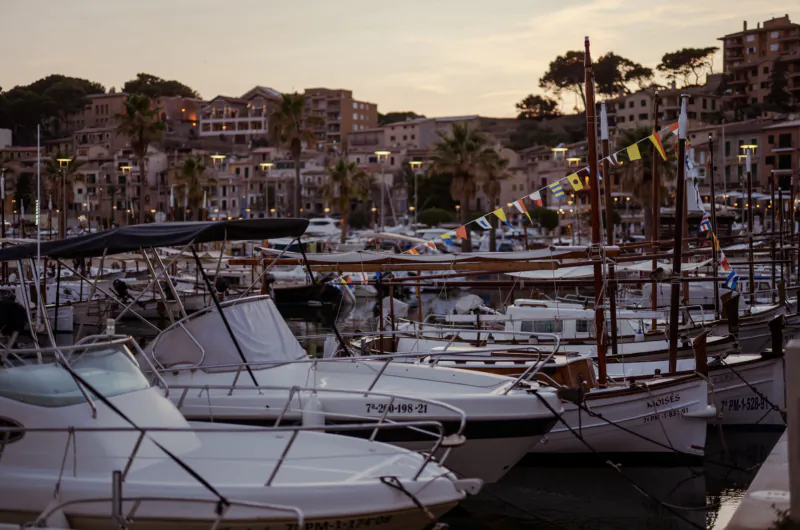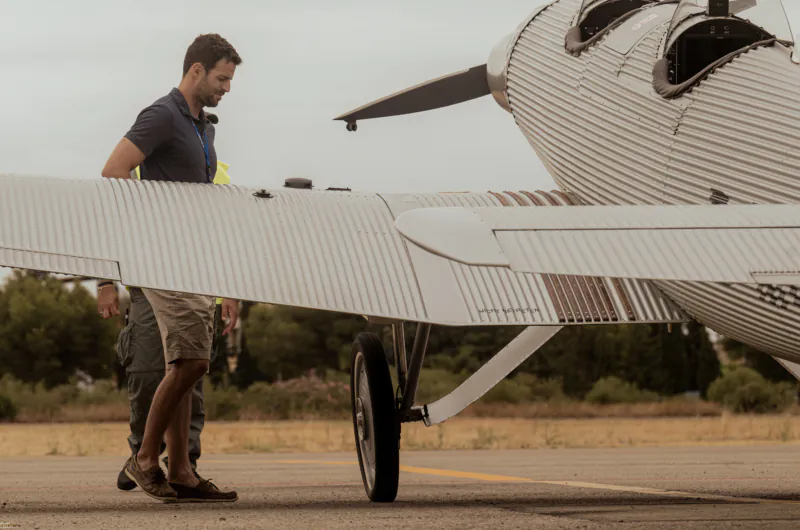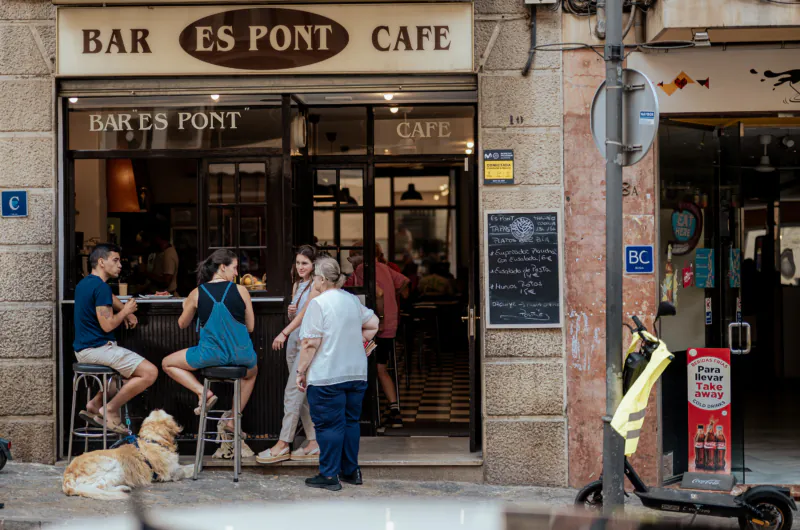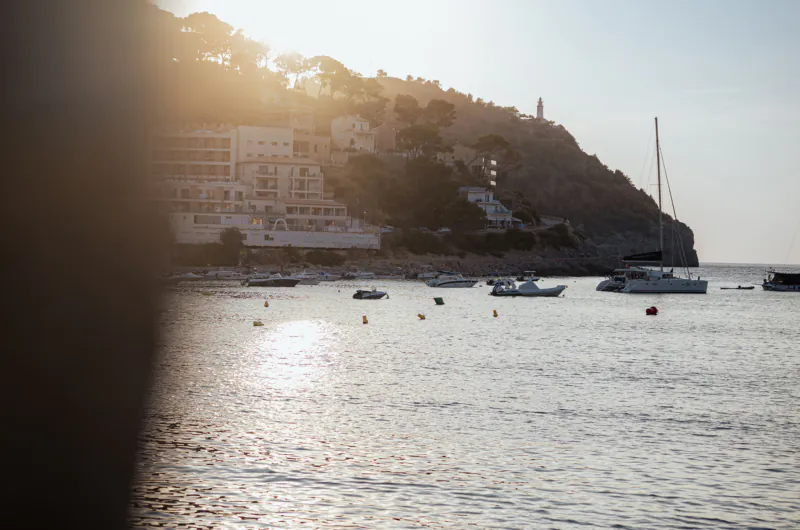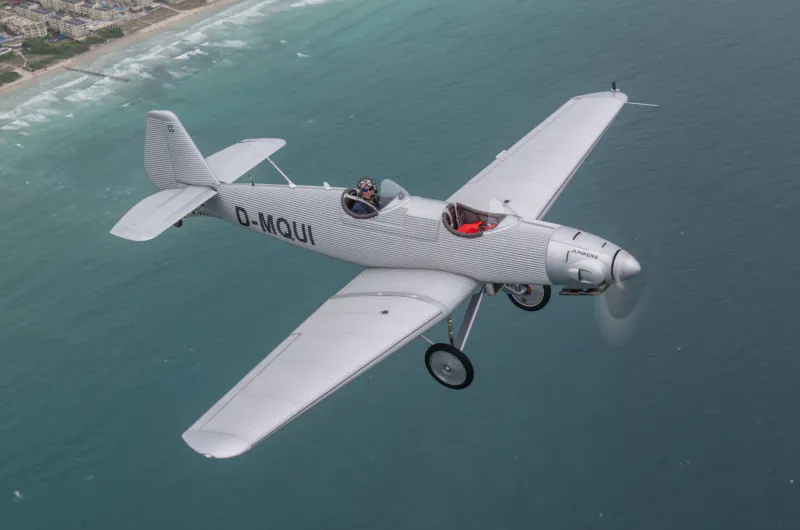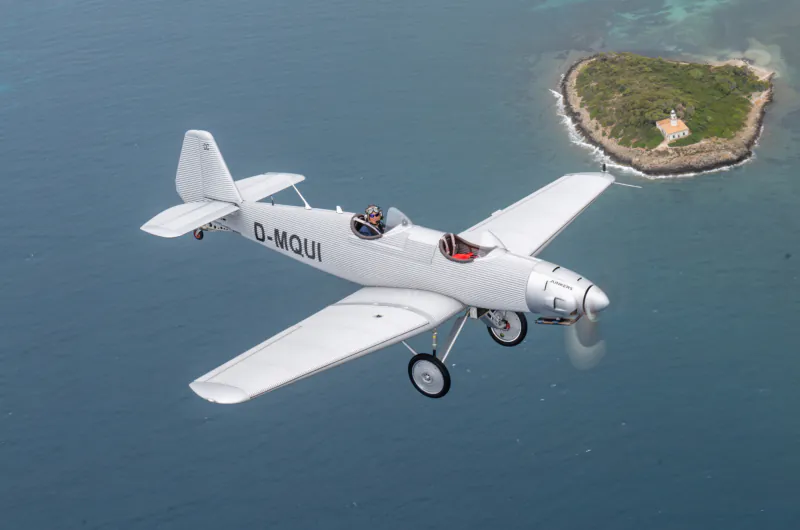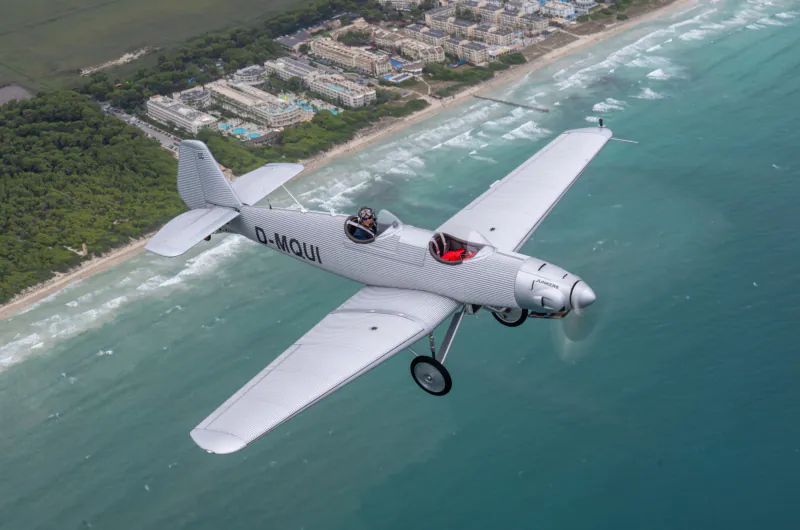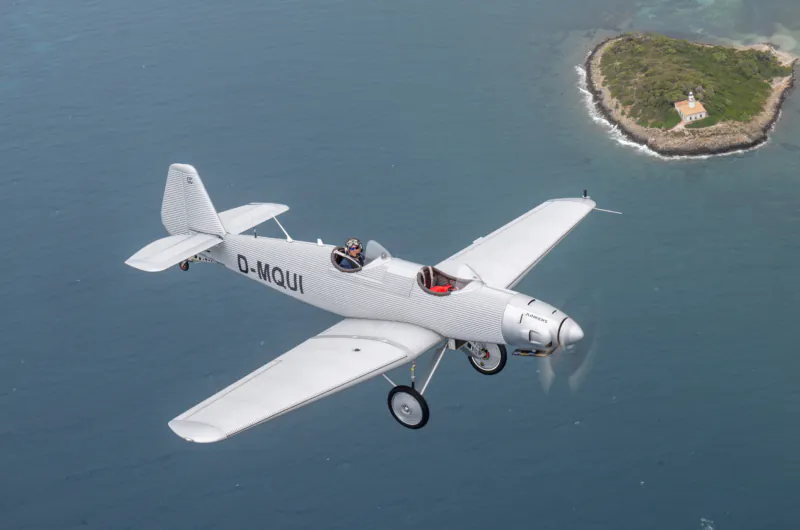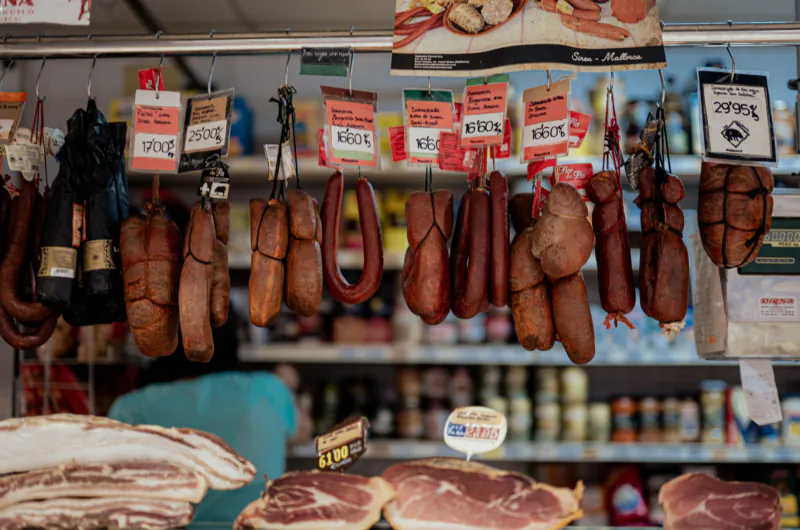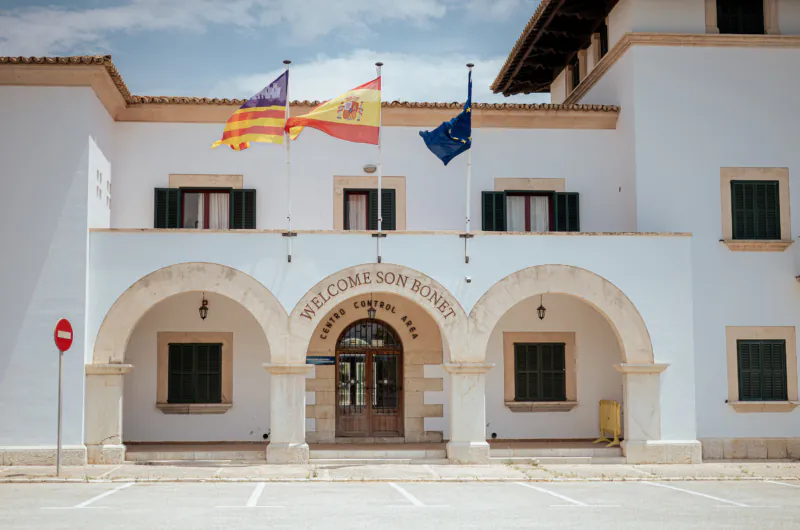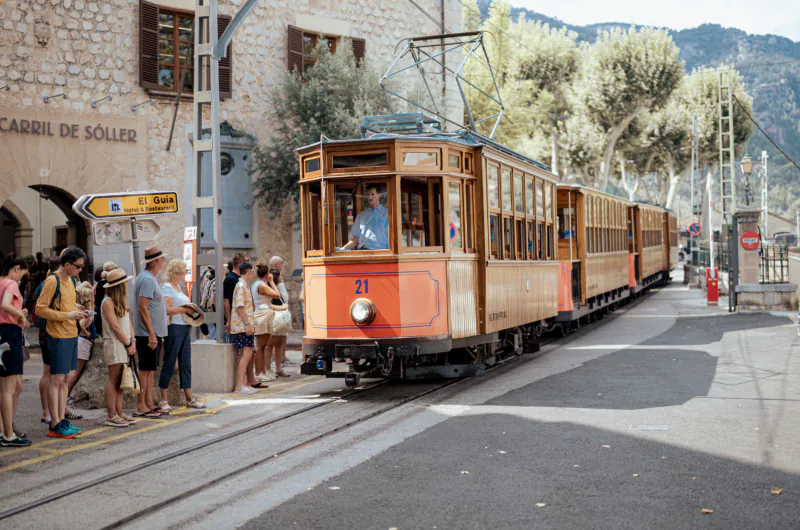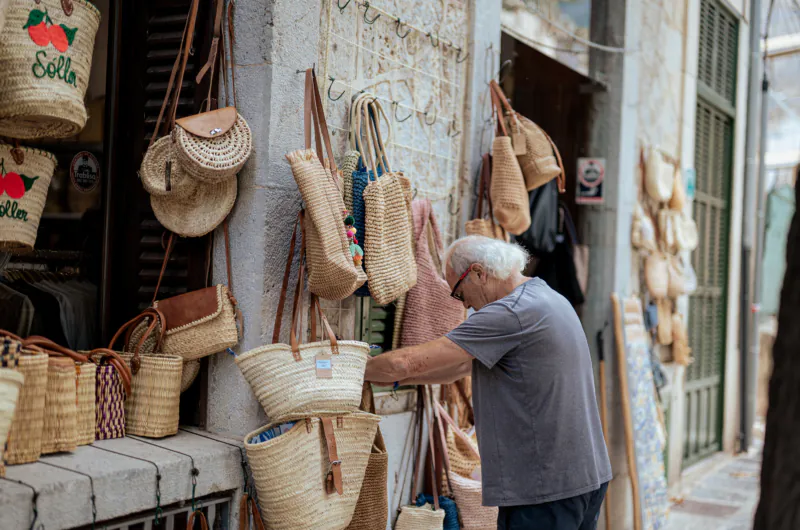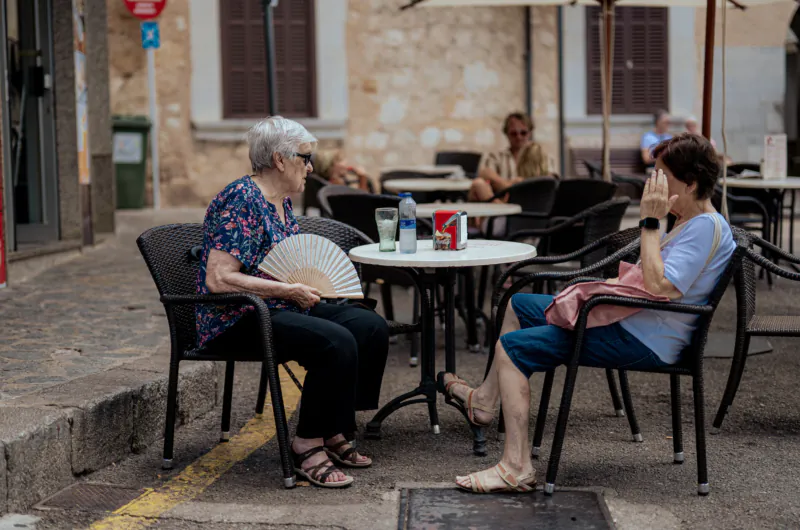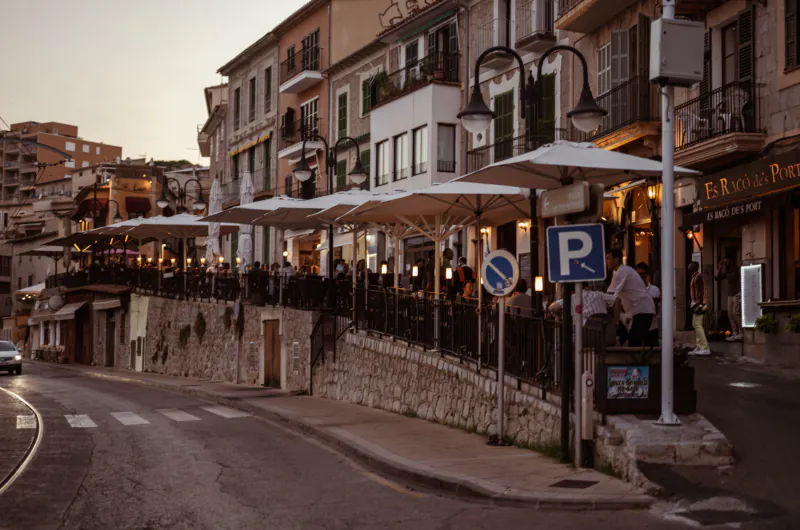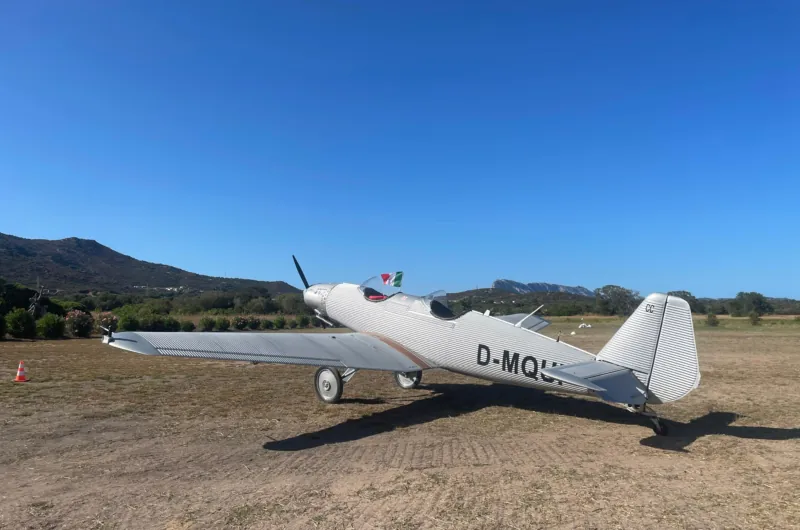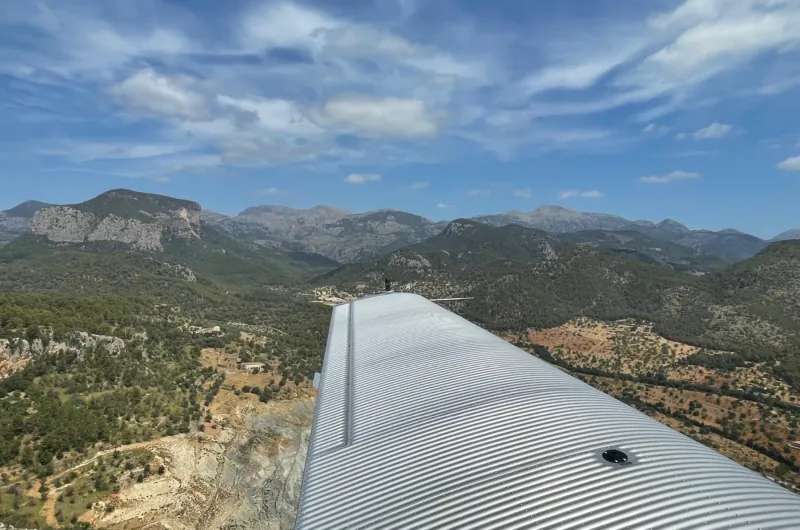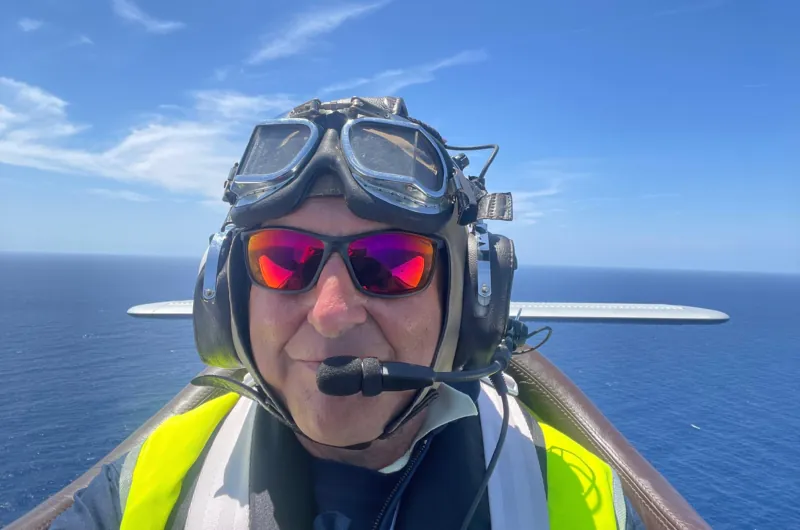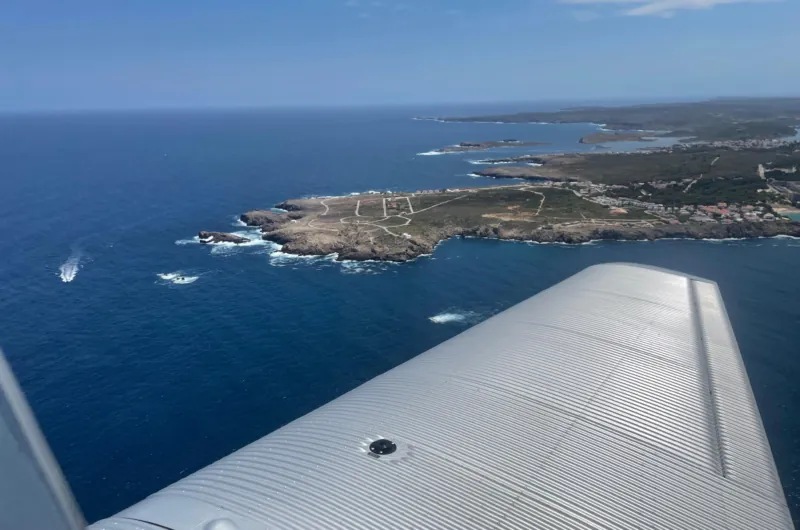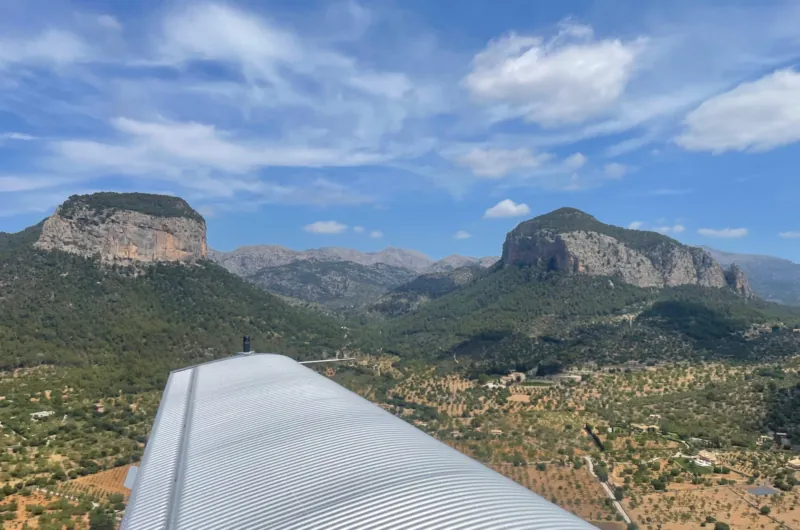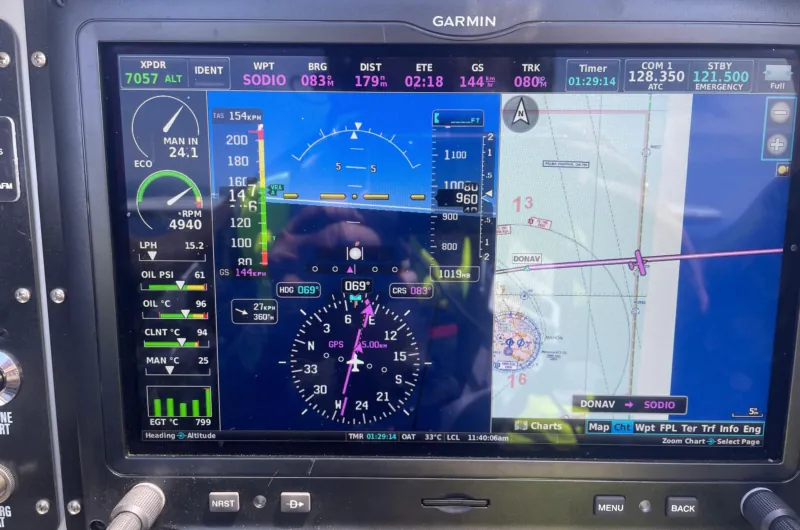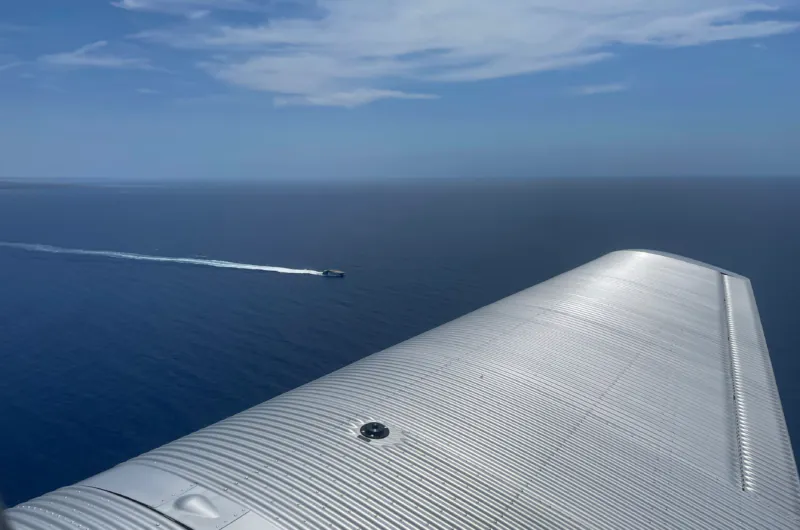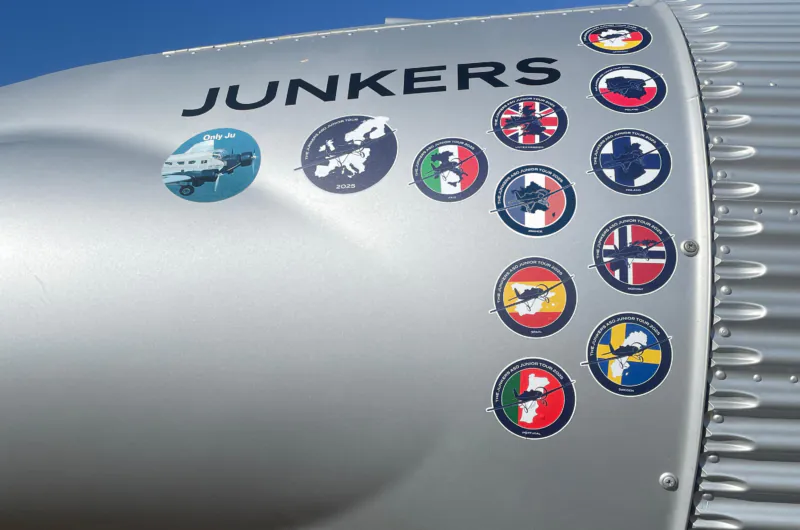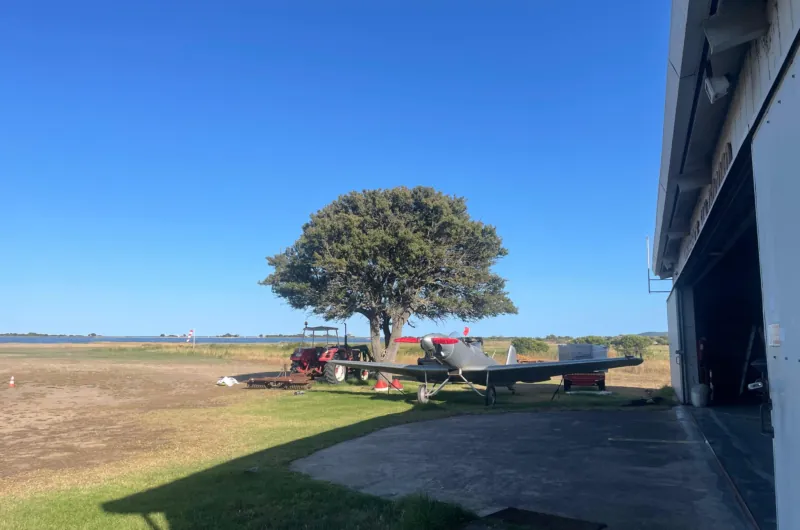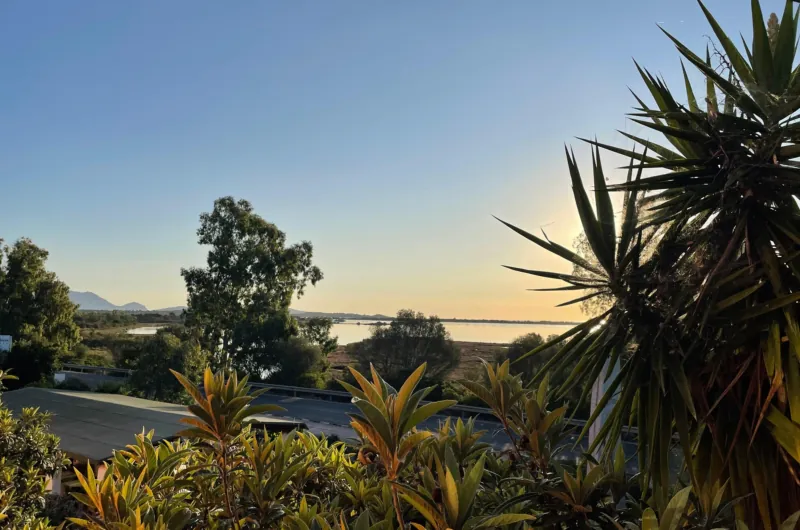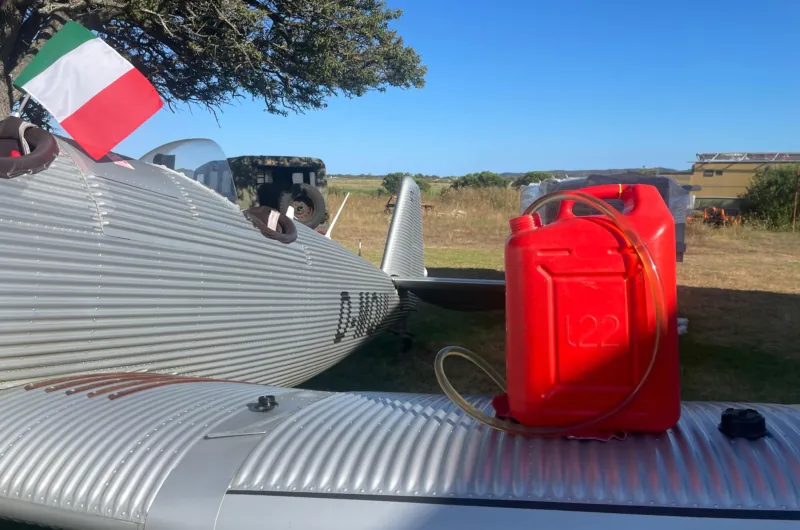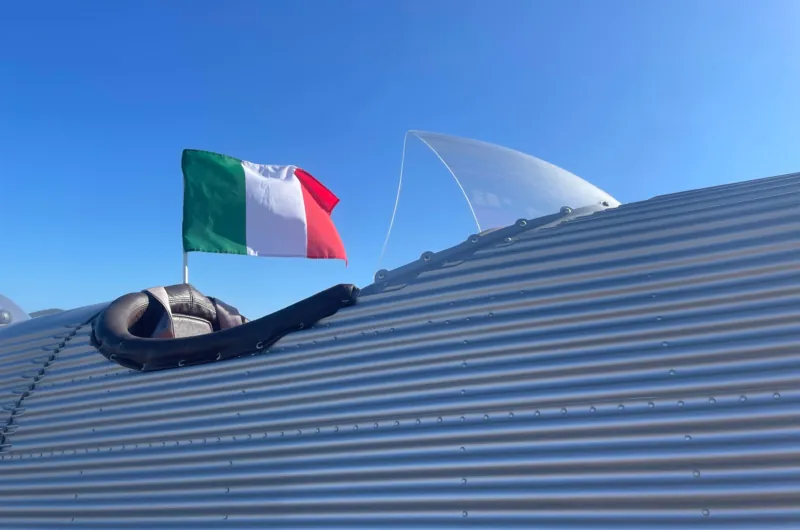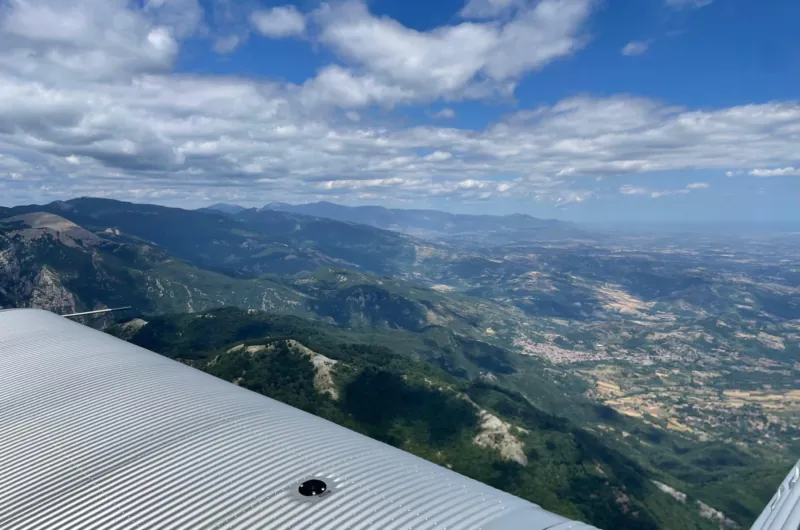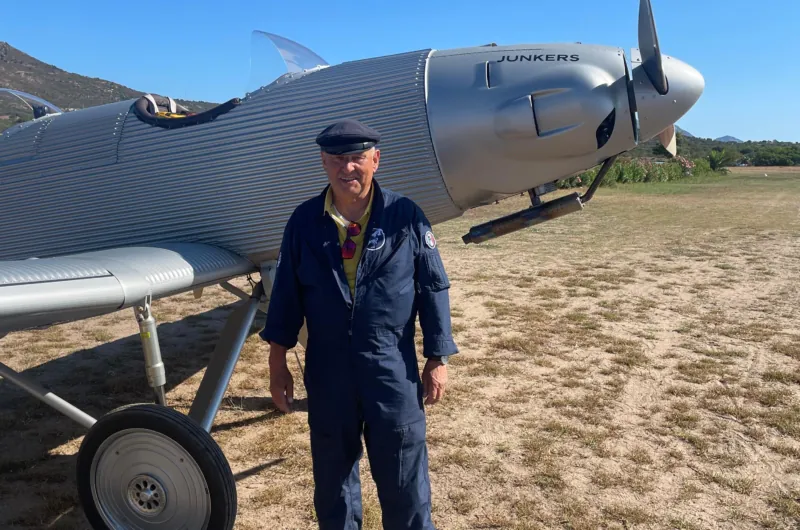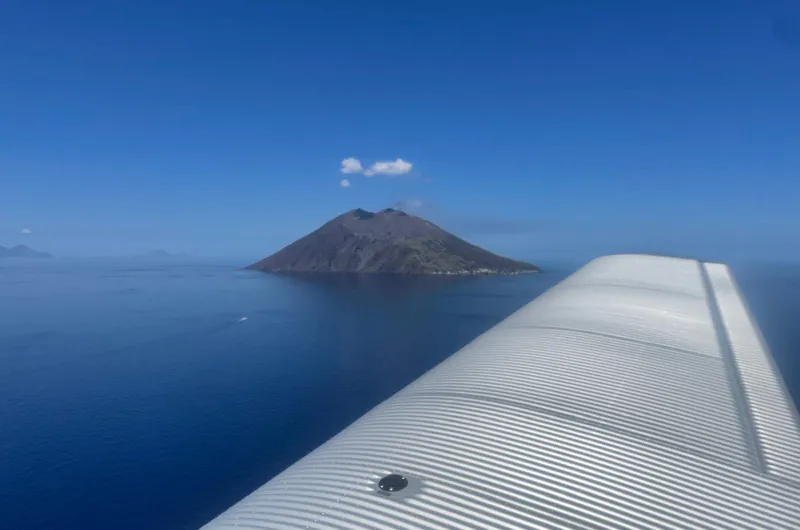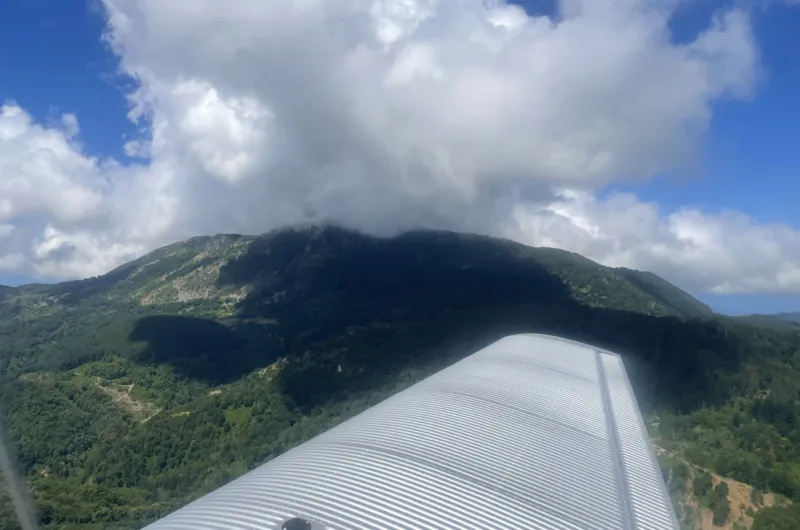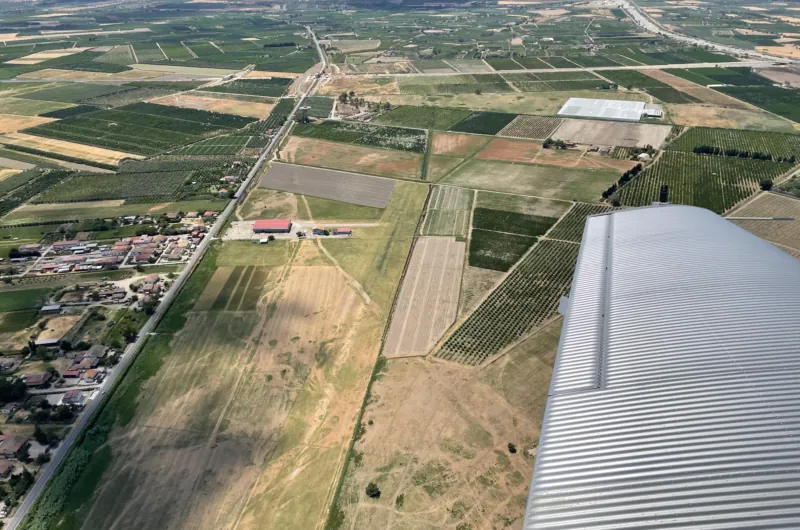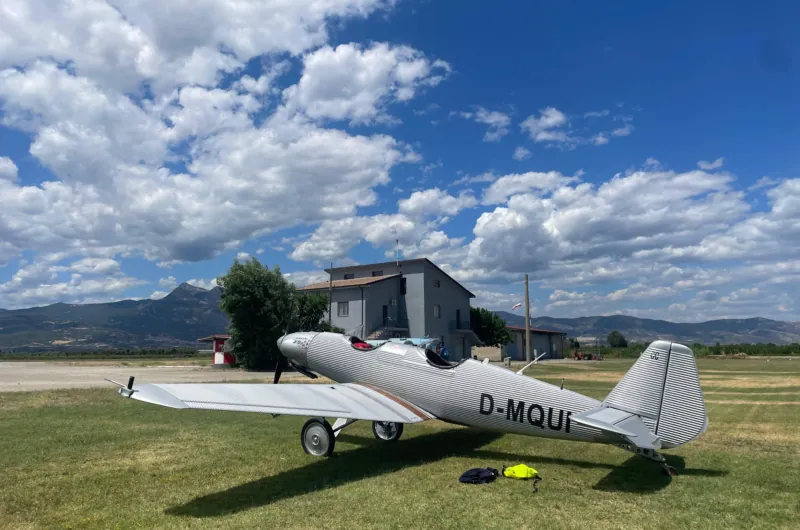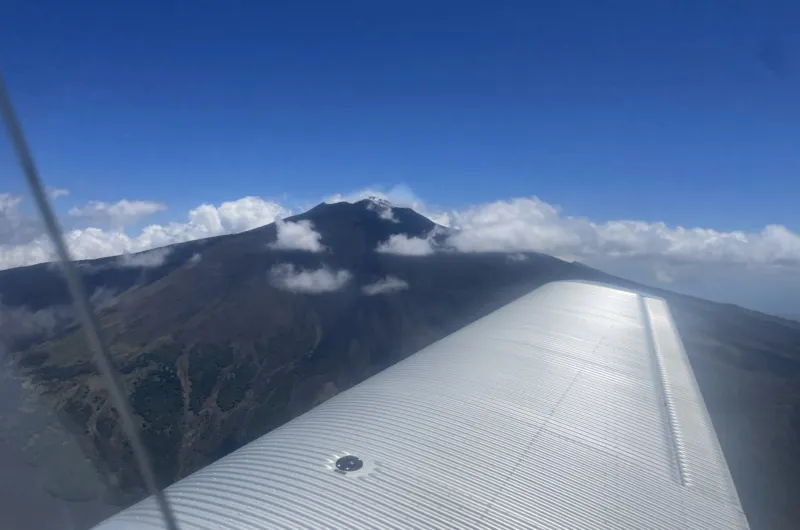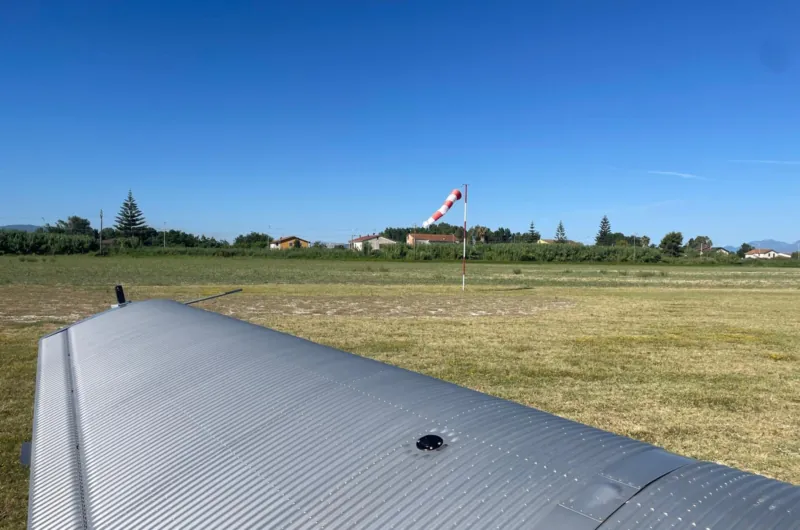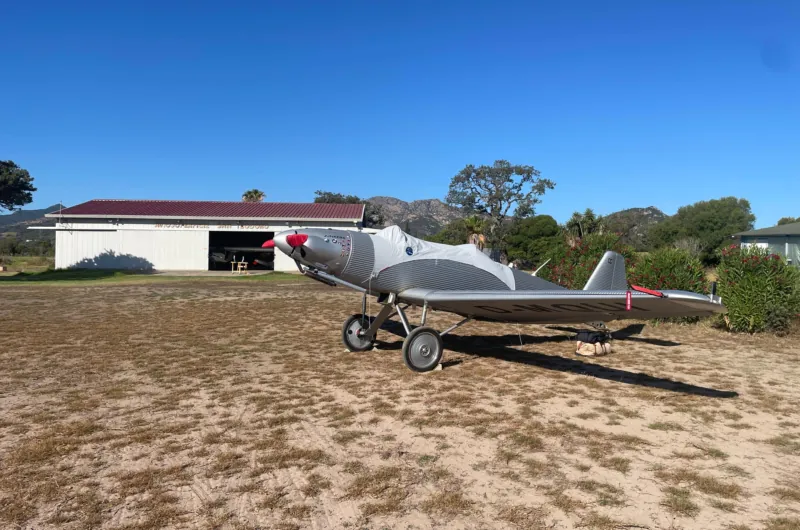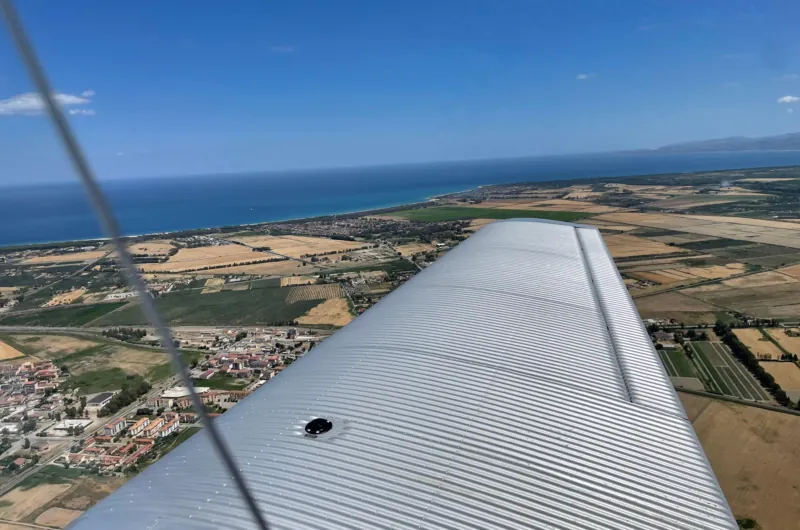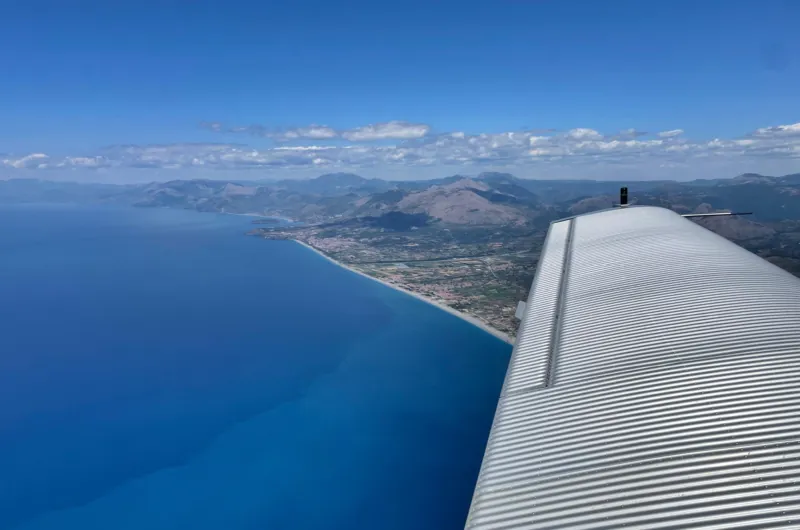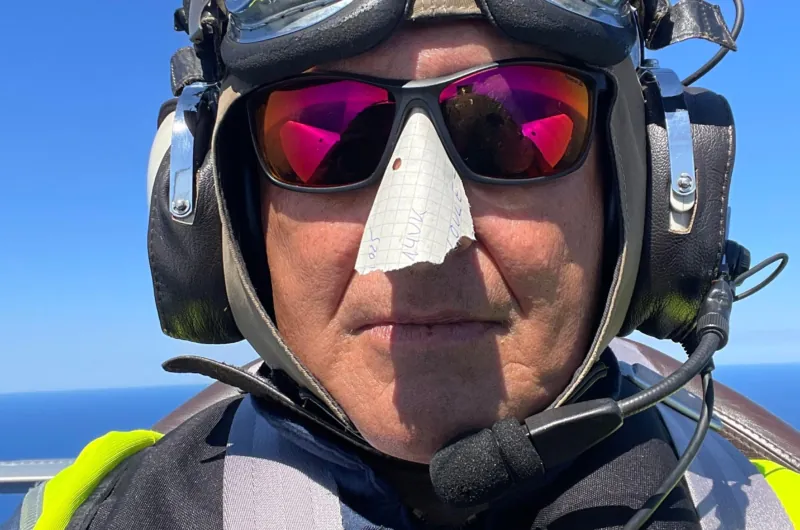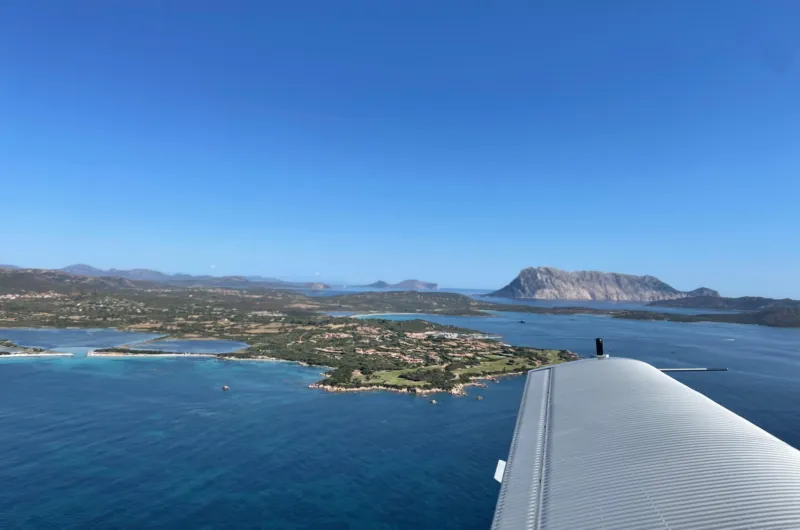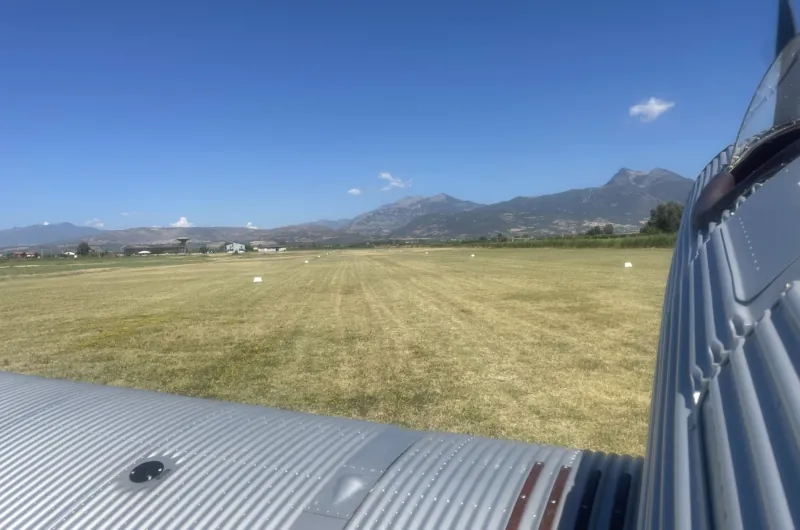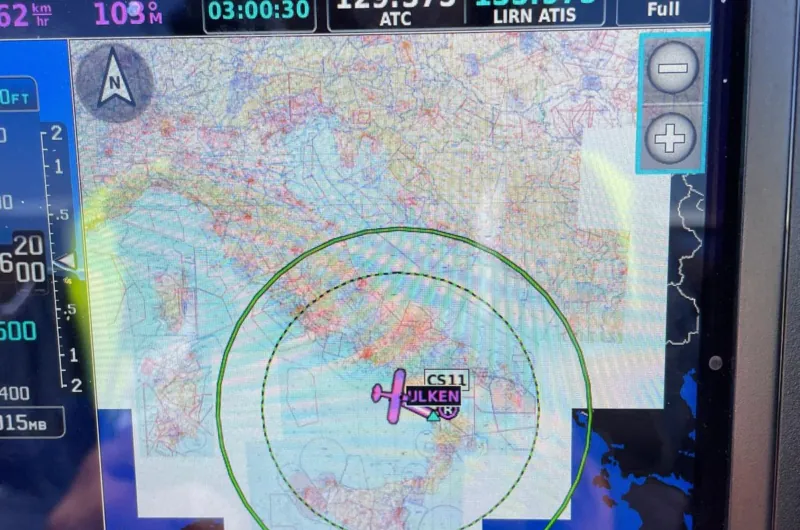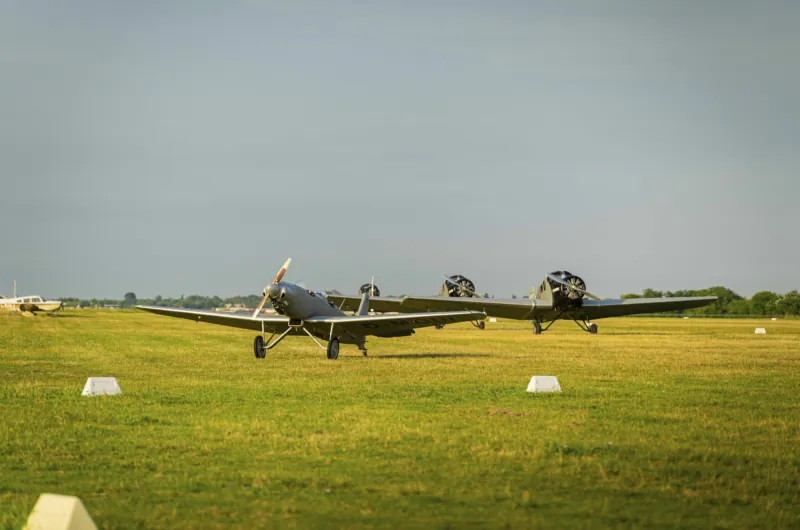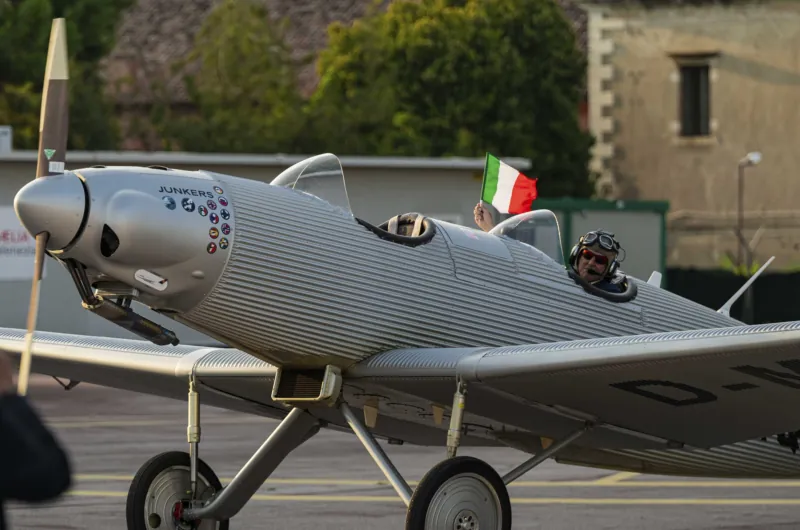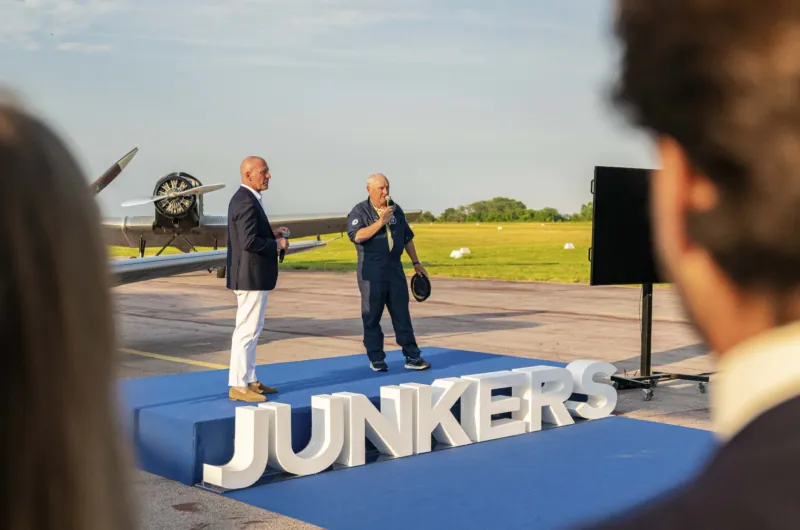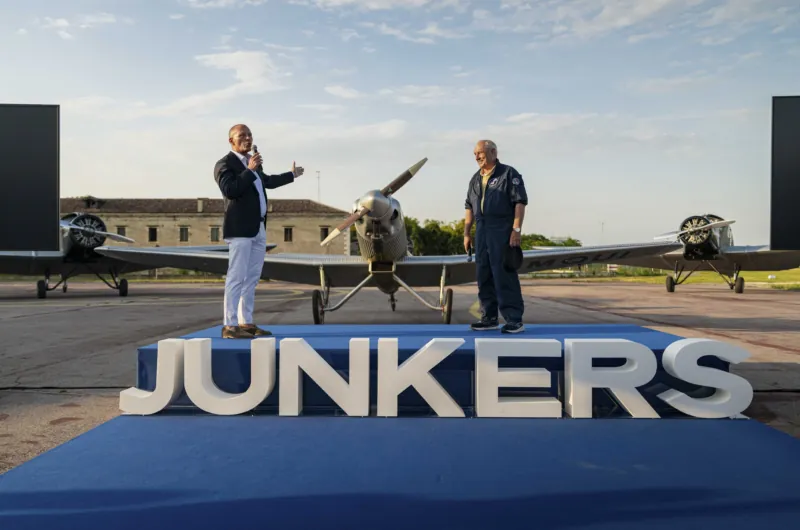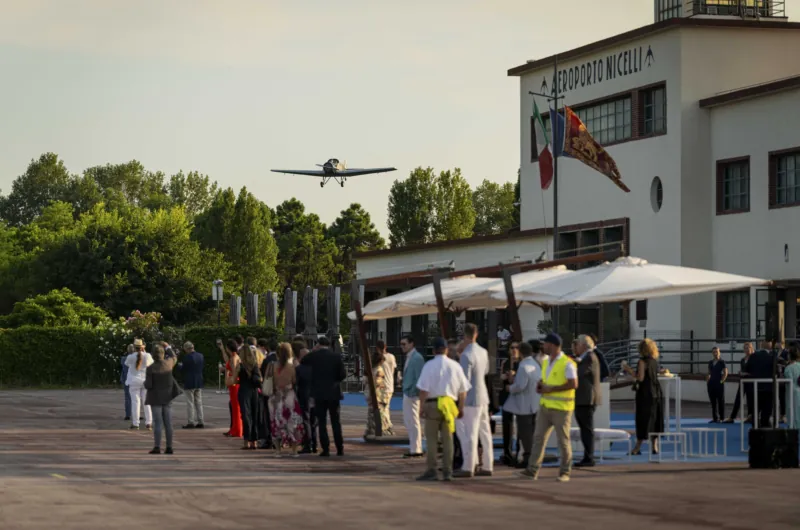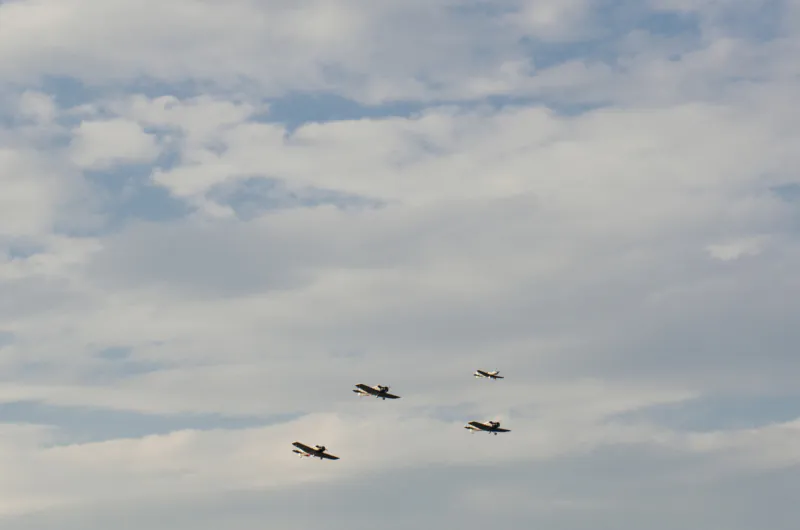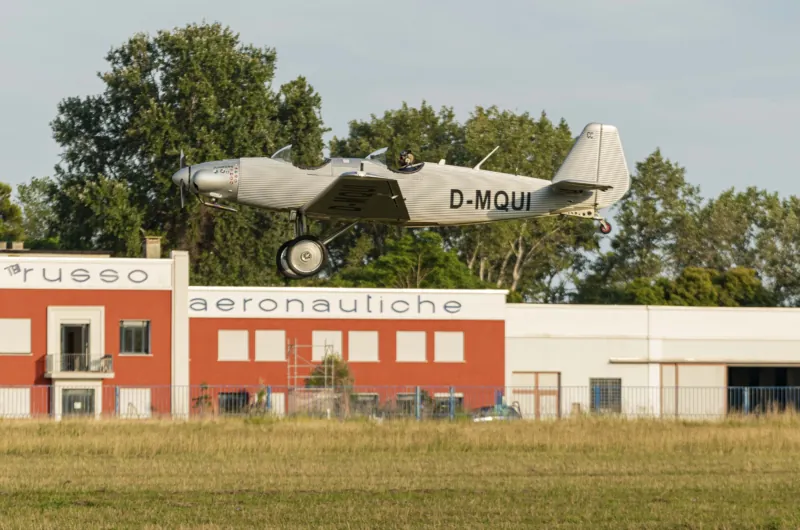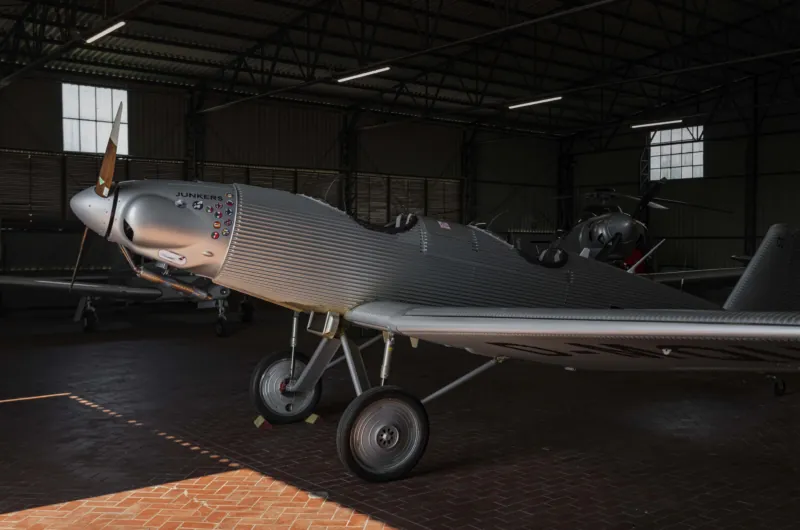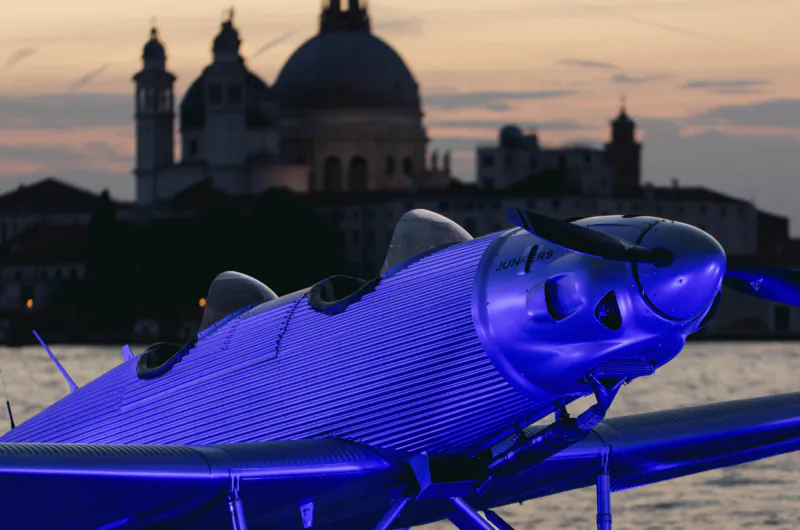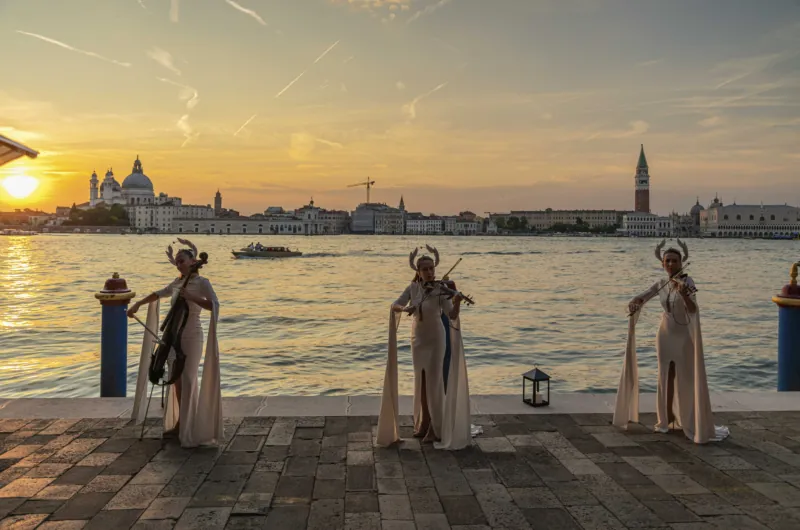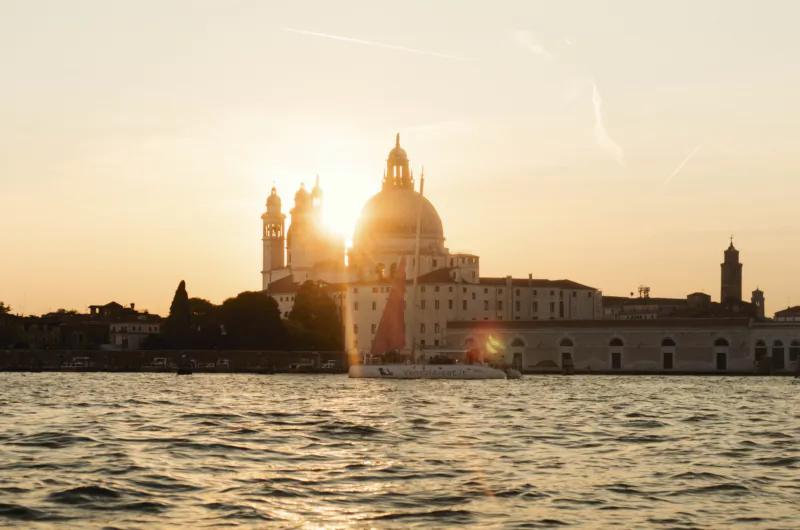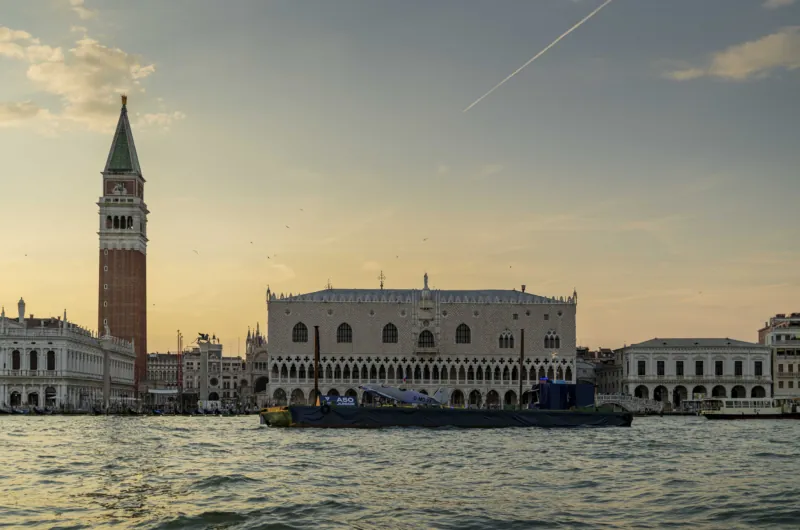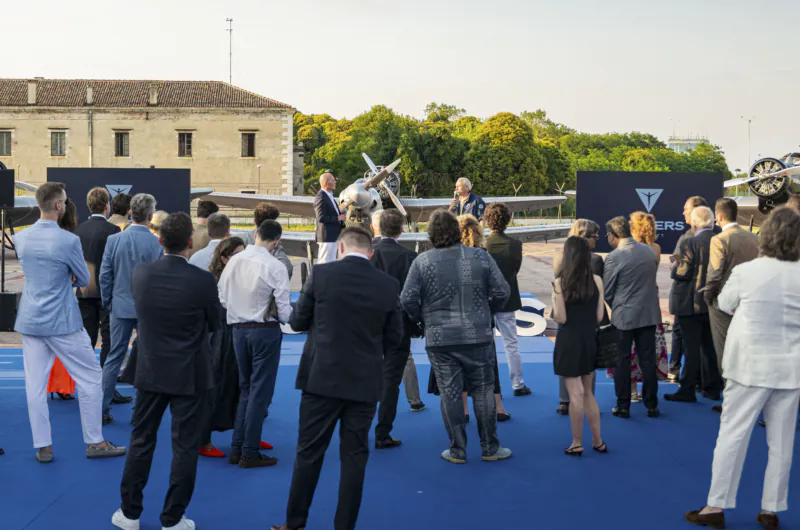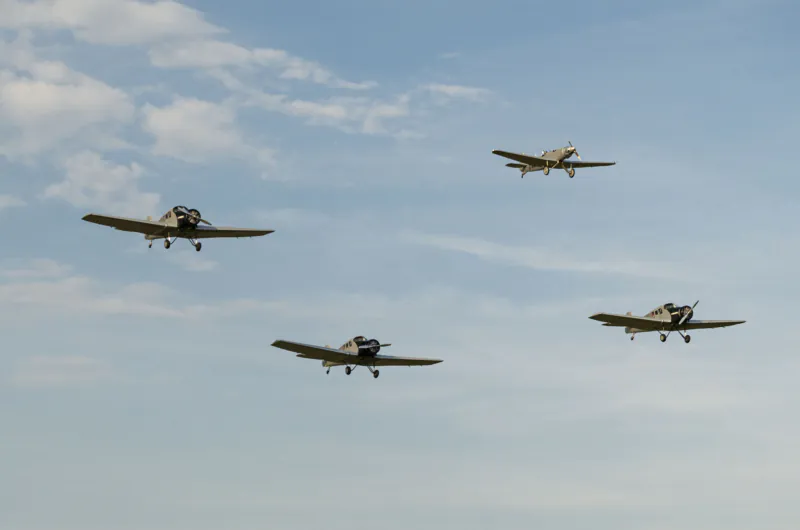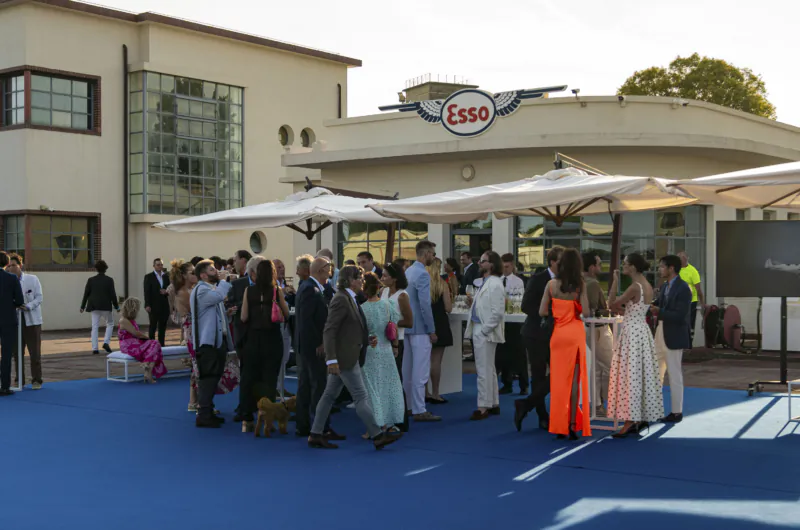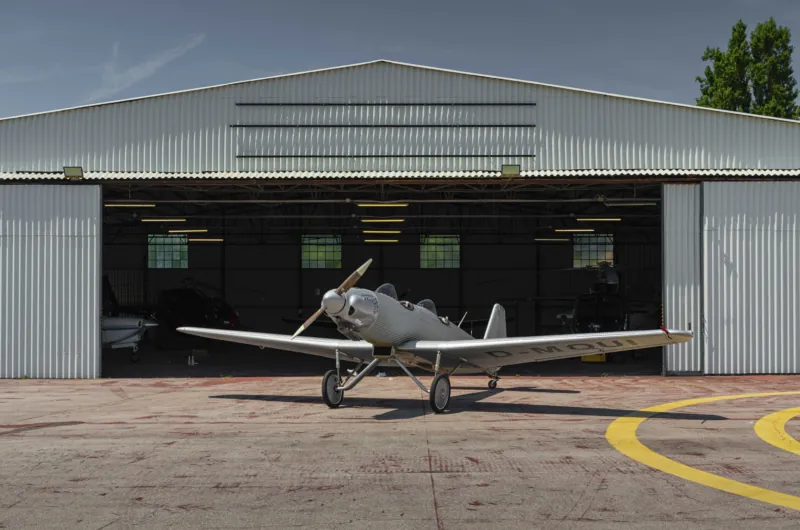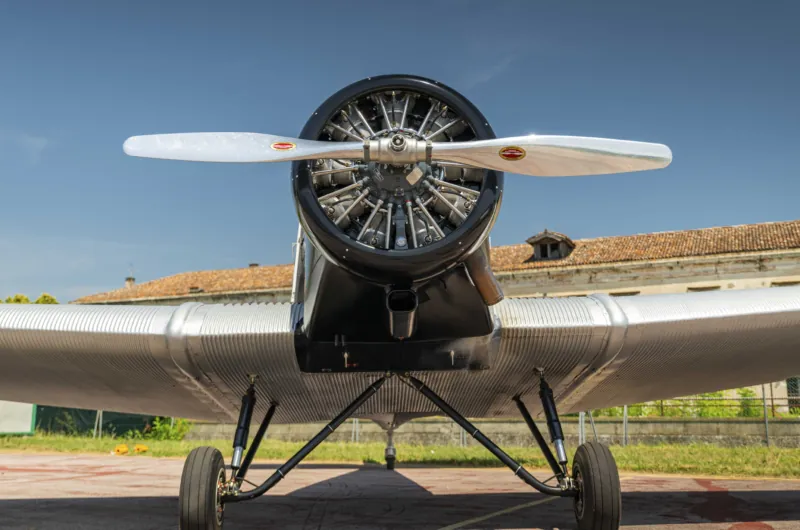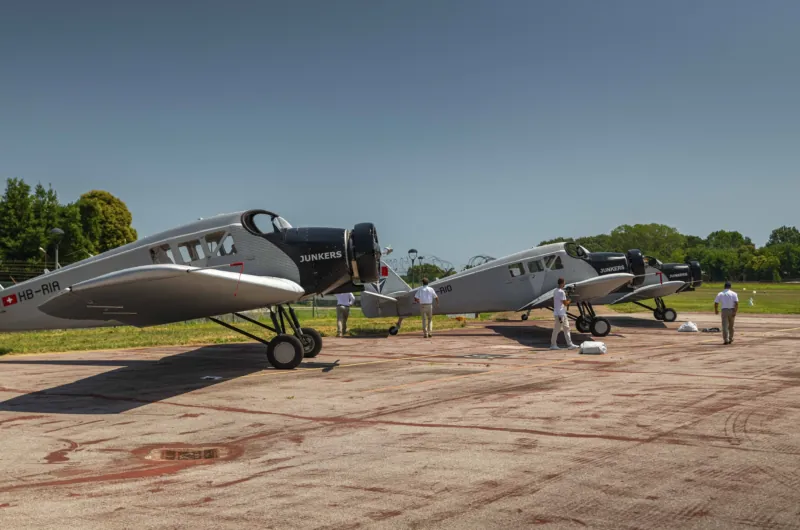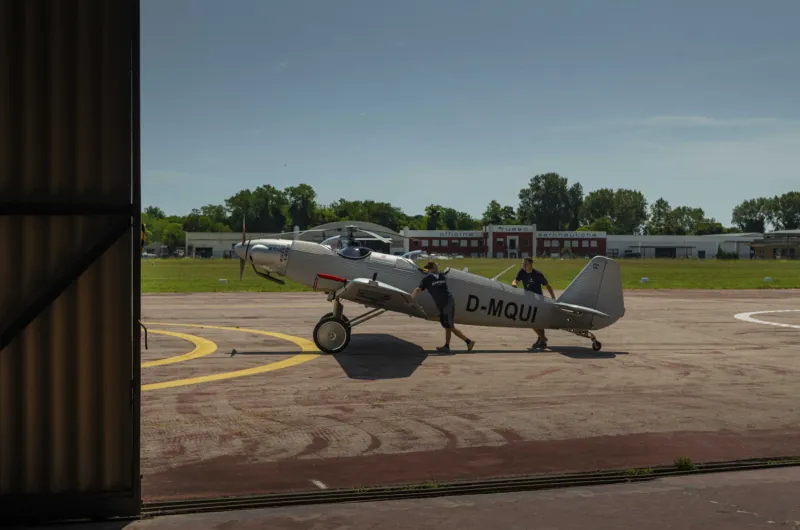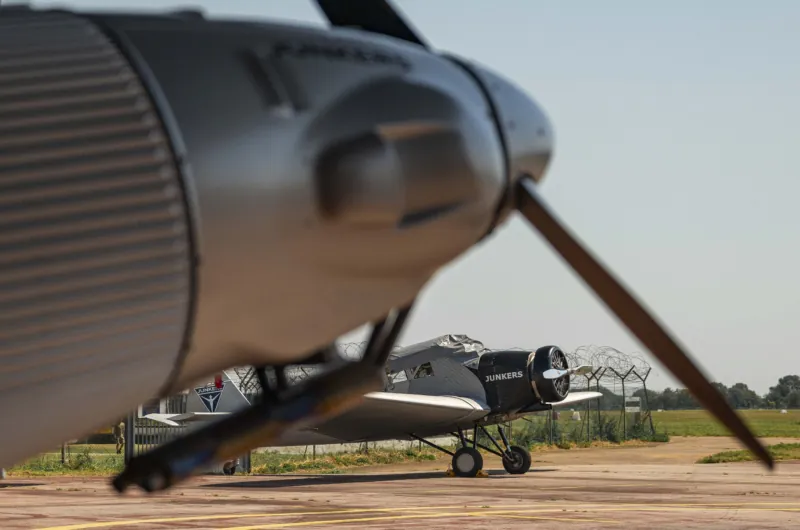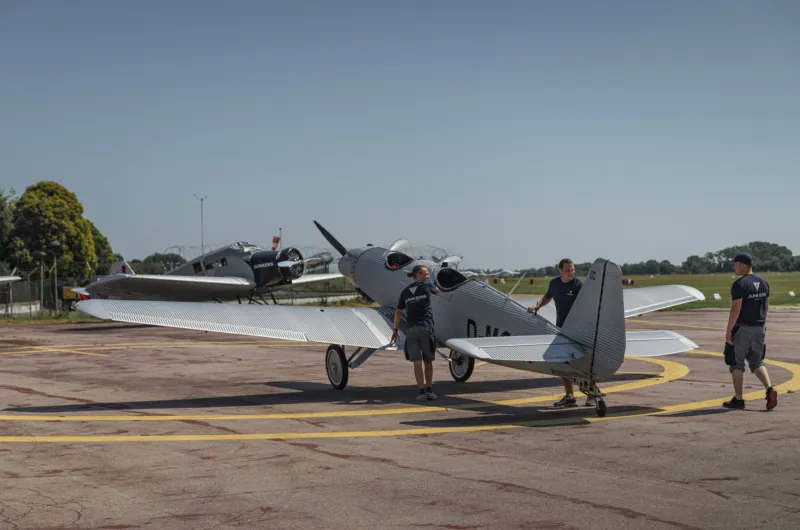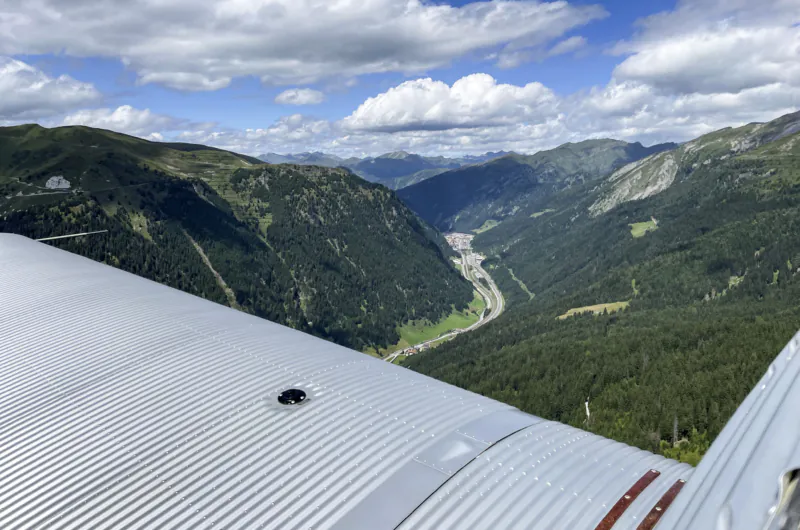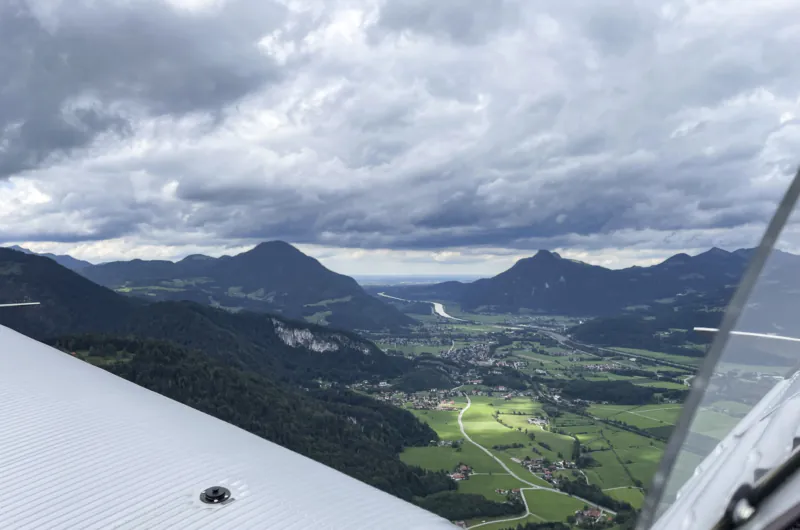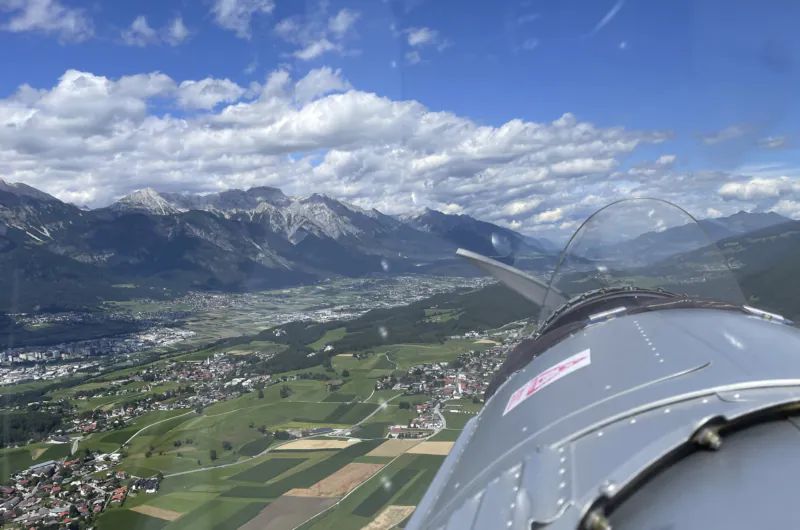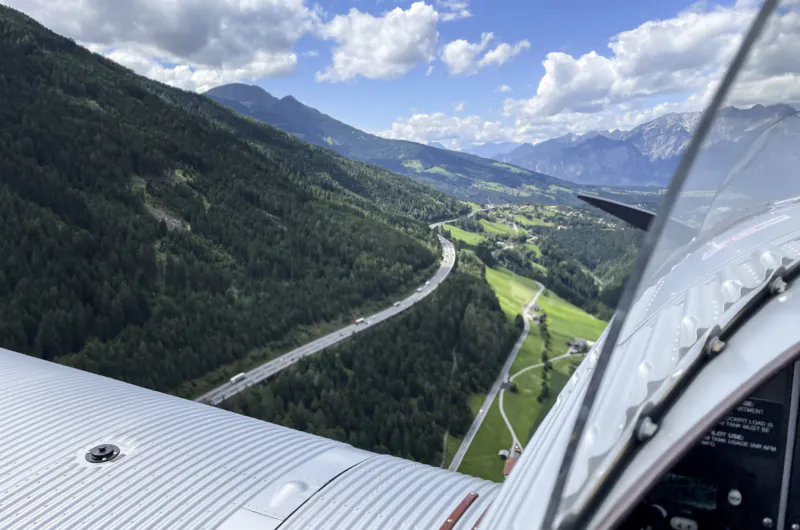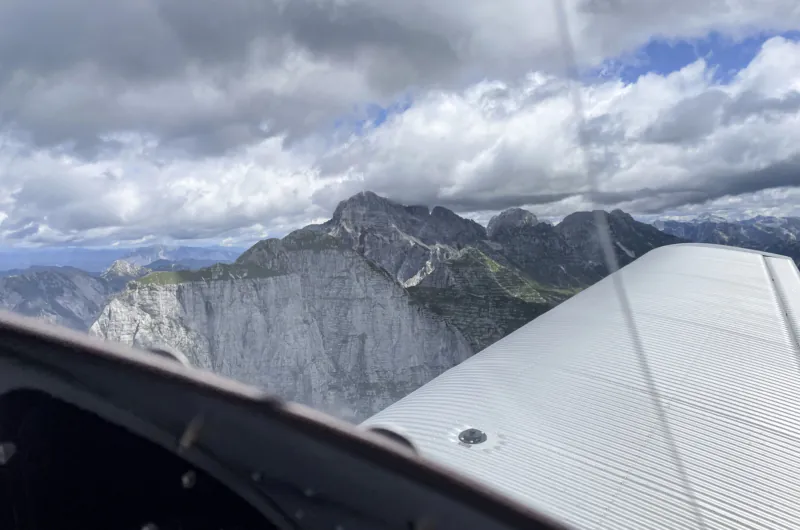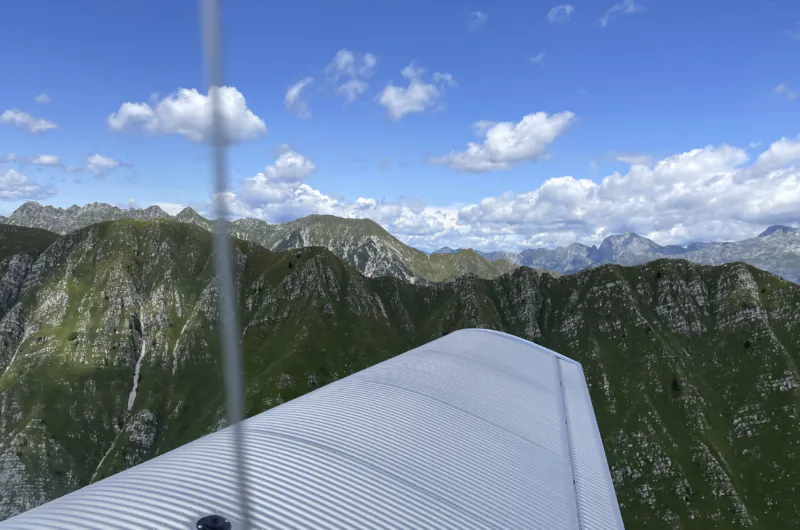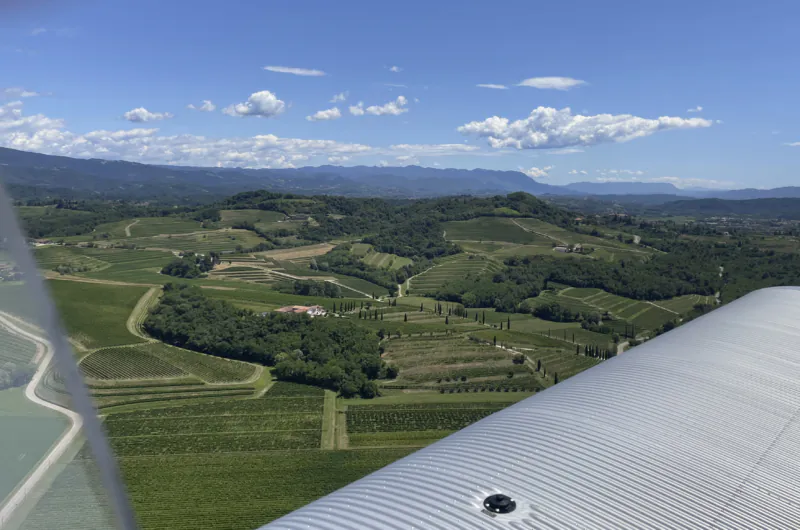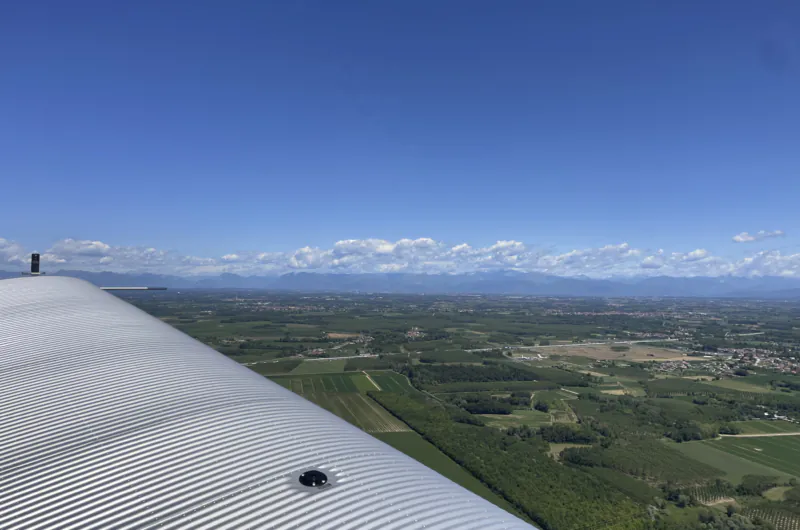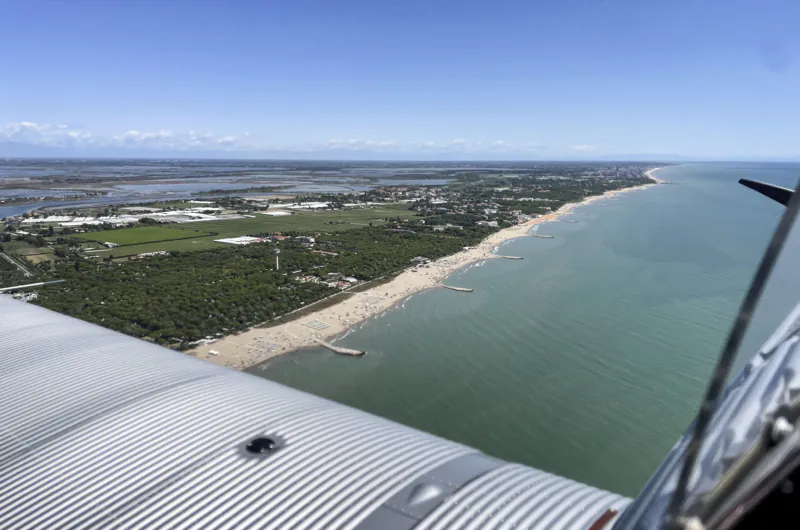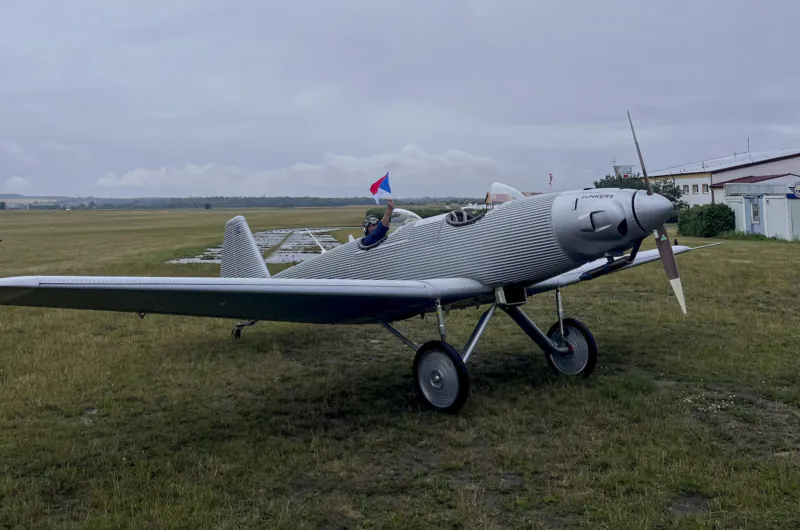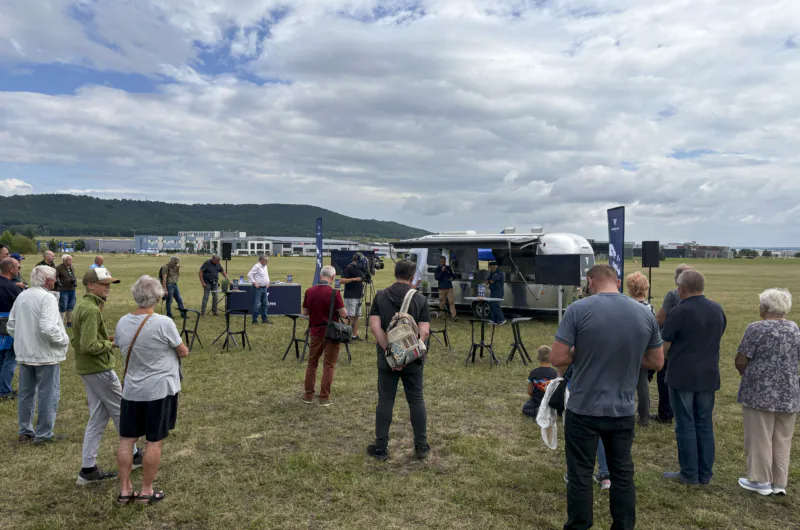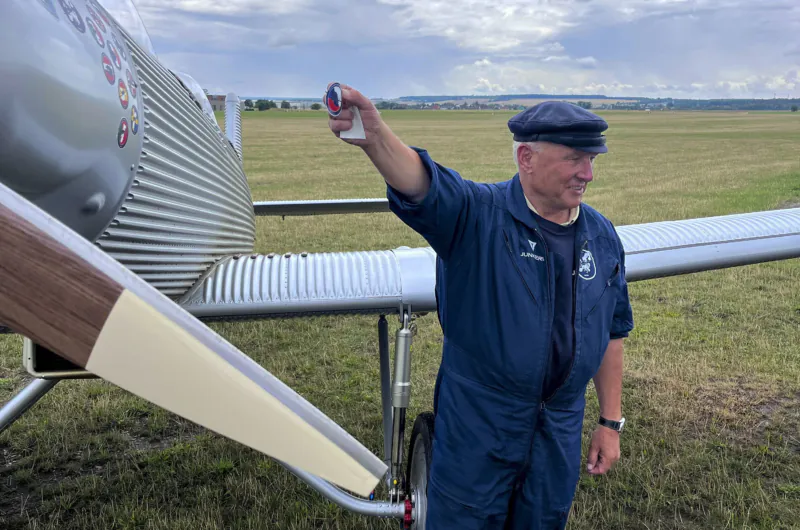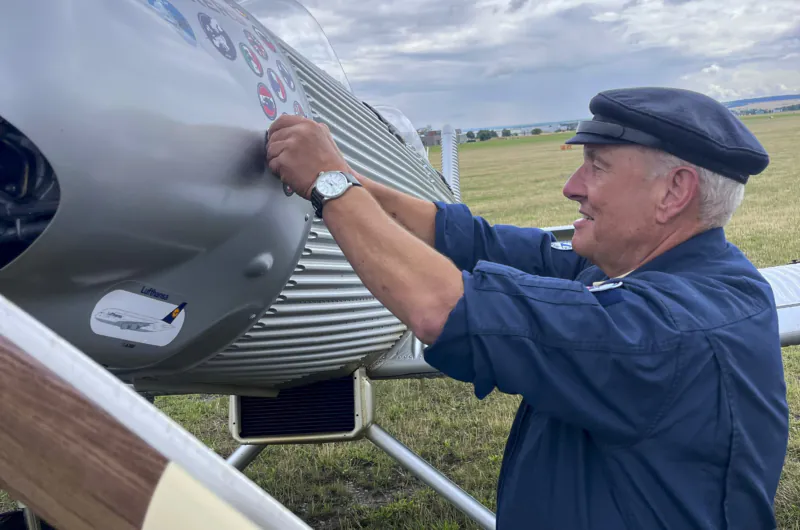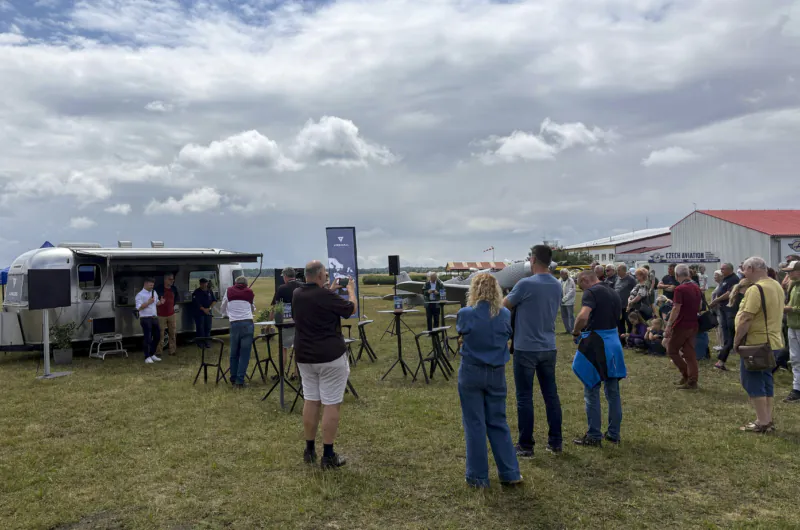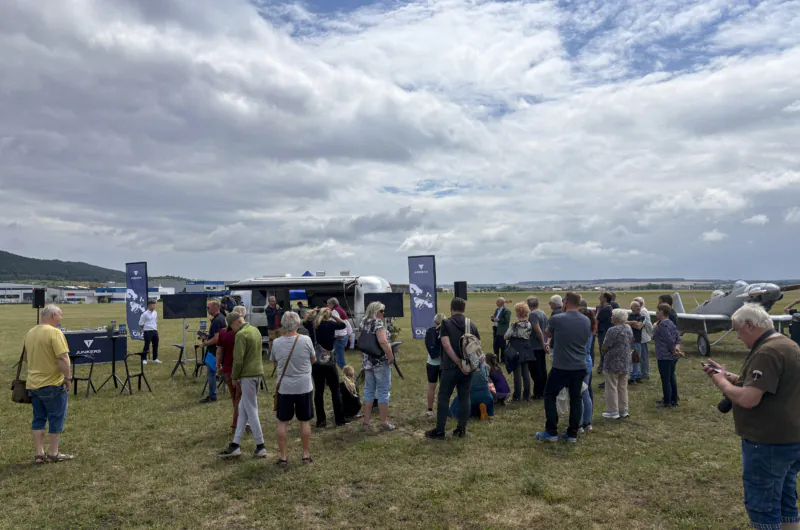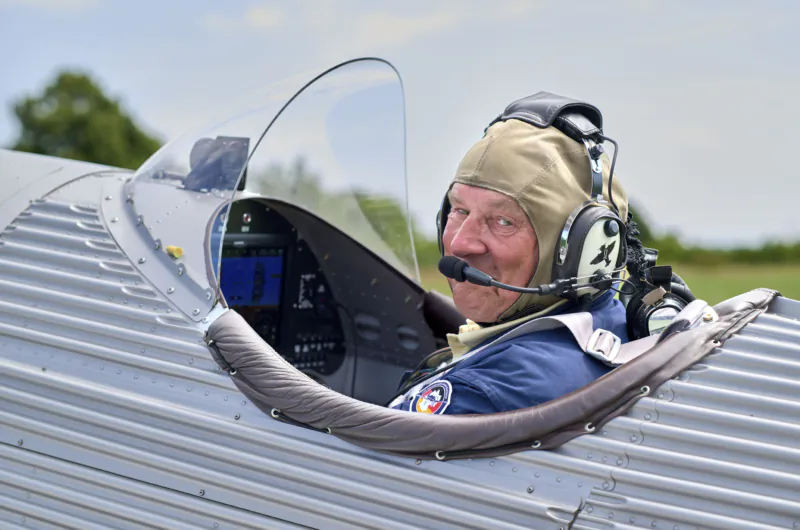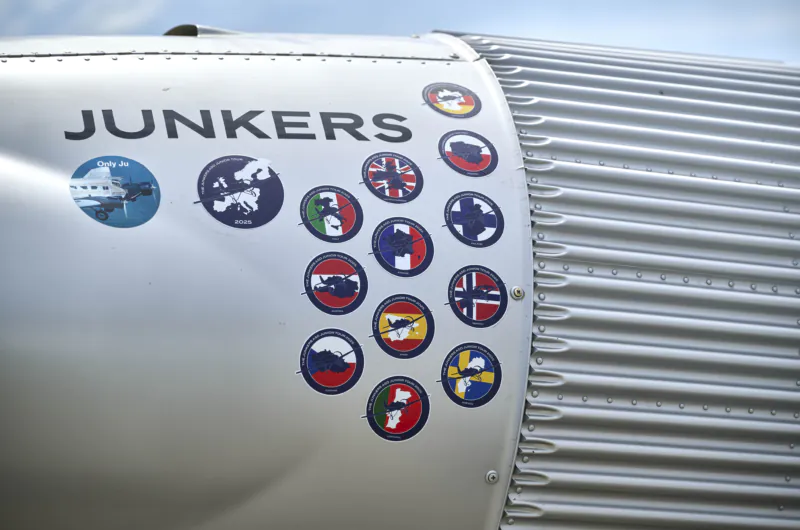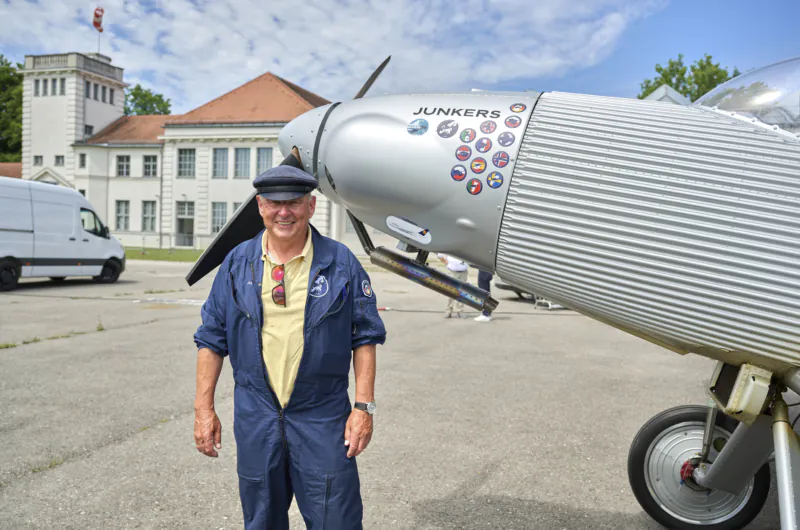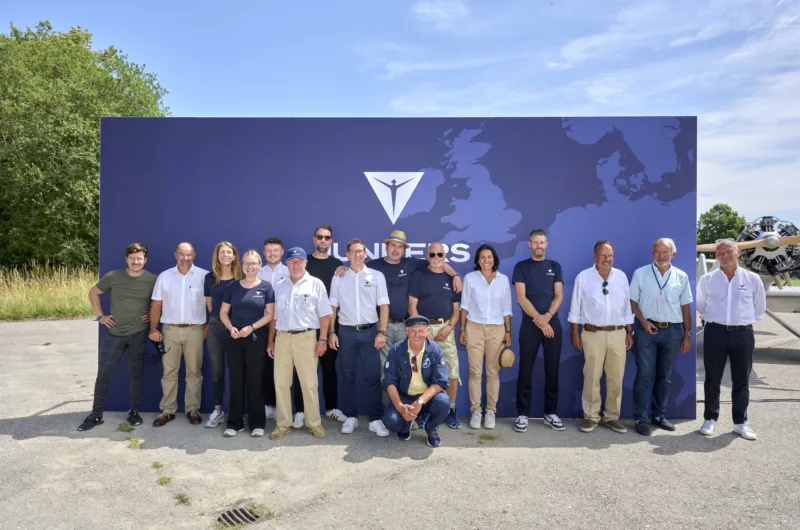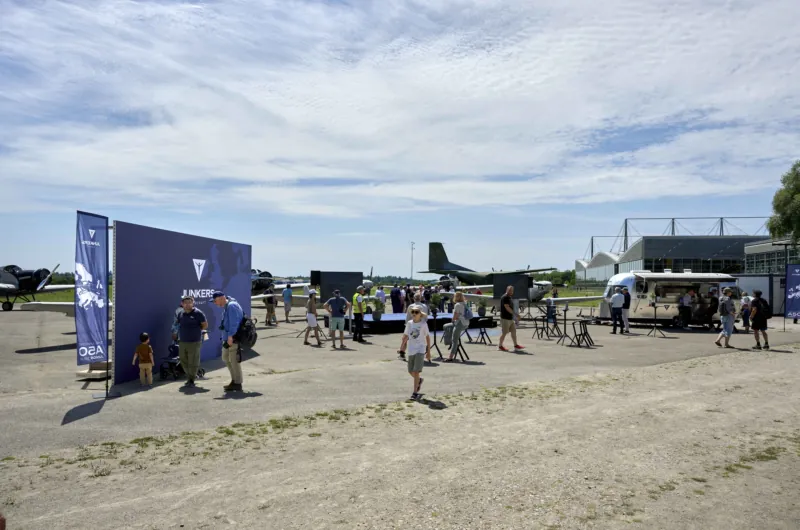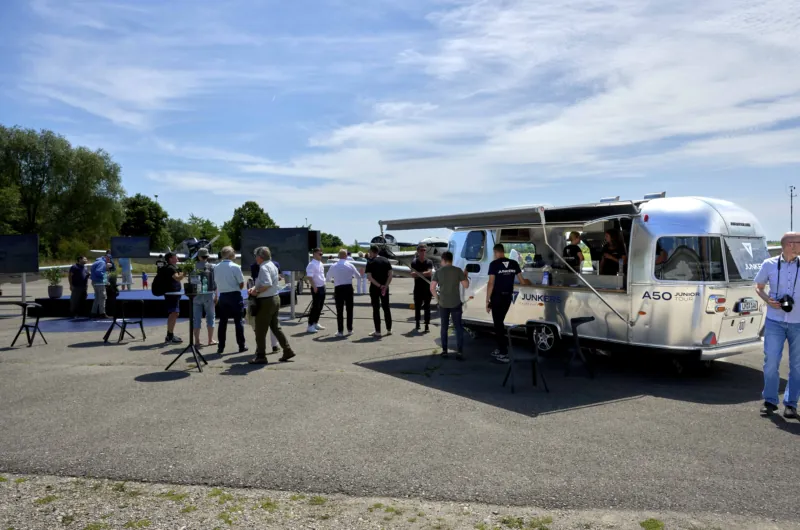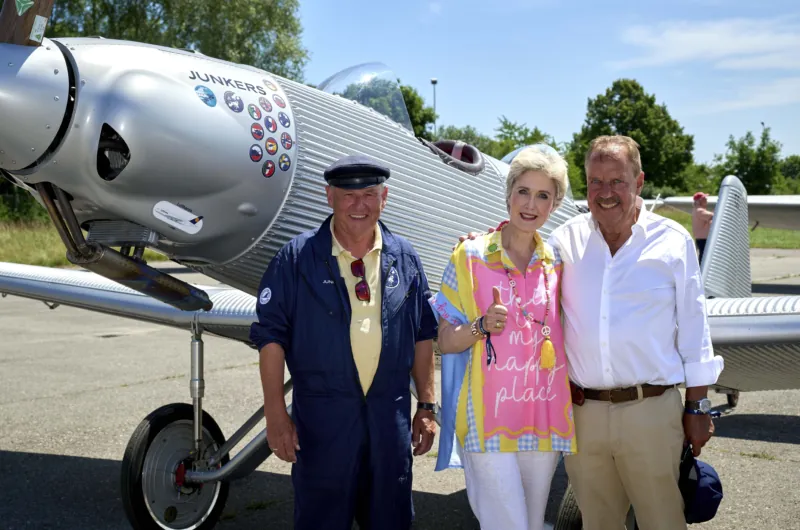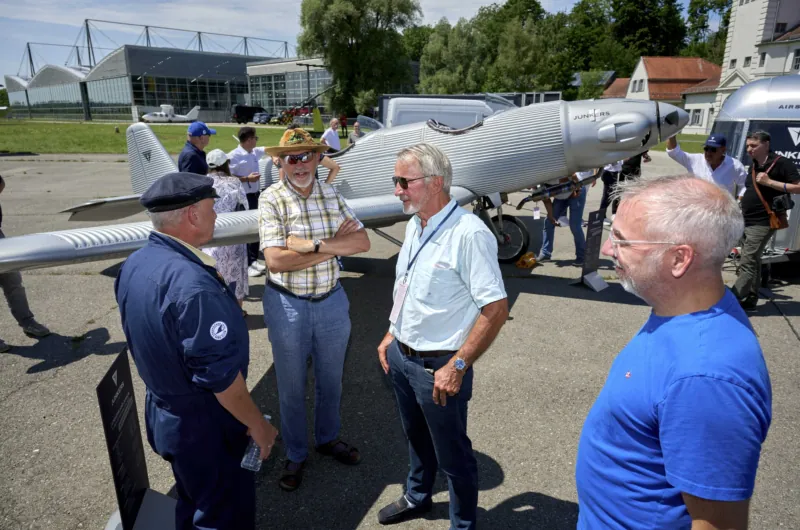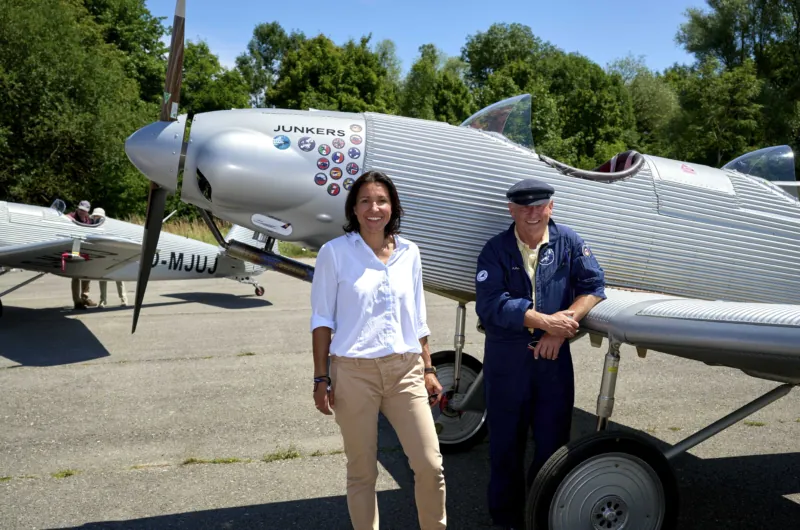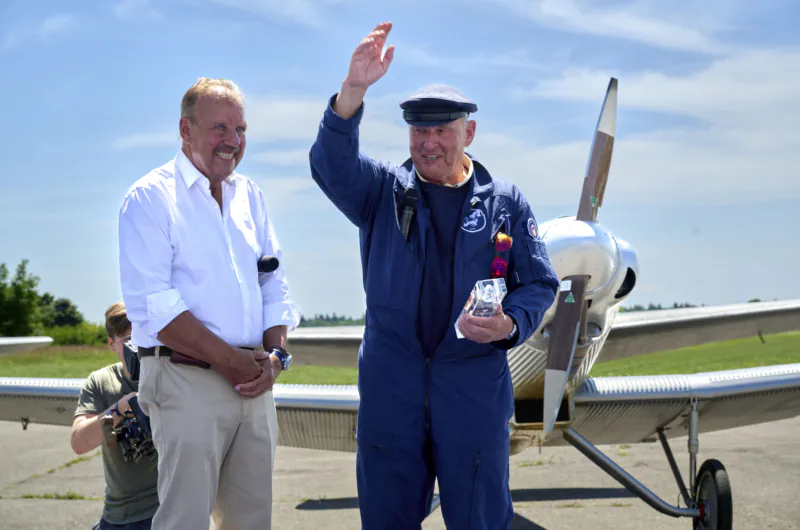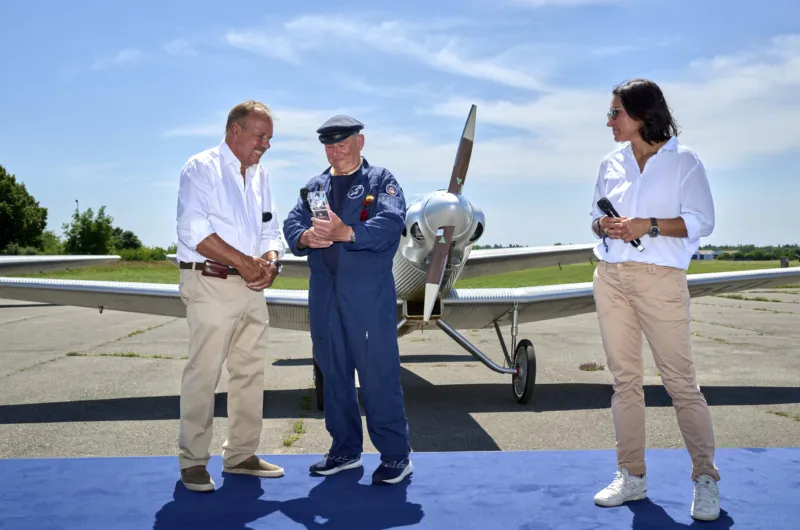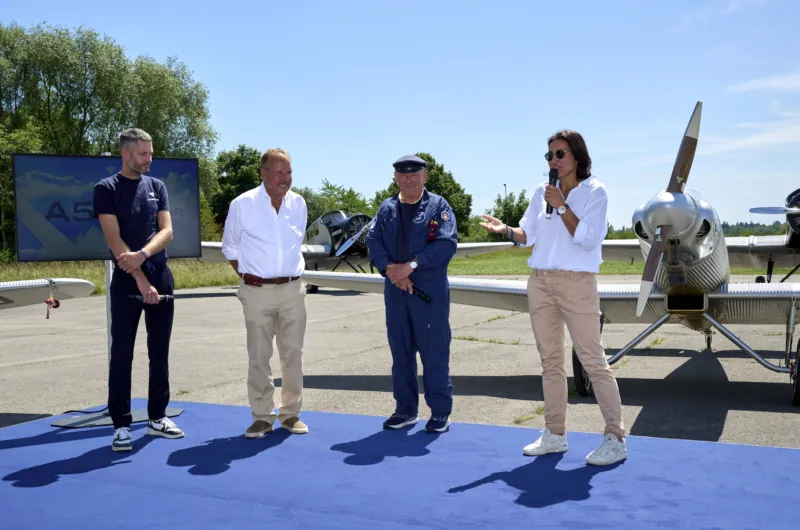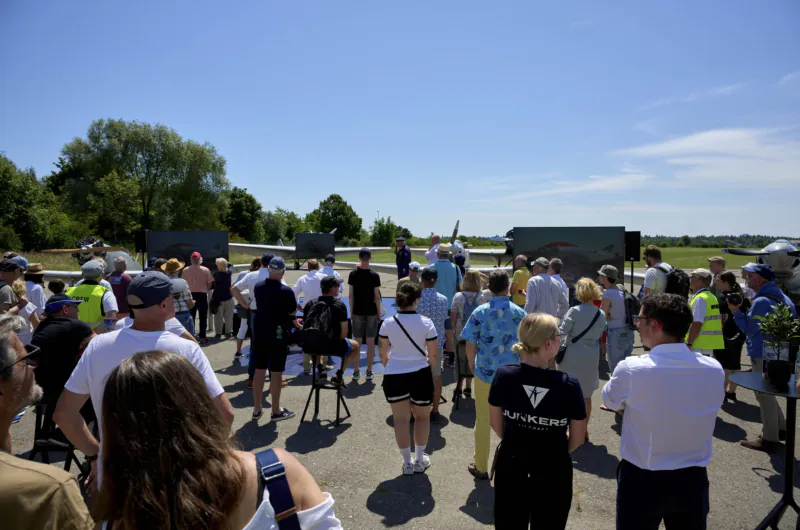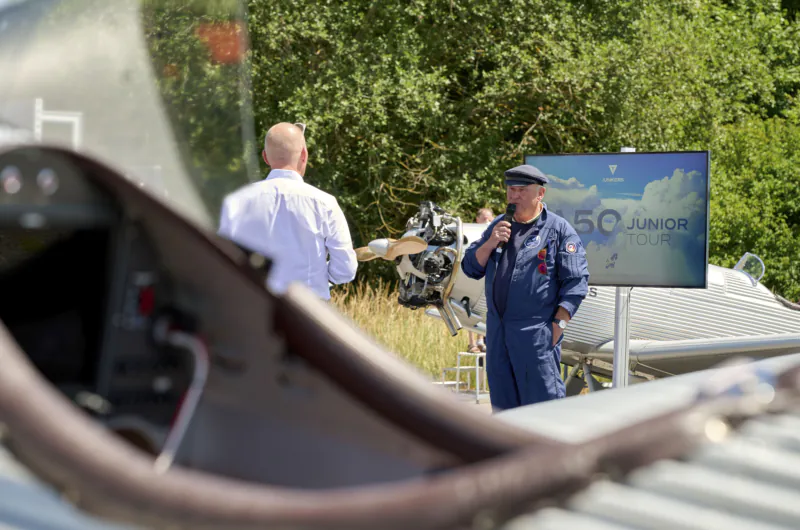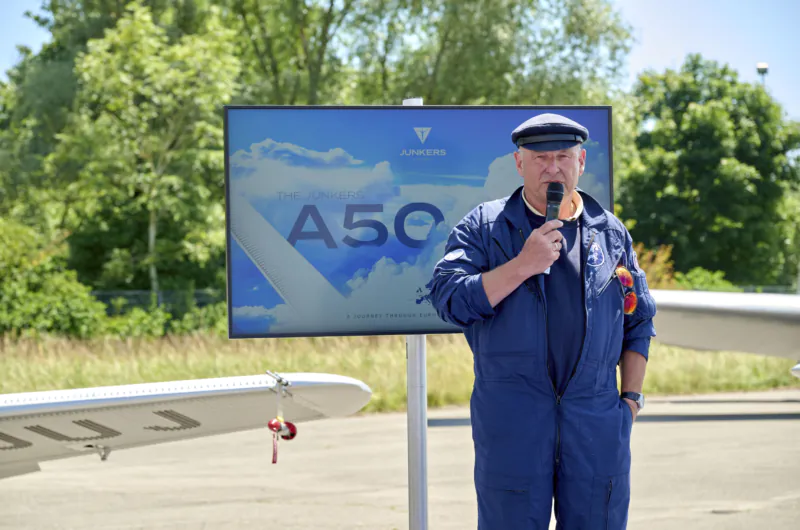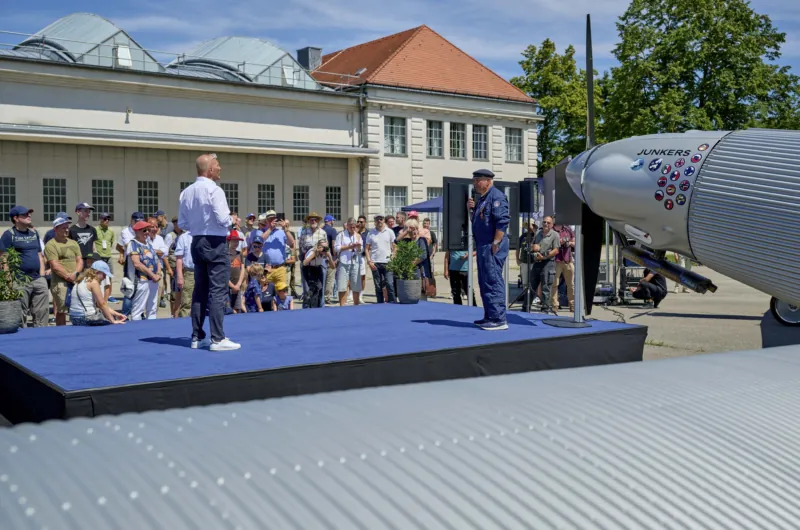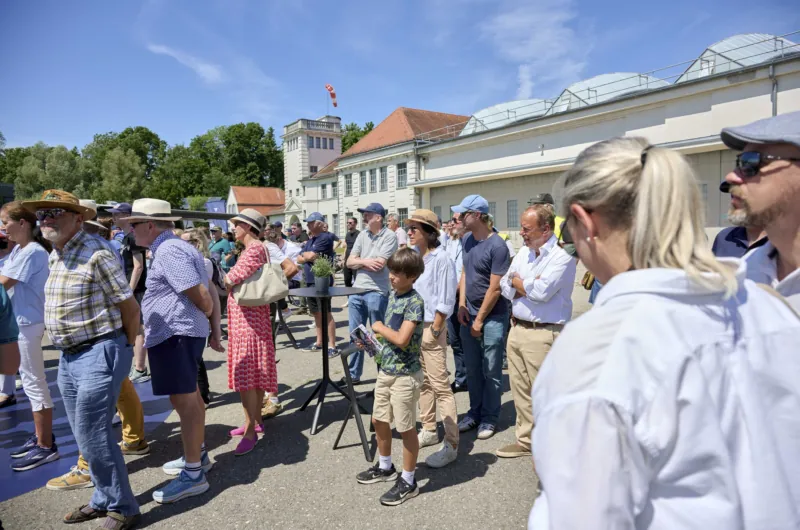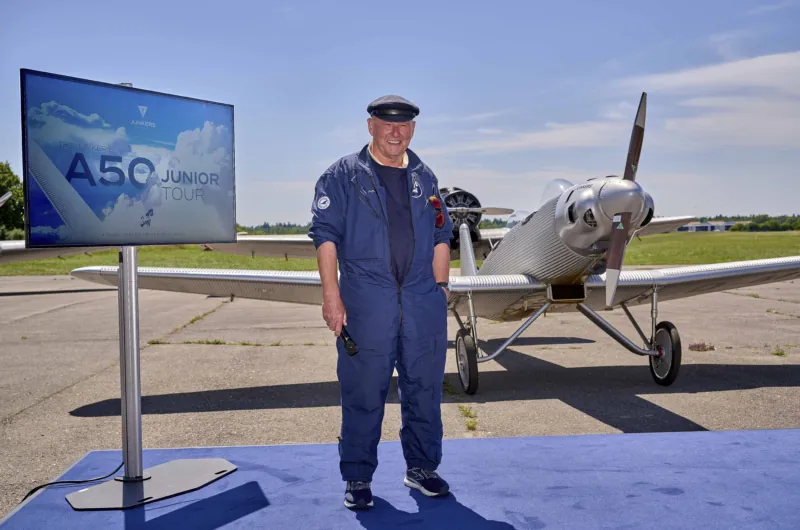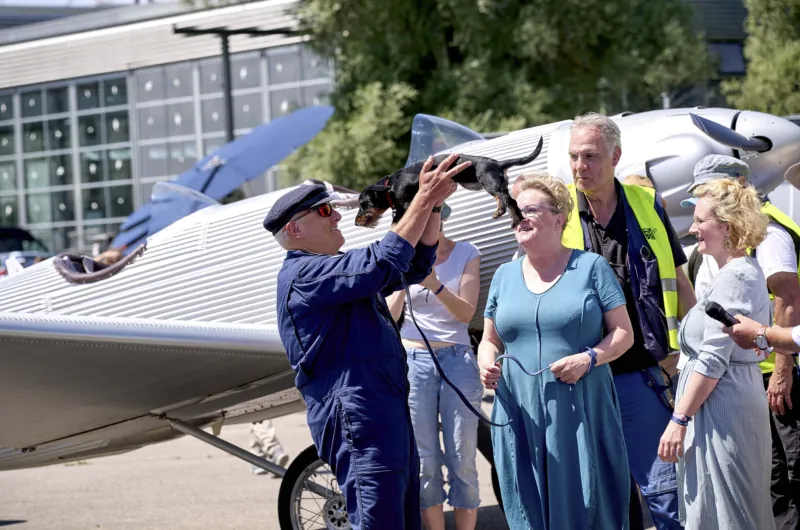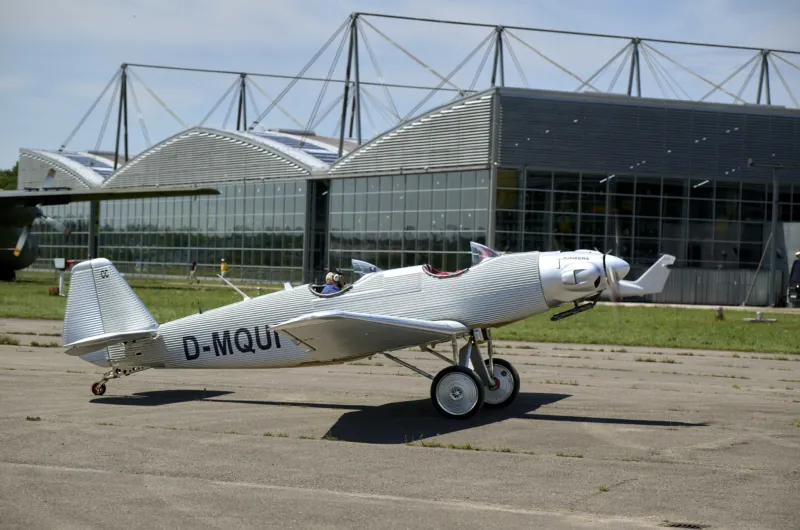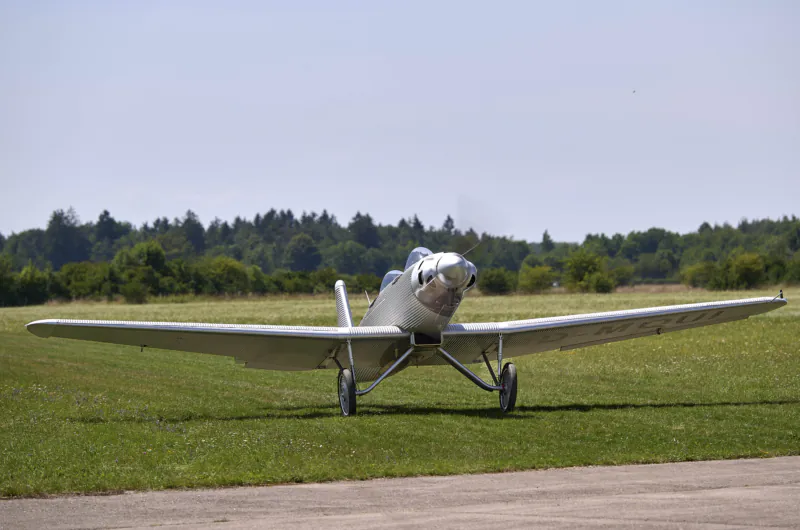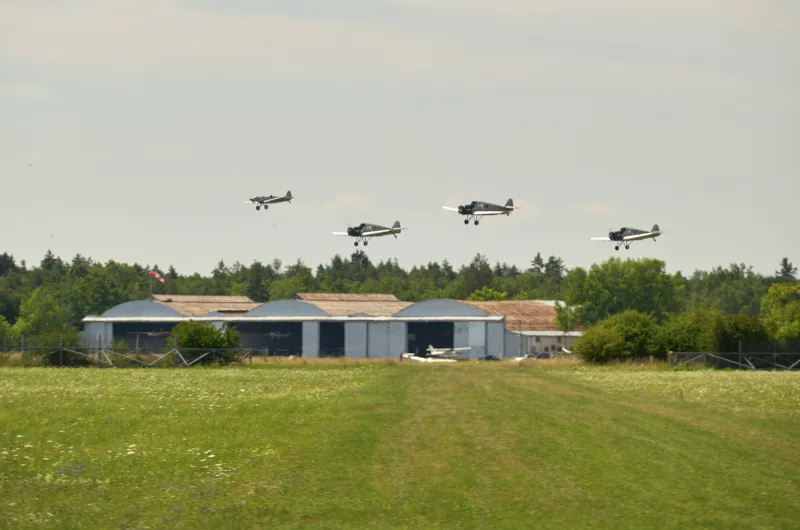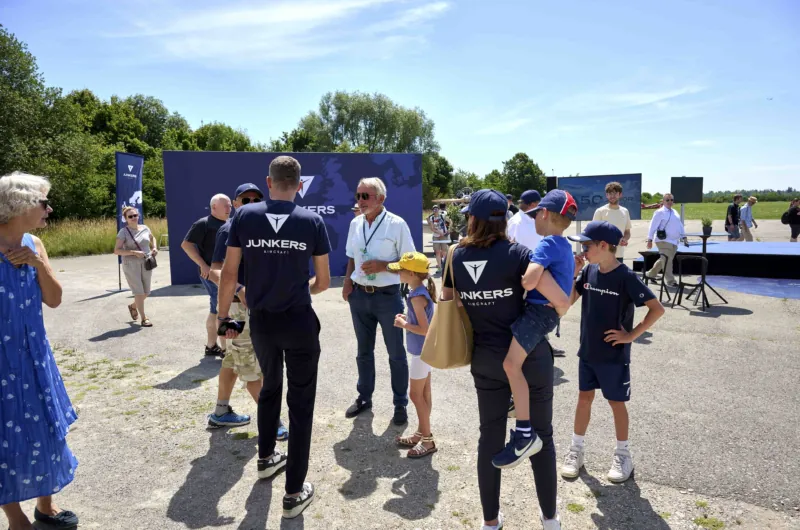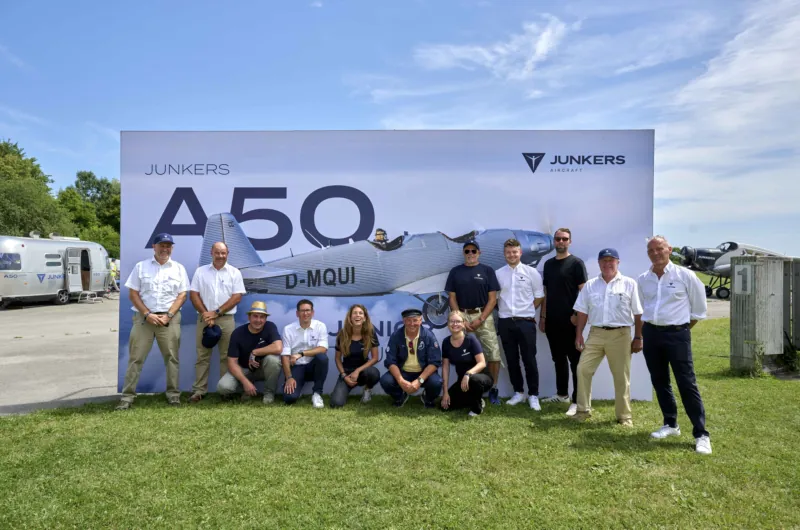The Junkers
A50 Junior Tour 2025
A journey through europe with all sensesInspired by the pioneering Junkers long-distance flights of the 1930s, we set off on a spectacular tour across Europe this summer with the new A50 Junior.
Starting on June 7 in Germany and finally landing back in Germany on July 19, the 42-day journey spanned over 14,000 kilometers and encompassed more than 12 countries. At the controls was a single pilot: Claus Cordes, President of the German Aeroclub, who flew the entire feat with his very own A50 Junior, D-MQUI.
Along the way, we stopped at numerous locations to participate in local airshows and share firsthand insights about the tour, Claus Cordes’ experiences from the cockpit, and the magnificent A50 Junior. The passion and excitement we were met with at every stop were a true highlight of the journey.
We wanted to revive the pioneering spirit of the past and, above all, to show how breathtakingly beautiful it can be to fly across Europe in an open aircraft. And we succeeded. See for yourself below.
Facts
FactsAircraft
Countries
Days
Total Distance
Tour Start in Dessau, Germany
2025-06-07Festival Under Capricious Skies
On June 7 and 8, the Stadtwerke Dessau hosted the Hugo Junkers Fest 2025, and the organisers had a lot in store to enchant visitors from the city and the surrounding area for two days. In addition to fairground rides, a vintage car exhibition and a marquee, one theme was not to be missed in Dessau. Aviation.
Junkers had a surprise in store, as DAEC President Claus Cordes flew in at 12:30 on the dot in his Junkers A50 Junior. Accompanied by Junkers granddaughter Charlotte Junkers in the front cockpit and flanked by two Junkers F13s and another Junior. The spectators crowded round the fence in front of the flight line to greet the corrugated iron aeroplanes that connect them with their city. During the interview, Claus Cordes and Charlotte Junkers answered questions and even signed autographs for young and old.
After the opening of the festival by the mayor of Dessau, a heavy band of rain swept over the area and the spectators took refuge in the marquee for just under an hour.
Claus Cordes was not only in town for the 19th Hugo Junkers Festival, but also because he is starting his 14,000 kilometers tour of Europe from Dessau. After the first ‘Meet the Pilot’ conference, he proudly affixed the first of a total of 12 country stickers to the cowling of his D-MQUI, before taking off a short time later into the cloudy sky.
Stopover in Suwałki, Poland
2025-06-12Finally, on the Way
After starting the 14000 km tour in Dessau, Claus Cordes had to make a small divert, to attend the opening celebration in his position as the DAEC president of the famous Deutschland-Flug at Lahr. Claus Cordes then starts to fly from from Germany to Poland. His destination is Suwalki in the far northeast of the country.
The engine was started at 0811 in the morning, and he was flying over the famous German Black Forest in the direction of Rothenburg ob der Tauber just to cross the starting grid at the qualification in the German Gliding Masters. At the picturesque Moritzburg Castle, he took some more pictures right out of the cockpit. Then he entered CTR Dresden to make a first fuel stop at Kamenz. After 4 hours and a fuel consumption of 62 liters, it was time to refuel the smoothly running Rotax engine of the A50 and to defuel the pilot.
The next and last leg was to Poland. Crossing the German mining area, endless forest in the direction of the former Bromberg. The big river Weichsel was a good optical sight to reach and cross and make the way into Poland. The Masurian Lakes covered with unbelievable cloud formations were the first real change in the landscape. A heavy crosswind at the Destination Suwalki made him look for an alternate route, but a professional like him handled it well, and he finally tickled the grass runway of Suwalki. After a photoflight with the polish journalist and well known photographer Filip Modrzejewski the important things took over the list. Getting some food and spend the night at the aviation club’s house. A rest well deserved.
Next stop, Finland.
Airshow and Meet the Pilot in Kauhava, Finland
2025-06-14Flying to Finland: A Journey Above the Land of a Thousand Lakes
Spending the night at the clubhouse of Aeroclub Suwałki, Claus Cordes left early for the next long leg to Finland. Shortly after departure toward Riga, he encountered an issue with flight control — they couldn’t locate his flight plan. As a result, he had to return to Suwałki to straighten things out.
After a second take-off, everything went smoothly, and he followed his planned route to Riga for refuelling. Upon landing, the ground agents in Riga were a bit surprised to see such a small aircraft — they had been expecting an international flight. After a brief but friendly exchange, they handled both the Junkers A50 and its pilot with care and great charm. From there, Claus flew past endless beaches and finally landed at Nummela in Finland just as the last light faded. It was a perfect way to end a long day of flying.
The next — and much shorter — leg to Kauhava began very early at 05:00, as he needed to arrive at the show before 10:00. The flight was nothing short of spectacular. Crossing Finland feels like entering a world where nature still reigns supreme. From the cockpit of the Junkers A50 Junior, the view transforms into a breathtaking tapestry of endless forests, shimmering lakes, and scattered islands — a pilot’s dream.
Finland is known as the “Land of a Thousand Lakes,” but from above, it’s clear the number is far greater. The peaceful expanse of wilderness, dotted with red cottages and winding rivers, offers a unique kind of freedom found only in the north. As Claus headed toward Kauhava, the skies remained calm, the air crisp, and the landscape almost untouched. Flying here is more than just traveling — it’s about connecting with nature in its purest form.
The Kauhava Airshow 2025 exceeded all expectations. The hosts treated Claus and the A50 like superstars. He received pole-position on the tarmac, right next to F-35s, F-18s, Typhoons, and other top-tier aircraft — a place well deserved. The A50 even secured a slot in the flying display and performed brilliantly. The people of Finland were amazed by Junkers’ presence, with many approaching Claus to share their personal stories and connections to the A50.
Thanks to all the people, organizers, and new friends at the Kauhava Airshow.
North Cape next…
Stopover in Hammerfest, North Cape, Norway
2025-06-17Pure Beauty
After six days, six countries, and over 3,000 kilometers, pilot Claus Cordes has completed his round trip to the North Cape in the Junkers A50 D-MQUI. He reached Hammerfest, just north of the Arctic Circle, and the flight will remain etched in his memory. Claus is overwhelmed by the pure beauty of the far north.
The journey began early in the morning in Kirkenes, with perfect weather. From there, Claus followed the dramatic coastline all the way to the North Cape. At several airfields along the route, where he dutifully reported in, controllers requested low passes—most couldn’t believe what he was announcing: a small, open-cockpit aircraft in just six degrees Celsius. But the Junkers A50 turned heads wherever it went. Controllers passed the news along to the next airfields, and MQUI was often asked to make a slight detour to be seen from the ground.
After circling the North Cape, Claus continued to Hammerfest with a strong tailwind. Approaching the coastal city, known for its oil and gas industry, he touched down precisely at 1 PM local time after a stunning approach over the sea. On the ground, he was warmly welcomed and handled by the ground crew with the same care and professionalism given to an airliner.
That evening, for the first time in three days, there was a proper meal—and a well-deserved cold beer. Claus, usually cheerful and talkative, was unusually quiet. He explained that he had high expectations for this flight—and they were not only met, but exceeded. The raw, untouched, and rugged beauty of the Arctic landscape had cast a lasting spell on him. It will take a long time for these impressions to fade, even though the next stage of the journey—across the mountains into Sweden—is already on the horizon.
Meet the Pilot in Skå-Edeby, Sweden
2025-06-19From the North Cape into the World of Astrid Lindgren
After a cold but awe-inspiring stop above the Arctic Circle, Claus Cordes climbed once again into the snug little cockpit of his Junkers A50, D-MQUI, on the early morning of June 18, 2025. The sun was peeking over the horizon, it never went behind this time of the year — pale and quiet — as if the sky itself were wishing him well for the journey ahead: into a land of forests, lakes, red wooden houses, and stories that seem to drift on the wind.
More than 3,000 kilometers now lie behind pilot and plane, a brave pair on a grand voyage of 14,000 kilometers in total. One of the most magical chapters so far: the circle around the mighty North Cape, ending in the coastal town of Hammerfest — a place where the the weather is ruff and the the sea whispers in the nights which never fully darkens in the summer. Now, their path turns southward.
From this small town nestled near the edge of the world, Cordes flew over rugged mountains and glimmering fjords to the Swedish town of Arvidsjaur. Then, early the next morning, he rose again into a sky of soft summer light, gliding south toward Stockholm — over a landscape that seemed lifted straight from the pages of an Astrid Lindgren book.
Down below: glistening lakes, deep-green forests, wooden barns leaning gently with age, and winding paths where Pippi might ride her horse or the Children of Noisy Village could be chasing butterflies. The flying conditions were perfect. At just 1,000 to 1,500 feet above the earth, Cordes followed Sweden’s fairytale coastline, each mile bringing him closer to his next dreamlike stop: Skå-Edeby.
And what a place it is — this small, peaceful airfield west of Stockholm. A patch of velvety green grass, buildings painted in warm Swedish red, and a silence so soft it could belong to a summer morning in Bullerbü. As the A50 touched down as gently as a leaf falling on water, Claus Cordes did what he always does: he pulled out a small Swedish flag, raised it above his head, and smiled.
About 50 visitors — along with the Junkers team — had gathered to greet him. And in that moment, it felt less like an arrival and more like the next page of a storybook being turned. The third “Meet the Pilot” event unfolded with laughter, warmth, and wide-eyed curiosity.
The next morning, the journey continued toward Haugesund in southern Norway — where a 50-hour inspection and a few restful days await. For both man and machine, it’s time to pause, breathe, and gather strength for the chapters still to come.
Stopover in Haugesund, Norway
2025-06-21From Skå-Edeby to Haugesund – Landscapes in Rhythm
After a peaceful night in a cozy holiday cottage near Skå-Edeby airfield, Claus Cordes launched into the next leg of his long journey aboard the Junkers A50 on the morning of June 20, 2025. The previous evening had followed a familiar routine: backing up photos, recording impressions, reading weather reports, completing flight planning. At 8:00 a.m., Michael Blomqvist from the local flying club brought him back to the field, where the aircraft had spent the night safely tucked away in a hangar.
Following his preflight checks, Cordes taxied the aircraft just after 9:00 a.m. to Runway 29 — via a grassy strip that looked more like a trail than a taxiway. Moments later, the A50 lifted gently into the calm morning air, soaring over the idyllic southern Swedish landscape.
His westward course took him past Eskilstuna, Örebro, and Karlstad. With control zones still closed at that early hour, the skies were clear and uncomplicated. After two and a half hours, Cordes touched down in Arvika (ESKV), where he was warmly welcomed with coffee and conversation. Among those at the airfield: a German Mooney pilot, a vacationing TUI B737 captain, and the airfield manager — himself an A320 pilot. A lively exchange among aviators quickly followed.
Though the atmosphere was relaxed and inviting, the journey continued. The flight to Haugesund would prove to be one of the most visually striking so far. The Oslofjord gave way to hilly terrain, then suddenly to alpine drama: Telemark’s rugged peaks forced a climb to nearly 6,000 feet. Snowfields, reservoirs, lenticular clouds — and very few signs of habitation.
Descending toward Norway’s west coast, the landscape softened again. The final approach to Runway 13 in Haugesund was smooth, despite crosswinds. Cordes was welcomed by the local flying club, who cleared space in a hangar. Andreas Hoffmann, who had arrived from Germany, immediately began the 50-hour inspection — right on time, after 47 hours of flight.
Fuelling from jerry cans left Cordes smelling of gasoline, but a ride to the hotel and a well-earned meal followed. Even the elusive beer was secured — no small task after 8 p.m. in Norway. The next day brought low clouds, gusty winds, and drizzle: a sign that the North Sea crossing would have to wait. On Saturday, Cordes took a quiet boat trip to the island of Røvær — and met, by chance, a German expat whose sister lives less than a kilometer from his own home. A small world, indeed.
Stopover in Sumburgh, Shetland Islands, UK
2025-06-23Change of Route
Flight plans may be drawn with care, but in the end, it is the weather that holds the pen—restless, untamed, and seldom swayed by human intent. So Claus Cordes has to change his route.
Shortly after arriving in Haugesund, the weather began to deteriorate noticeably. By Friday evening, the cloud base had dropped significantly, visibility had diminished, and a fine drizzle began to fall.
The following days remained marked by rapidly changing weather. For a flight across the North Sea, conditions must be suitable not just at the departure point in Norway, but also along the entire overwater leg—and, of course, at the destination. That means, at the very least, a cloud ceiling of around 2,000 feet, visibility clear enough to make out the horizon line between sea and sky, and only a minimal headwind—since a refueling stop mid-ocean is obviously out of the question.
Of course, Claus Cordes knows how to fly by instruments, trained and practiced thoroughly in using the artificial horizon. But that’s a skill for escaping bad weather—not for intentionally flying into it. And certainly not without system redundancy. After all, this is only an ultralight aircraft—albeit a truly marvelous one—and not an A380.
But the right weather simply wouldn’t come. Sunday and Monday were quickly ruled out. Hopes were pinned on Tuesday, but by Monday morning it was clear: that wouldn’t work either. The day began in Haugesund with a low cloud cover at just 600 feet and powerful gusts driving the rain sideways through the air.
But Wednesday, it seems, will be the day. The high-pressure system is gaining strength, the headwind is expected to ease significantly, and from time to time the sun might even offer a bit of warmth. The planned stopover on the Shetlands had to be scrapped—unfortunate but securing fuel there would have been complicated anyway.
Now the route is set: from Haugesund to Aberdeen for passport and customs clearance, then on to Fife (EGPJ) to refuel, and finally to Old Warden. It sounds like nine to ten hours in the air. No matter—he can manage that. The time in Haugesund wasn’t wasted. There were outings, photo archives sorted, and duties in various honorary posts fulfilled. Now, he’s looking forward to Great Britain and the Festival of flight at Old Warden.
Airshow and Meet the Pilot in Old Warden, UK
2025-06-28 and 2025-06-29A Break Among Friends
For four long days, poor weather held both man and machine grounded on Norwegian soil in Haugesund. Again and again, the departure had to be postponed — the weatherman offered no comfort. But then, finally, the long-awaited message came. On June 25th, the 18th day of the journey, the skies would clear.
Claus Cordes now faced one of the most memorable legs of his grand tour: the crossing of the North Sea, bound for Aberdeen, Scotland. As if nearly four hours over open water weren’t demanding enough, Cordes lost his electronic navigation system shortly after takeoff. Yet for a seasoned pilot like him, this was far from a crisis. Relying on little more than a traditional compass, his wristwatch, and a strong sense of direction, he reached Aberdeen with remarkable precision. His only in-flight course correction: a single 10-degree adjustment. Otherwise, he remained right on track — a truly impressive feat.
From Aberdeen, after completing the necessary customs and immigration procedures, the journey continued along the green shores of the British Isles, heading south to Fife. After refueling the faithful MQUI, there was no time to linger. Cordes had set himself an ambitious goal: to reach Old Warden, home of the legendary Shuttleworth Collection, by nightfall. And he made it. At exactly 7:45 p.m. local time, the wheels of the Junkers gently touched down on the grass runway north of London.
A Festival Among Friends
As throughout the entire journey, the crew of the Junkers found fast friends here, too. They were welcomed warmly, with invitations to dinner at the home of Shuttleworth’s Chief Engineer and pilot, Jean Michel Munn, and his wife. Evenings at the local pub turned into cherished memories, and a breathtaking photo flight over Cambridge and Bedfordshire added another highlight to the growing collection of unforgettable moments.
Just two days after arriving in the UK, the Festival of Flight began — and it truly lived up to its name. It was a celebration of aviation, of warmth, and of shared passion: from the earliest flying machines to the dazzling Red Arrows, from lively evenings at the Shuttleworth House bar to the inspiring conversations at the Junkers booth. There, Claus Cordes enthusiastically shared stories of his journey with a captivated audience.
During two hot summer days, the skies over Old Warden came alive with aircraft representing the finest names in British aviation. The world’s oldest original airplane, the Bleriot XI, World War I machines, sleek racing aircraft of the 1930s, thunderous warbirds — and, of course, the Red Arrows. It was a festival of superlatives, enjoyed by over 8,000 visitors relaxing with picnics, sunscreen, and the unmistakable scent of avgas in the air.
Very British
There is truly no place like it. The atmosphere at Old Warden is without equal — a living museum that transports visitors to another time. The Shuttleworth Collection offered a dignified and picturesque setting for the very first appearance of a Junkers A50 Junior in the UK. Its vast parkland, the stately manor house, and the airfield with its vintage hangars and rare treasures form an aviation lover’s dreamscape.
Now, Claus Cordes and MQUI set their sights south, continuing their European adventure towards France and Spain — with Old Warden etched forever in their hearts.
Stopover in Soulac-sur-Mer, France
2025-06-30An Impressive Border Crossing
After a wonderful weekend in Old Warden, the man-and-machine duo took off early in the morning for another long leg. The airfield, bustling and lively just a day earlier, now lay before Claus Cordes in complete silence.
The departure and onward flight toward Brighton were calm and uneventful. Following the white cliffs along England’s southern coastline, Claus Cordes eventually made the crossing over the Channel and reached the French coast. From the air, he paid a symbolic visit to the L’Oiseau Blanc monument. This memorial honors Charles Nungesser and François Coli, who, in May 1927, attempted to cross the Atlantic from east to west—aiming for a place in history and the substantial Orteig Prize. They vanished without a trace. Their aircraft was last sighted on May 8 after departing Paris, seen over the cliffs of Étretat in Haute-Normandie.
Less than two weeks later, Charles Lindbergh succeeded in making the first solo nonstop transatlantic flight. On May 21, 1927, he landed in Paris in the Spirit of St. Louis—claiming both the prize and worldwide fame.
Cordes and the MQUI continued along the French coast, passing the historic D-Day beaches such as Omaha Beach and the iconic Mont-Saint-Michel, before reaching La Rochelle. There, he had to complete customs and immigration procedures, as he had entered from a non-EU country. With the paperwork done, the final leg of the day was a short hop down the coast to Soulac-sur-Mer, where Claus Cordes ended the day with a fine dinner, overlooking the beach and the sea beyond.
The next flight would pose a real challenge—one that would bring pilot and machine even closer together.
Meet the Pilot in Cuatro Vientos, Spain
2025-07-02A Major Milestone – Halfway There
Au revoir, France – Buenos días, España. Claus Cordes has always been an early riser, and that hasn’t changed after more than 20 days touring across Europe. True to form, he wanted to get an early start on the next leg of his journey. One last typically French breakfast – croissant and coffee, bathed in the golden glow of the morning sun – and off he went. Ahead of him and his silver corrugated aircraft lay a new challenge: the Pyrenees. Heat, thunderstorms, and more than five hours of flying time awaited.
The first stretch into the mountain range between France and Spain was uneventful for the seasoned pilot. But the further he flew, the more demanding the route became. The highest peak, the 3,404-metre Pico de Aneto, didn’t lie directly on course, but around two hundred other summits in the range soar to over 3,000 metres. Once again, Cordes’s gliding experience proved invaluable – he knows how to navigate mountainous terrain and is well-acquainted with the treacherous downdrafts. To make matters more difficult, the outside temperature kept rising. Eventually, the thermometer climbed past 30 degrees Celsius – and that’s in the air.
After crossing the mountains, the route continued toward Madrid. But with unpredictable weather and several detours, fuel became a concern. Cordes made the right call: the remaining fuel might have been enough, but there was no room for further delay. A quick look at the map, a moment’s calculation – decision made. He diverted to LETP, the small glider airfield at Santo Tomé del Puerto. Just before landing, Cordes overflew the nearby village to check for a petrol station. Jackpot – fuel in sight! Time to touch down.
The airfield, however, was deserted – it’s usually only active on weekends. But as had happened so often on this journey, a helpful local soon arrived, driving Claus and his spare fuel canisters to the village station where they could replenish the much-needed supply.
After refuelling, Cordes waited for a passing storm to clear before taking off on the final leg of the day – about 60 minutes to Madrid-Cuatro Vientos.
There, in a blistering 45 degrees Celsius, he was welcomed by Jose Luiz Olias, president of the Fundación Aeronáutica, and his son. The following day, around 50 guests gathered for a “Meet the Pilot” event, eager to hear from the intrepid aviator and admire the Junkers A50 Junior. Held in the Fundación’s hangar, surrounded by a Cessna Bird Dog, a Cessna O-2 and other historic aircraft, the event was a great success.
Once again, it became clear: it’s the people who make this journey so unforgettable. The kindness, warmth and generosity shown by everyone encountered over the more than 7,500 kilometres flown so far have been truly boundless – a reality that will remain etched in memory for years to come.
A particularly touching moment came when Claus Cordes affixed the Spanish country sticker to his aircraft and ended with the words “Viva España” – prompting the crowd to erupt into joyful cheers.
Half the journey is complete – next stop: Portugal
Stopover in Beja, Portugal
2025-07-05A Much Needed and Welcomed Break
After a truly wonderful Meet the Pilot event at Madrid, both man and machine continued their journey to Beja, Portugal. There, Claus Cordes and the MQUI were granted a few well-deserved days of rest, while the Junkers underwent another routine inspection. The only finding: the spark plugs showed faint traces indicating that Avgas had occasionally been used instead of MoGas. Other than that, the aircraft was in perfect condition.
Claus Cordes finally had the chance to do some laundry and unwind at the Quinta do Paral winery — an ideal setting to recharge for the second leg of the journey. Fine food, award-winning wines, and the rare comfort of not having to plan the next day’s flight offered the relaxation he needed.
After four days on the ground, the duo took to the skies once again, making a small detour to the westernmost point of mainland Europe — a symbolic waypoint they didn’t want to miss. From there, the flight continued without incident to Málaga.
Stopover in La Axarquía, Spain
2025-07-06Fuel Stop and Overnight Stay in Málaga – Gibraltar Off Limits
Originally, a flyby of the famous Rock of Gibraltar had been planned shortly before arriving at airfield LEAX — but sometimes plans change unexpectedly. While the Portuguese air traffic controllers had no objections, the Spanish authorities saw things quite differently. Entry into Gibraltar was categorically denied.
So the route led directly to LEAX, where the MQUI was refueled. For this, pilot Claus Cordes made three trips to a local gas station with his spare fuel cans — an effort that caused quite a bit of amusement at the airfield.
Afterwards, it was off to the accommodation and on to planning the next leg of the journey. The Mediterranean was next on the itinerary: Mallorca, the Germans’ favorite island.
Stopover in Son Bonet, Mallorca, Spain
2025-07-08Mallorca – Island of Longing in the Mediterranean
Once again, Claus Cordes and his Junkers A50 took to the skies to conquer another significant leg of their grand European tour. It wasn’t the longest, nor the most demanding stage – yet it proved to be one of the most beautiful and emotionally profound. For this destination marked a milestone in more ways than one.
Mallorca, the largest of the Balearic Islands, is more than just a holiday paradise for many Germans – it’s a place that feels like home. For Claus Cordes, it truly is: he spends many weeks each year on the island, at his family’s finca nestled in the heart of the Mediterranean. This particular flight, however, carried special emotional weight. It was only the second major water crossing of the tour – the first being the leap from Norway to England – and it marked the first reunion with family after more than three weeks on the road.
At Son Bonet airfield, Claus Cordes was warmly welcomed – not only by his wife, but also by a tiny surprise on four paws: dachshund puppy Frida, who snuggled into his heart within seconds and hasn’t left his side since.
As at so many previous stops, the collaboration with the local flying club proved to be invaluable. Gabriel Mestres of the Real Aeroclub de Baleares took care of every detail with dedication and acted as a vital link between the authorities and the pilot.
The planned photo flight, however, turned out to be a challenge. The island – usually bathed in sunshine – wrapped itself in thick clouds that day. The vision of capturing the elegant silhouette of the Junkers A50 above the peaks of the Tramuntana Mountains had to be adapted. Instead, the team diverted to Alcúdia, hoping to catch at least a few rays of sunlight.
For Claus Cordes and his faithful “Ju,” the final chapter of this extraordinary journey now begins. With a smile and a hint of melancholy, he looks ahead to the remaining destinations: Sardinia, Sicily, the Italian mainland, Austria, the Czech Republic – and finally, the grand finale in Germany.
But first, the journey continues across the Mediterranean. Four hours of flight lie ahead – a mere hop compared to the miles and memories already behind them.
Stopover in San Teodoro, Sardinia, Italy
2025-07-09A Tranquil Above the Vast Blue
The day’s mission for Claus Cordes was a long and beautiful leg across the Mediterranean, from Mallorca’s Son Bonet airfield to a small grass strip in San Teodoro, Sardinia.
After takeoff, a sweeping right turn set his course along the rugged Tramuntana mountains toward the dramatic cliffs of Cape Formentor—a final farewell to Mallorca. A short while later, Menorca drifted into view, a quieter island whose charming bays sparked a thought for a future visit. Then, the last lighthouse slipped by, leaving only the open sea ahead.
Flying over water is a unique experience, a tranquil passage free from the land-born thermals that can make a flight turbulent. Once a pilot accepts the remote possibility of getting wet feet, a serene calm sets in. The air was pleasantly cool, despite the fact that Southern Europe’s notoriously complex airspace classifications forced Cordes to remain at a low altitude. This, however, brought an unexpected peace; radio chatter from controllers faded to silence, leaving him in quiet solitude. The world shrunk to the cockpit, the steady hum of the engine, and the vast expanse of blue. To ensure his progress was tracked across the sea, he twice asked a high-altitude airliner to relay his position to Marseille Control.
As predicted, a steady northwesterly wind pushed him ever faster toward Italy. At last, a distant line of cumulus clouds appeared on the horizon—the telltale sign of land. The view upon reaching the Sardinian coast was nothing short of overwhelming. Claus Cordes flew on in near-silent awe, following the stunning coastline to his destination: the microlight field of San Teodoro, fantastically situated right by the water.
The welcome on the ground matched the beauty of the arrival. The airfield operator and his wife greeted him with genuine warmth, providing fuel for the aircraft and, in a final act of hospitality, a ride to his hotel. It was a perfect end to a memorable journey.
Stopover in Catania, Sicily, Italy
2025-07-10Change of Route
Flight planning proved to be an art form that requires resilience – a lesson that pilot Claus Cordes learned first-hand on July 10, when his meticulous plans came up against an unpredictable reality.
His original goal was to fly from San Teodoro, Sardinia, to Catania, Sicily. However, these plans were quickly thwarted when the military closed the airspace at short notice. The detours this necessitated would not have been feasible for the A50 Junior. After returning to San Teodoro for the night, Cordes drew up a second plan: from San Teodoro to Salerno. But this plan also failed, as the airport would not grant permission for his microlight to land.
Overcoming such sudden official hurdles is one of the challenges of flying an ultralight aircraft and requires the prudence and adaptability that Claus Cordes had to demonstrate.
In the end, a third and final flight plan was forged. The new destination: Sibari, a small town on the Italian mainland.
Stopover in Sibari instead of Terni, Italy
2025-07-11Earth, Air and Fire
The morning of July 11th marked a final farewell to Sardinia, as Claus Cordes departed San Teodoro for a magnificent flight across the Tyrrhenian Sea towards Sibari, a smalltown on the Italian mainland. His course traced the Italian coast, a scenic path that led him over the Gulf of Naples and south toward Scalea. Before reaching his destination, a final challenge arose from the landscape: a climb to 6,000 feet to pass over the rugged coastal mountains. Soon after, he descended toward Sibari, where he was greeted by a charming airfield that offers everything he needed: a grass runway, MoGas for his aircraft, and a bed for him to rest. The evening drew to a close in the company of Italian fellow pilots with sausage, cheese, wine, and a good cigar — a perfect welcome that grounded the day’s journey.
The following day, Cordes planned a special ‘Volcano Route’ — a way to finally greet Sicily, even if only from the air. Taking off around 10:30 AM, he first climbed over the coastal mountains before descending to under 1,000 feet to slip beneath controlled airspace. Soon, Stromboli emerged from the sea like a great, domed mountain, a cloud clinging to its crater as if the volcano were lost in deep thought, contemplating an eruption.
He continued past the Aeolian Islands, the coast of Sicily drawing ever closer. From a distance, Etna was already visible. Like the glider pilot he is, Cordes used the cumulus thermals over the island to gain altitude, climbing to nearly 10,000 feet. This was the operational ceiling of his A50, a boundary to be respected. From this height, he could not cross over the summit, and the air was sharp with cold. At first, the peak was veiled in clouds, but as he flew further south, it revealed itself in a moment of breathtaking clarity. After capturing a few quick photos, he descended back toward the warmth, his mind still filled with the powerful images.
The return flight to Sibari passed quickly, his mind still filled with the powerful images. He landed after four hours, just as planned, preparing the aircraft for the next leg of his journey. As another wonderful evening settled over the airfield, man and machine were safe and sound, resting after a profound encounter with the elements.
The next day, he would fly on to Lido di Venezia, where a new and very special event awaited.
Launch of a new Junkers Location in Lido di Venezia, Italy
2025-07-15An elegant Italian Artwork
The stop in Lido di Venezia was a pivotal moment, distinct from the A50 Junior Tour yet perfectly timed to intersect with it. It was the celebration of a major milestone for Junkers Aircraft: the inauguration of its new Italian office at the historic Nicelli Airport.
This location was not chosen by chance, it was chosen for its pioneering spirit: It was from this very airfield that Italy’s first passenger airline, Transadriatica, launched its routes aboard a Junkers F-13, forever embedding the Junkers name in Italian aviation history. The opening of the new office was intended to revive this pioneering spirit.
Guests of honor for the event were Claus Cordes and his A50 Junior, presented alongside three replicas of Junkers F-13 to create a tangible connection to the past. After test flights, the celebration of aviation culminated in a breathtaking formation flight of the two aircraft as the afternoon progressed.
Following the aerial display, Claus Cordes shared compelling stories from his journey, bringing the vast landscapes of Europe into the heart of the celebration. His images of remote coastlines and volcanic peaks served as a powerful testament to the modern aircraft’s capabilities.
The highlight of this evening: a Junkers A50 Junior floating on the Grand Canal, elegantly displayed on a barge directly in front of San Marco Square—a unique and striking scene that left everyone in awe.
The day concluded with an elegant dinner at the Granai della Giudecca, providing a fitting end to a memorable celebration.
Stopover in Wels, Austria
2025-07-17Crossing the Alps
Patience is a pilot’s virtue, a lesson Claus Cordes was reminded of as he prepared to depart Venice. The flight planned for the previous day had been scrubbed; after consulting with the German Weather Service, it was clear the main ridge of the Alps would be an impenetrable wall. Barrier clouds had sealed the northern face, making a crossing impossible. An improvement was forecast for the 17th, but even then, the advice was to wait until noon and plot a long course to the west.
At 12 o’clock, Cordes finally took off from Venice. His course first led him east, then north toward Udine, before navigating the first mountain ridge west of Villach and entering Austrian airspace. He then turned west, tracing the Drau river valley until the Brenner motorway, a silver thread in the landscape, appeared north of Bolzano. This would be his guide. With the main Alpine ridge still shrouded in cloud, a direct overflight was out of the question. The Brenner Pass, however, offered a welcome and problem-free corridor through the mountains.
As he neared Innsbruck, a moment of unexpected joy broke through the intense concentration of mountain flying. Clearance through the control zone came from a notably friendly and competent air traffic controller. This simple, professional exchange sparked a feeling of pure happiness in Cordes.
Continuing eastward, he followed the Inn Valley toward Kufstein, the rugged peaks gradually giving way to gentler terrain. The sight of Lake Chiemsee signaled the final leg of his journey to Wels.
He landed after a flight of 4 hours and 45 minutes. The journey had been strenuous; the air in the Alps was at times severely turbulent, and at an altitude of 2,500 m, the cold was sharp and biting. Mindful of his limited experience in the high mountains, Cordes had flown with a heightened sense of caution and respect for the powerful landscape.
The welcome in Wels was a warm and personal one. A former colleague, a fellow Ju 52 captain, had come from Kufstein to greet him. As the day drew to a close, they sat and chatted about old times, a perfect, grounding end to a challenging traverse of the Alps.
Meet the Pilot in Mladá Boleslav, Czechia
2025-07-18Low Clouds and Rain Above Czechia
The morning in Wels began not with the promise of clear skies, but with the steady drumming of heavy rain. A glance at the weather forecast for the Czechia was little consolation: a low-hanging cloud cover with rain had settled over the region and was stubbornly refusing to move on. The planned arrival in Mladá Boleslav at midday seemed less of a timetable and more of a distant, optimistic hope. It would be a day that tested a pilot’s judgment and confidence in the forecast.
Nevertheless, Claus Cordes proceeded with calculated patience. As he approached the Czech border, the sky remained uniformly gray and threatening. But then, as if on cue for a final dramatic act, a change began over Mladá Boleslav. The drizzle subsided, the clouds calmed, and a few minutes before his approach, the rain stopped altogether. Cordes landed at 12:30—almost as planned—at the airfield in Mladá Boleslav which is home to the „Aeronautical Museum Methodius Vlach“, a museum for vintage aviation.
On the ground, the difficult weather was quickly forgotten. Many interested people had gathered for the “Meet the Pilot” event, unimpressed by the morning downpour, and even the Czech TV was there broadcasting about the A50 Junior Tour and the landing in Czechia. In one of his last speeches of the tour, Cordes recounted his experiences, his words carrying the weight of a long journey that was coming to an end. The famous Czech Flying Bulls pilot and Junkers brand Ambassador, Jan Rudzinskyj, was also there to translate the program into Czech for everyone attending. Cordes spoke about the great challenges he had overcome and highlighted the intense and risky crossing of the Alps the day before, which he still remembers vividly.
With the successful Czech event behind him, man and machine were prepared for one last flight. The next day, he would take off for his very final stop: Oberschleißheim in Germany.
Final Stop and Meet the Pilot in Oberschleißheim, Germany
2025-07-19The Final Touchdown
The grand finale began in the skies over Munich. In a scene straight from aviation’s golden age, three Junkers F-13s formed a guard of honor, escorting Claus Cordes and his A50 Junior on its final descent at the ‘Deutsches Museum’ in Oberschleißheim. This was more than just a landing; it was the last touchdown of an incredible 14,000-kilometer odyssey. As the wheels of the A50 gently met the grass, an epic journey across twelve countries came to its powerful conclusion.
When Claus Cordes finally cut the engine, the sudden silence gave way to a wave of powerful emotion. Before the official reception could begin, a more personal welcome awaited. Grateful and proud, his wife, one of his daughters, and his little dog were the first to reach his side. It was a deeply emotional reunion, a hug that closed the distance of continents. As they embraced, a great joy filled the air, with applause and cheers erupting from the onlookers, everyone sharing in the profound thankfulness for his safe return.
The atmosphere in front of the hangar was one of pure celebration and gratitude. When Claus Cordes later spoke, he was visibly touched by the experiences of the past weeks, but remained the professional, sovereign, experienced, and quick-witted pilot and person he was. While he reflected on the journey’s immensity, his composure never wavered. “I did so much thinking up there,” he said, a simple phrase that spoke volumes about the solitude, the challenges, and the profound beauty of Europe’s landscapes he had witnessed from his open cockpit.
The timelessly beautiful A50 Junior had kept all its promises. „The aircraft simply held out,“ Cordes summed it up, a testament to its reliability and ingenious simplicity. But this journey had clearly changed the traveler as much as it tested the machine.
We are deeply thankful for everyone who participated in this incredible project. A special thanks goes to Dieter Morszeck, Dominik Kälin, and Charlotte Junkers for their visionary initiative in launching this unique project and for their unwavering support throughout the entire journey.
But first and foremost, we thank Claus Cordes—a legend who will carry the success of this journey in his heart forever.
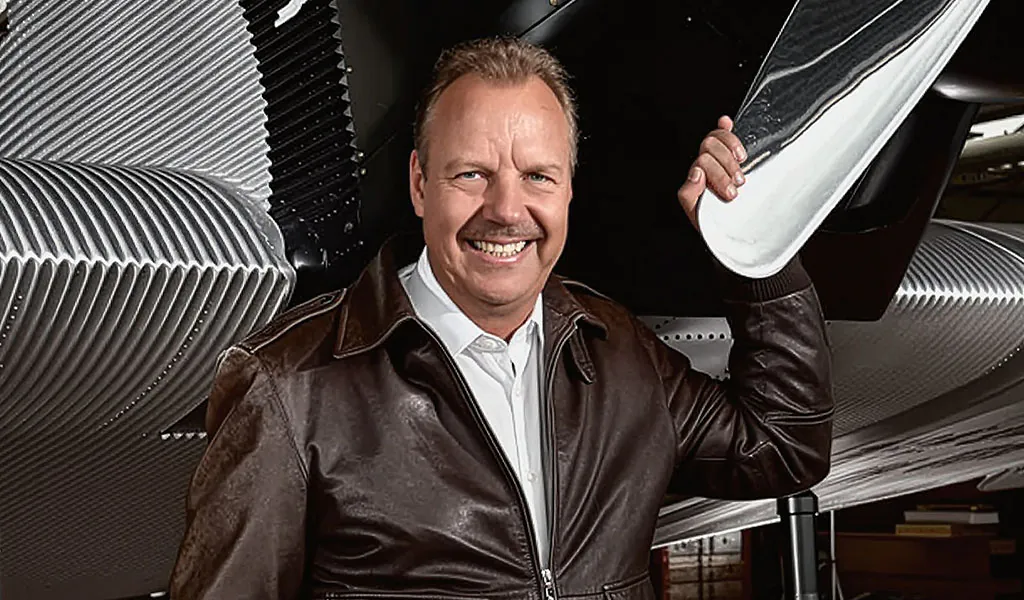
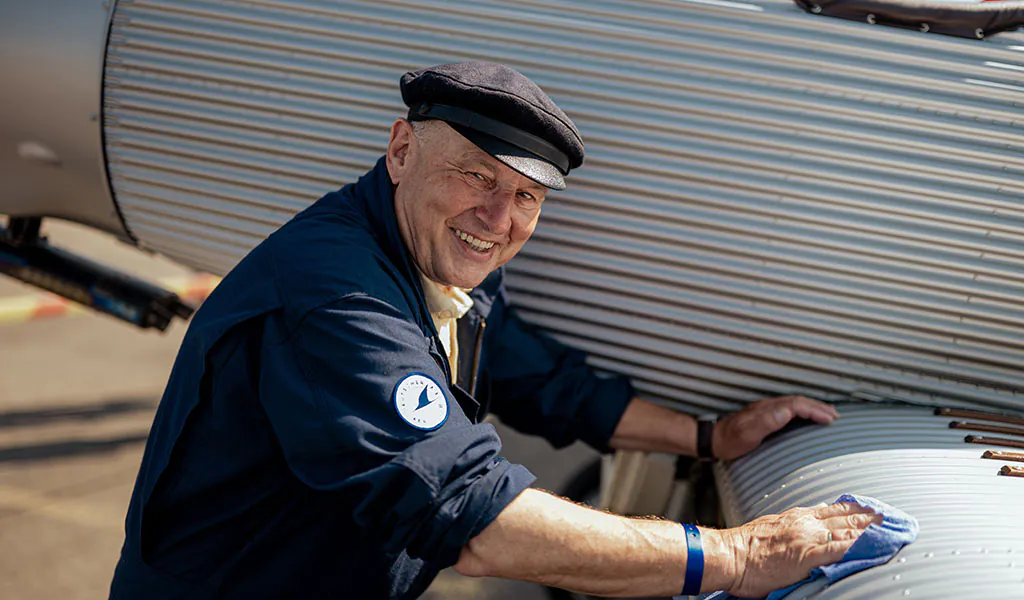
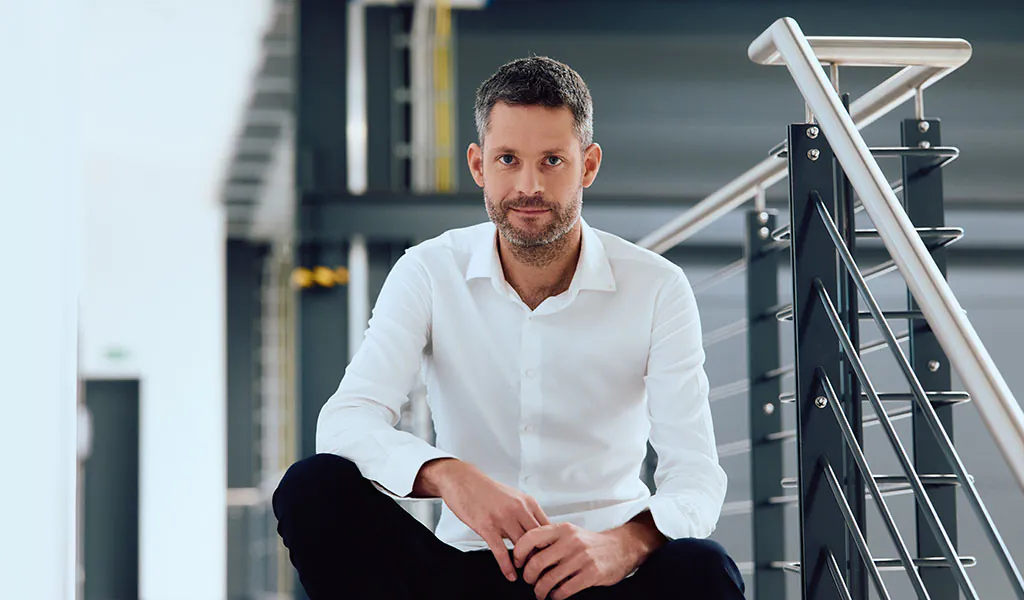
Battle Creek, MI 49015 USA

